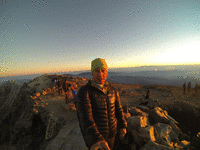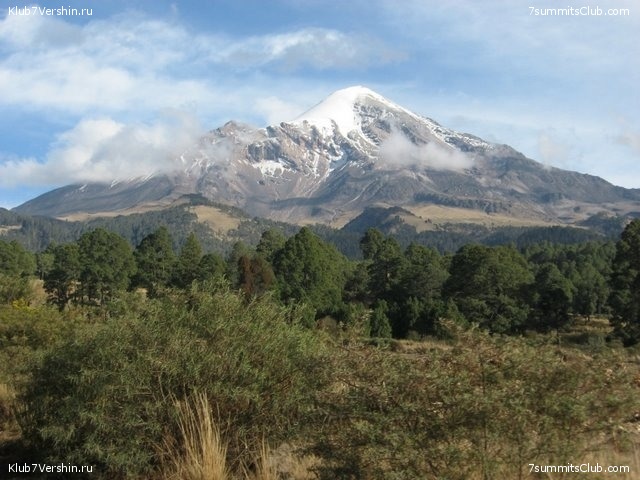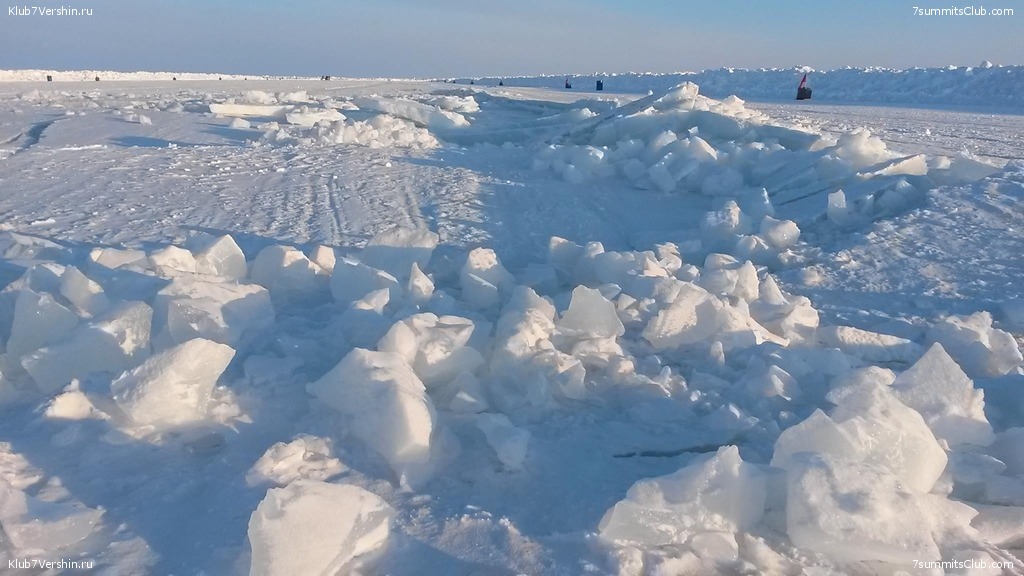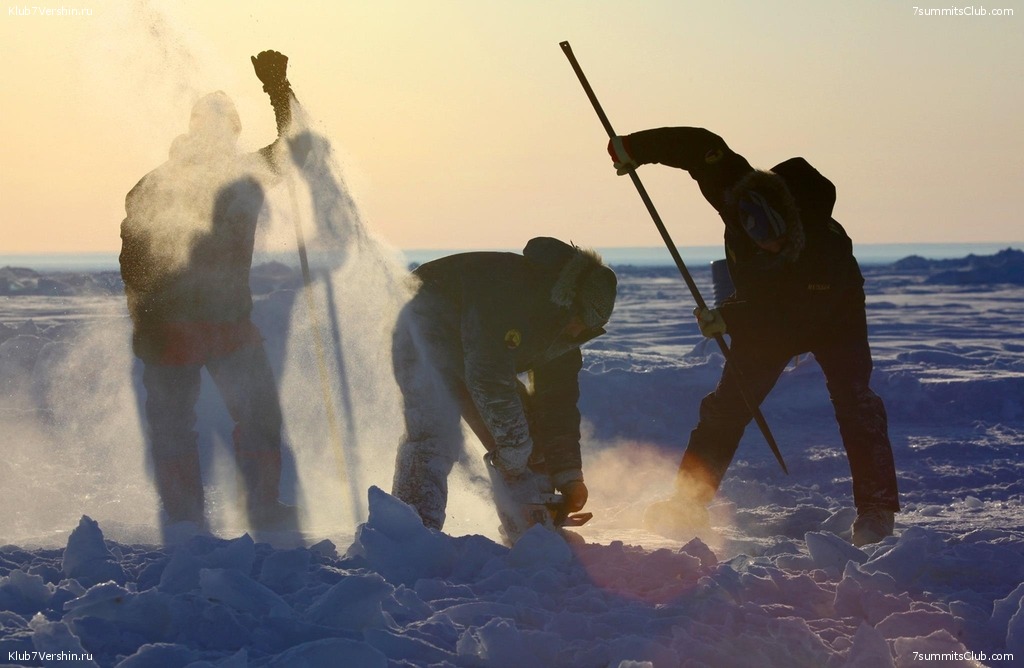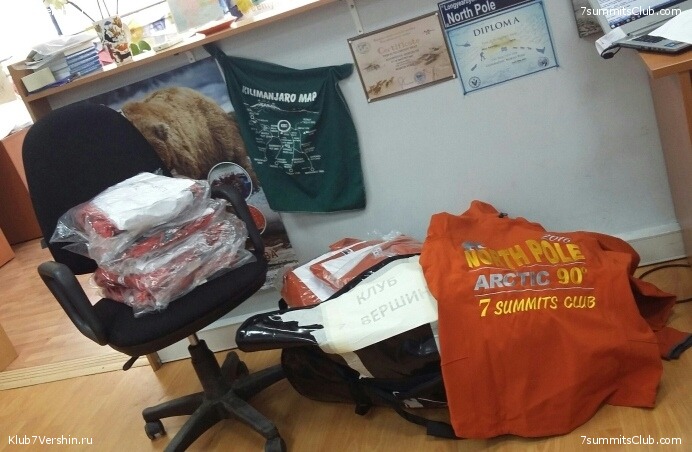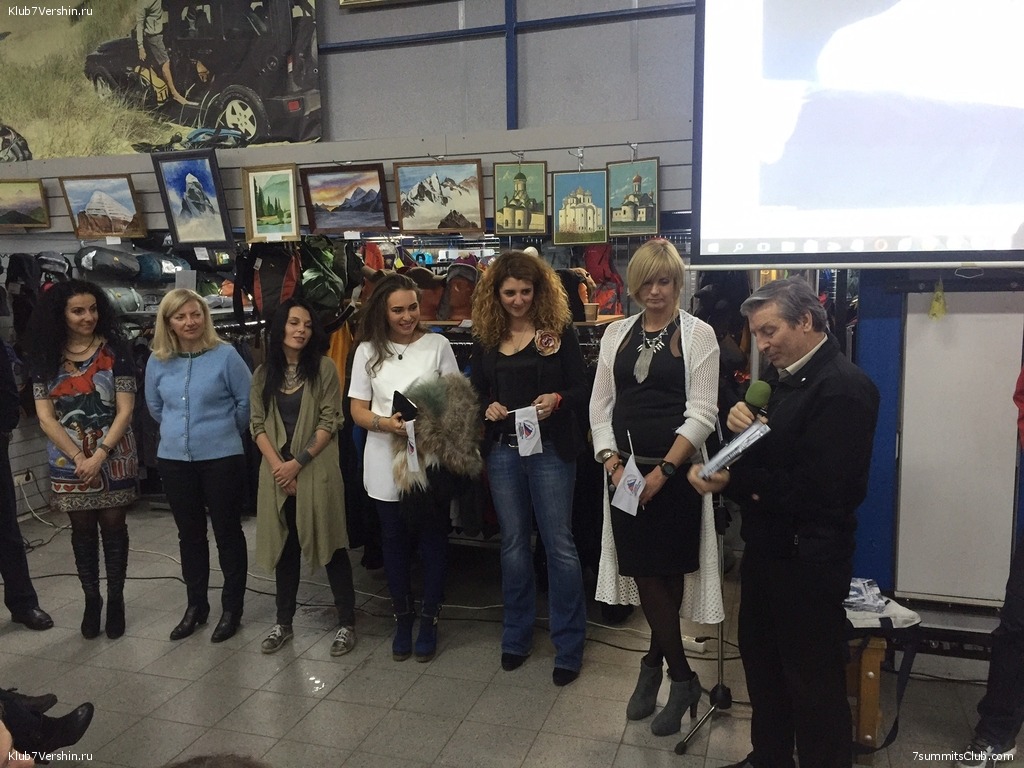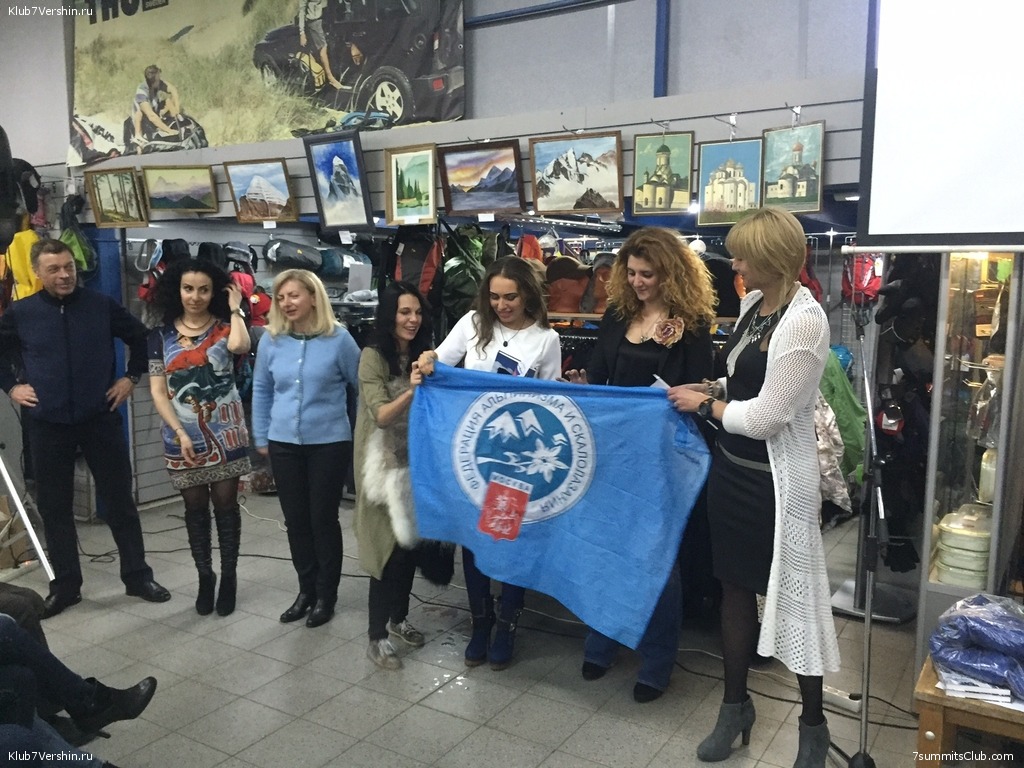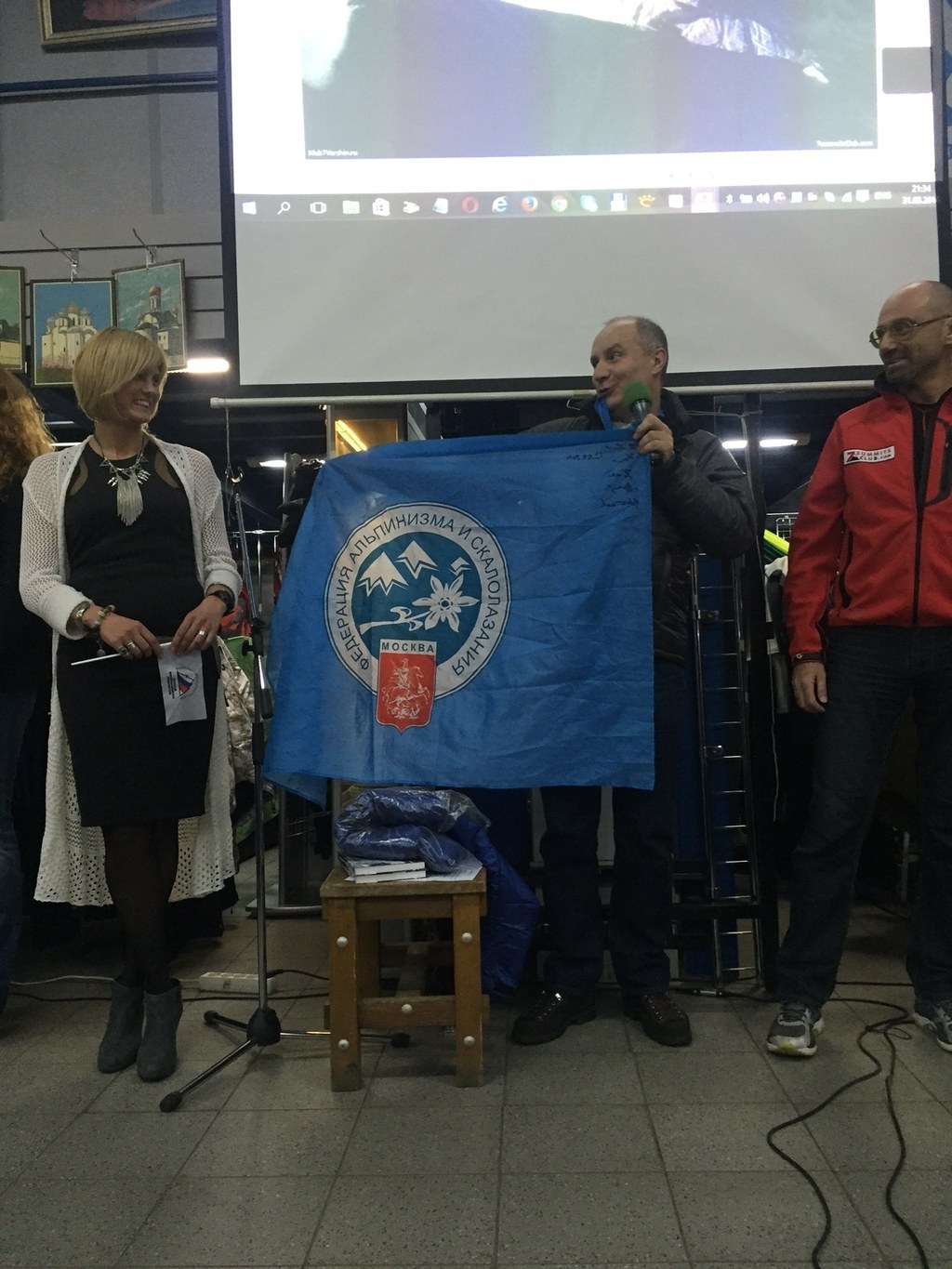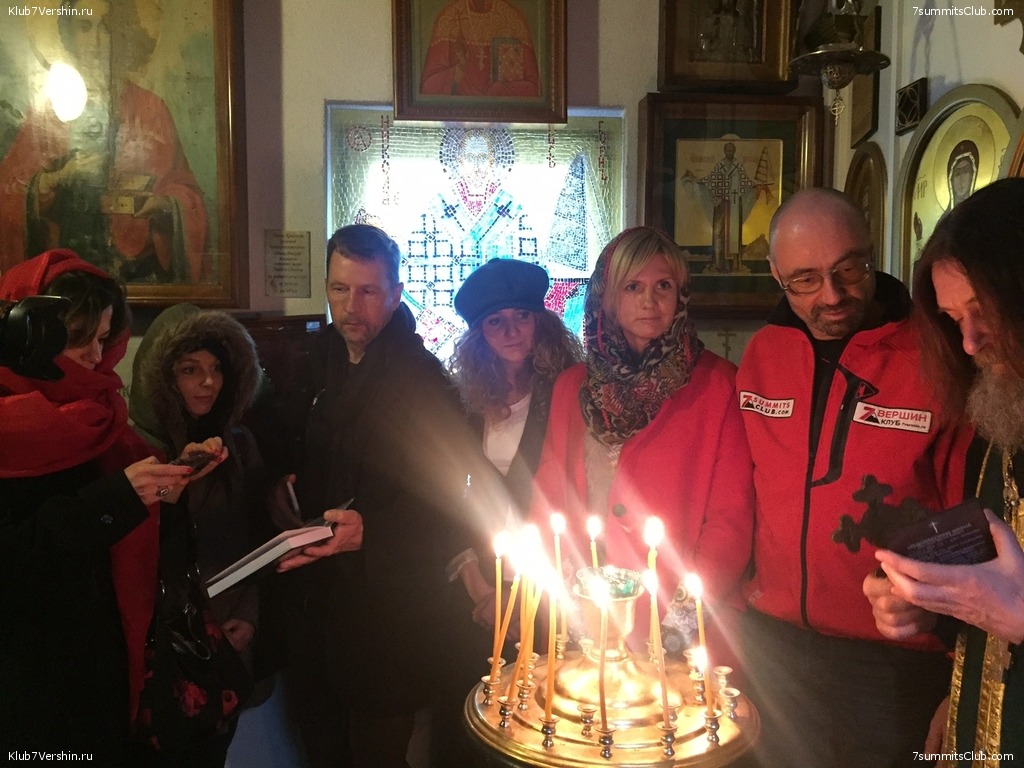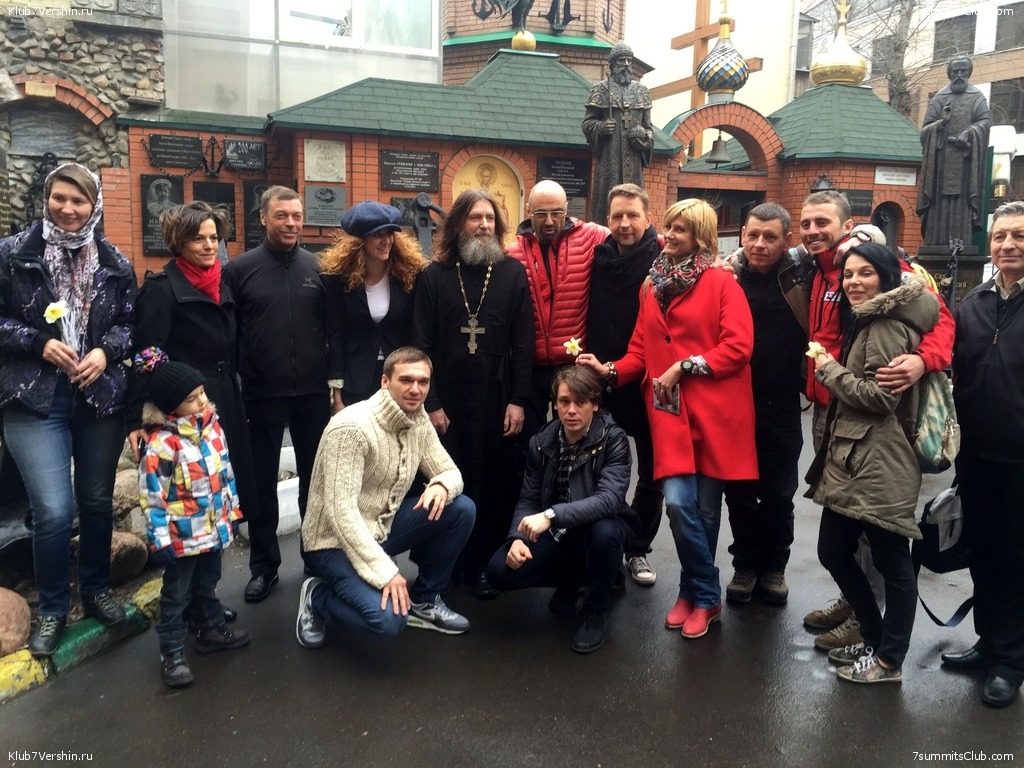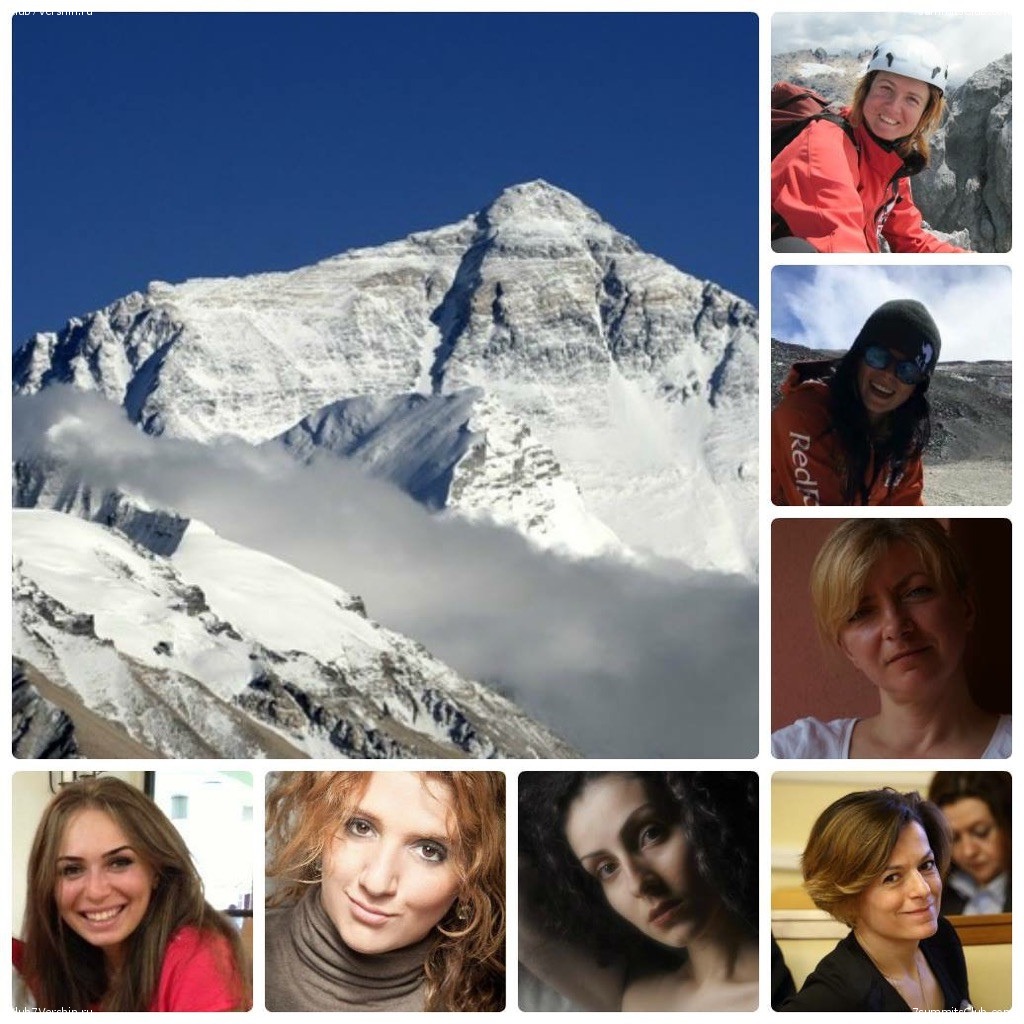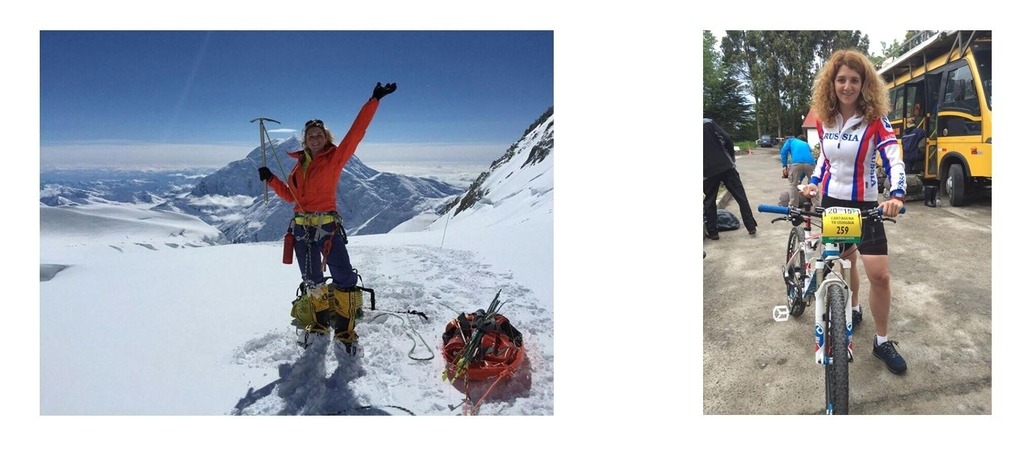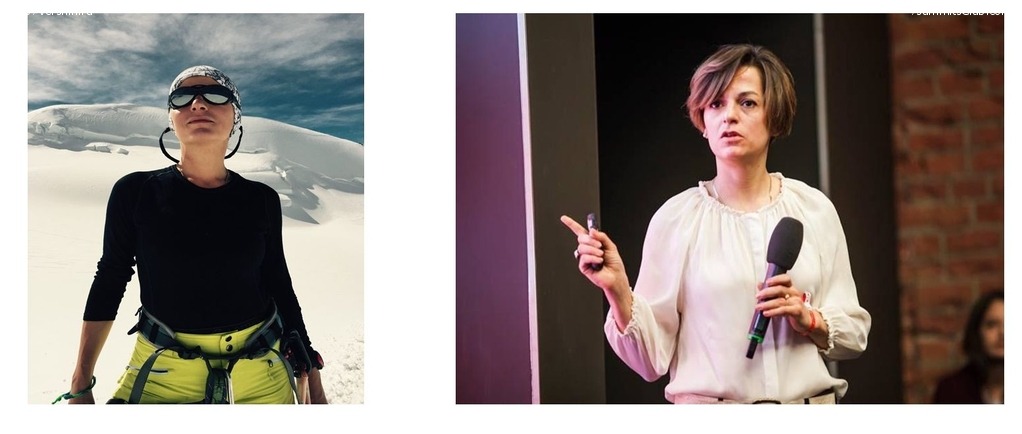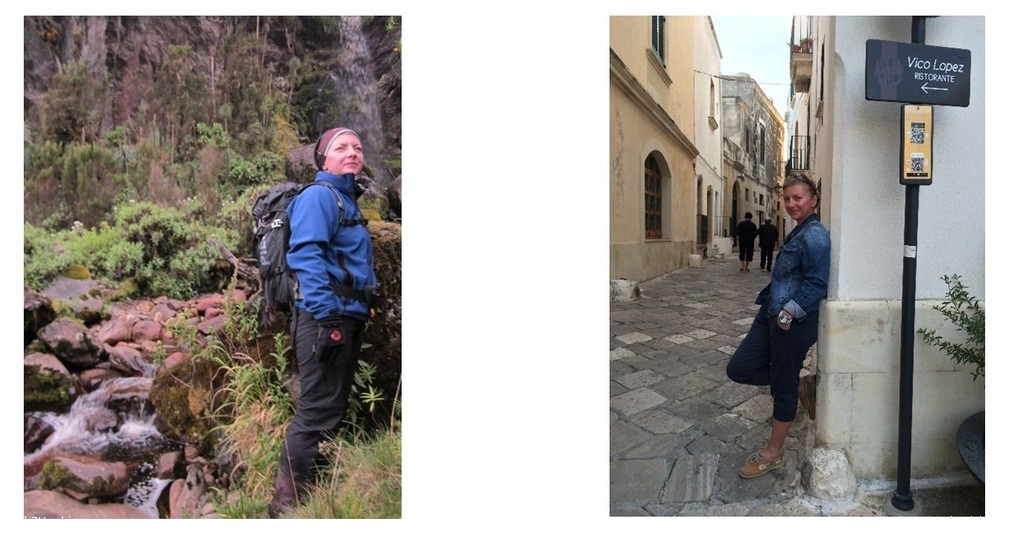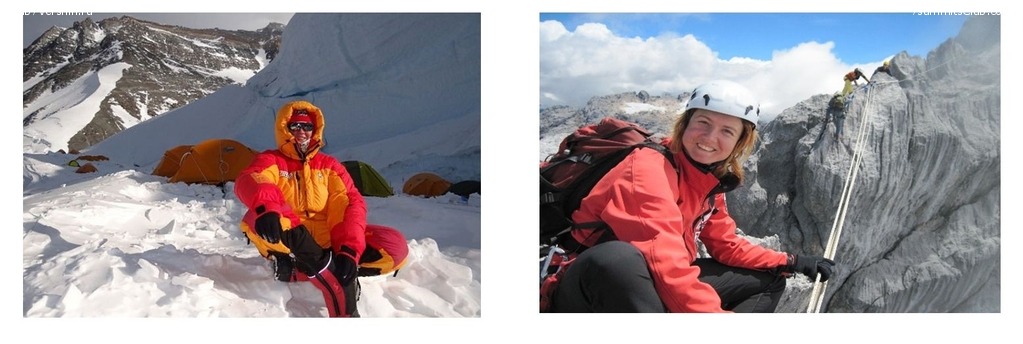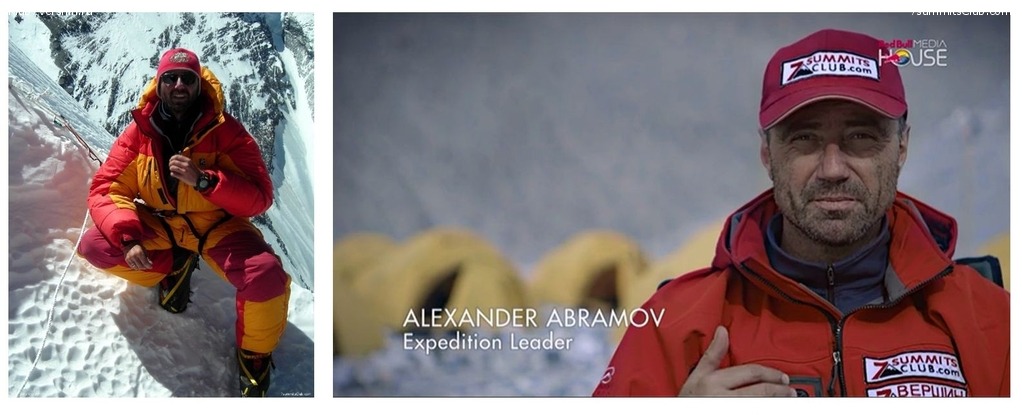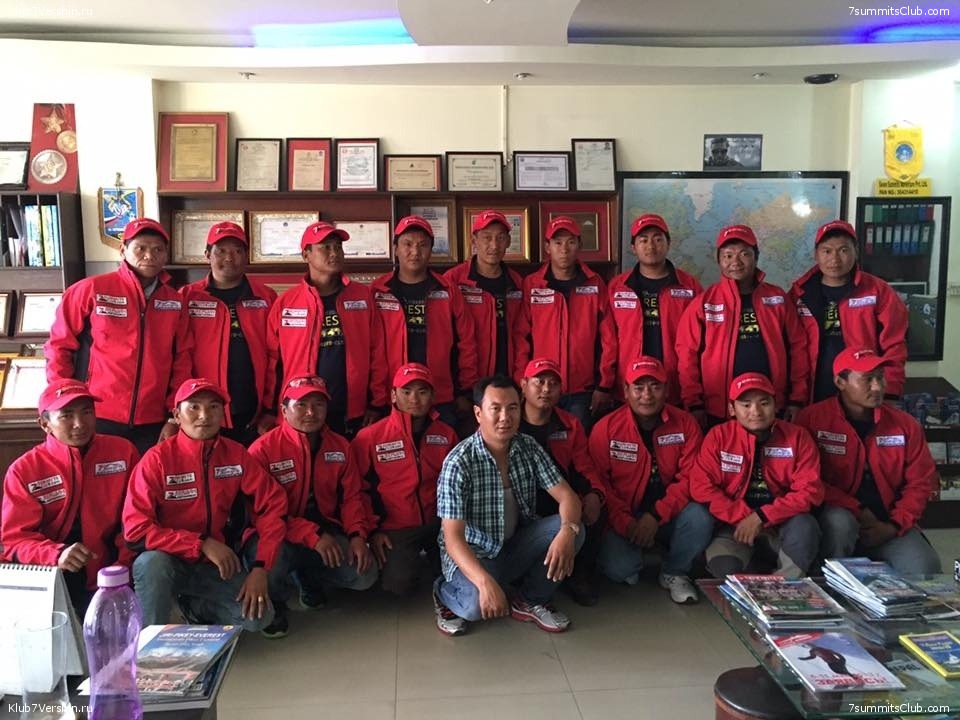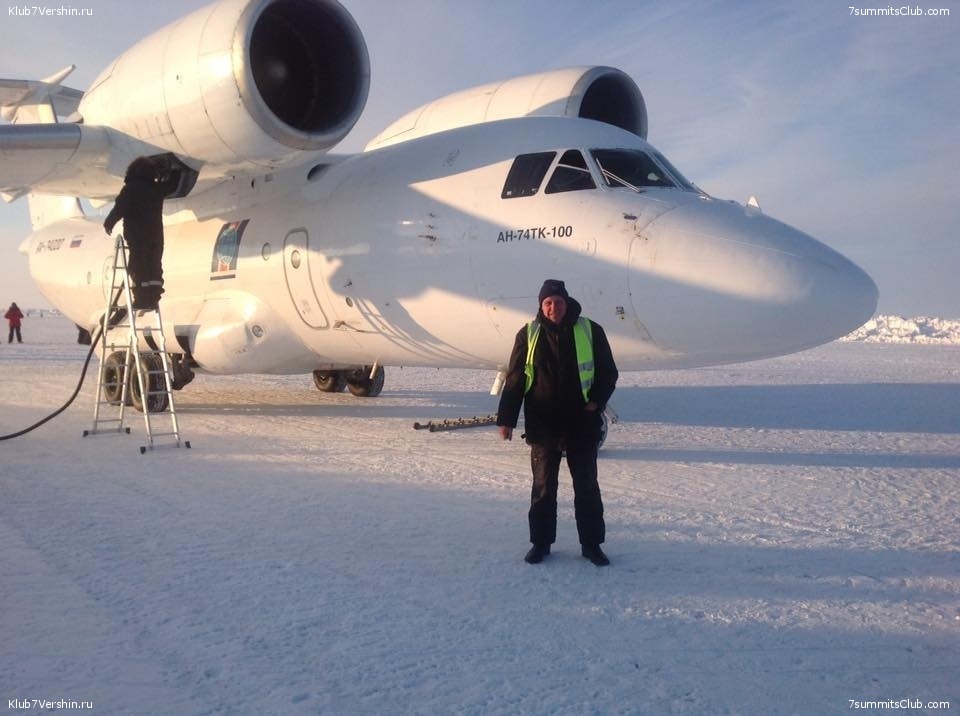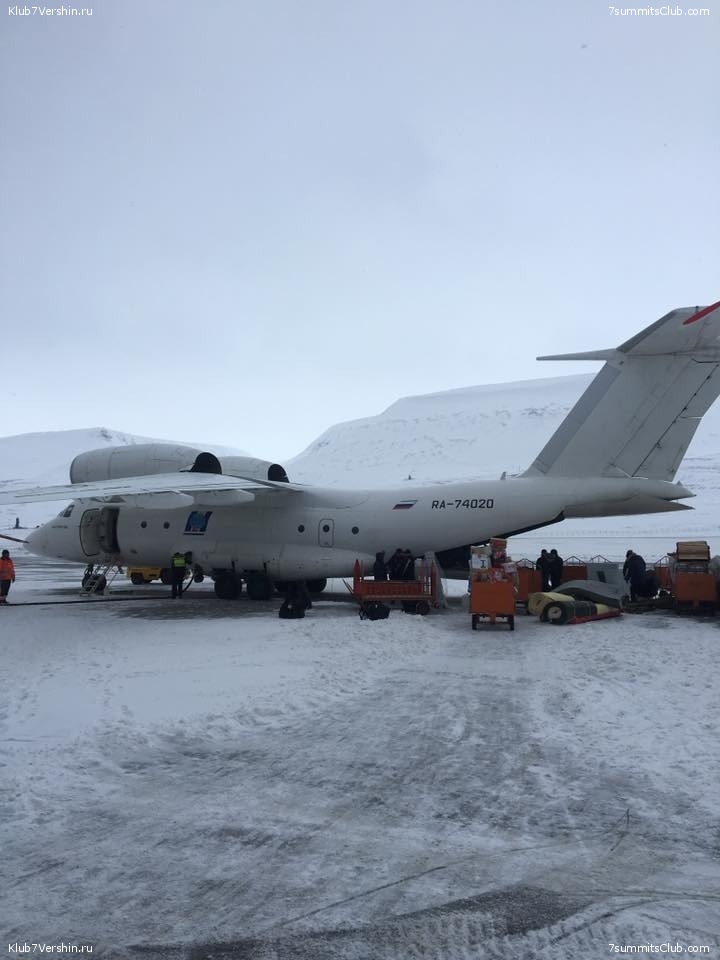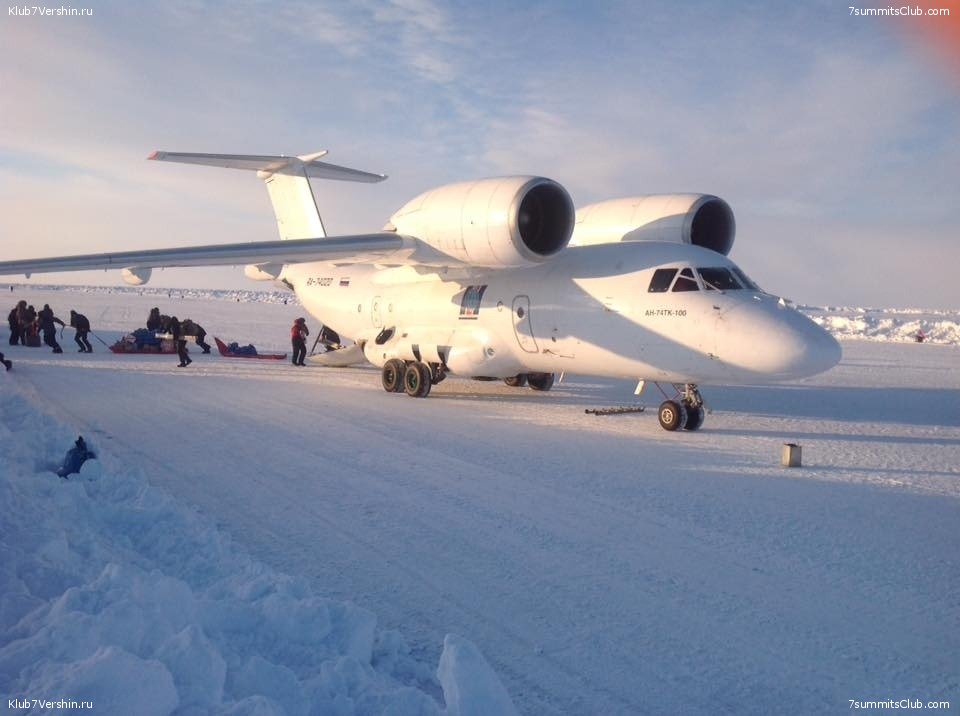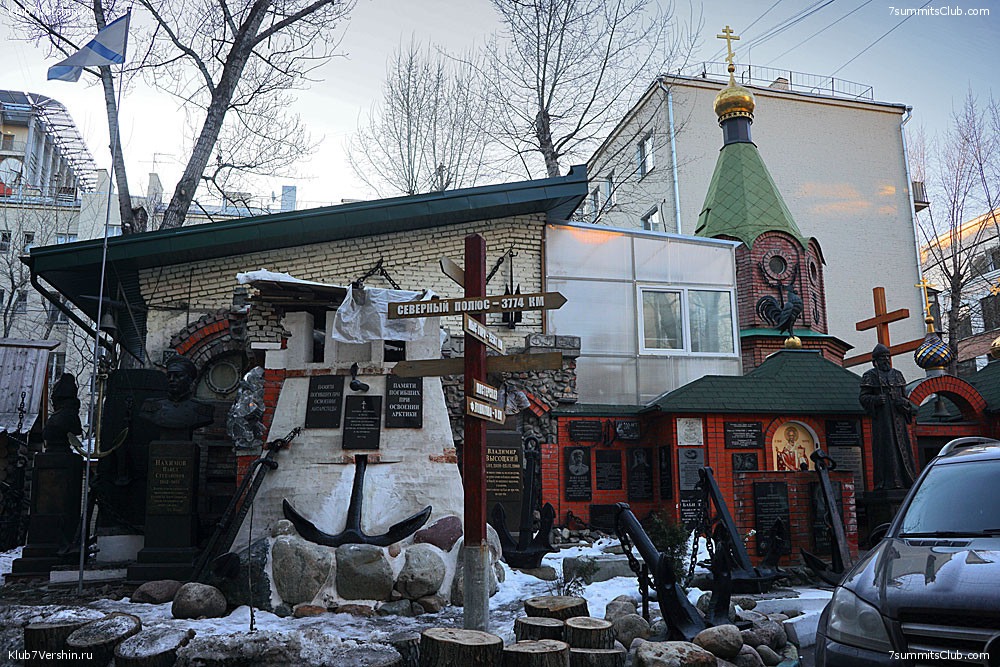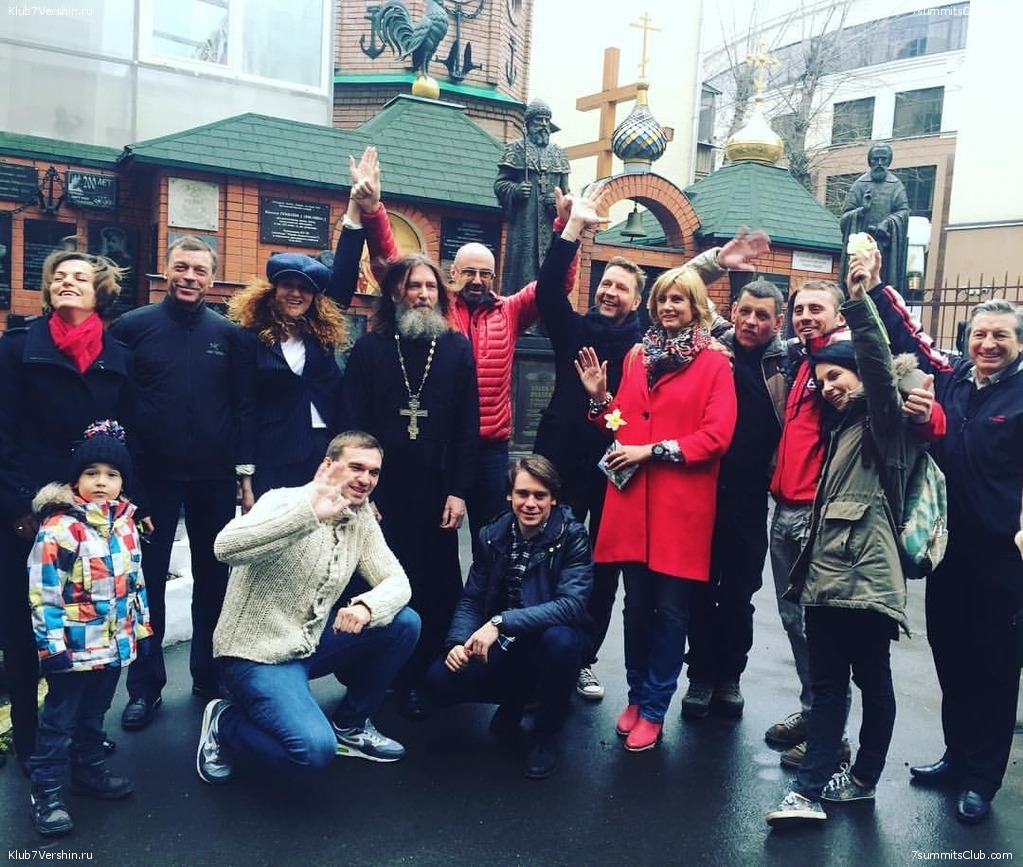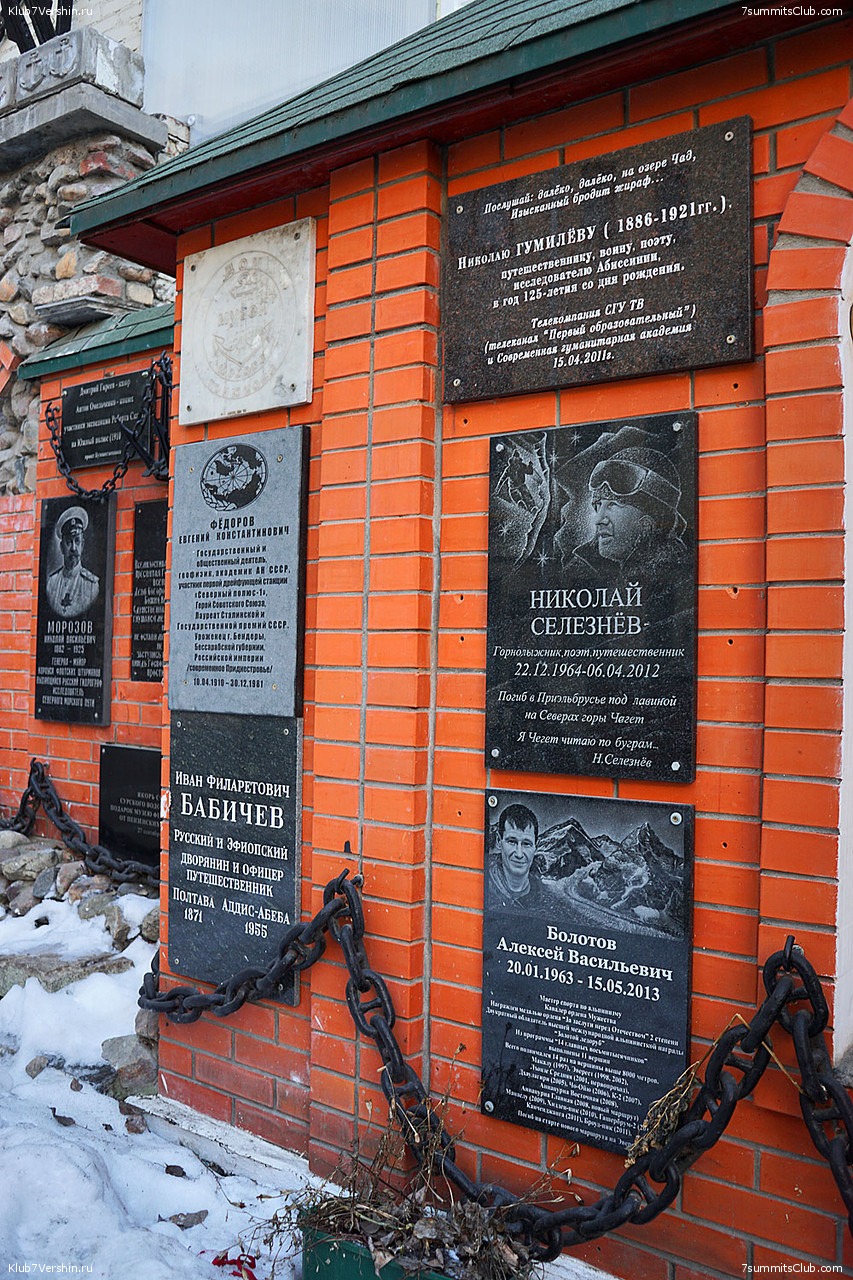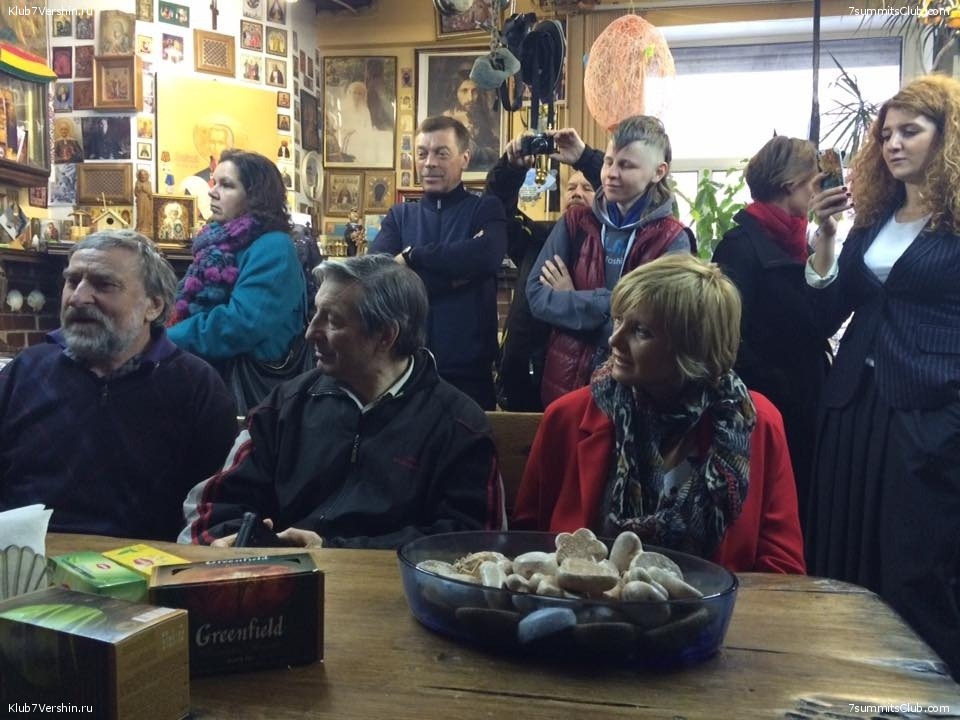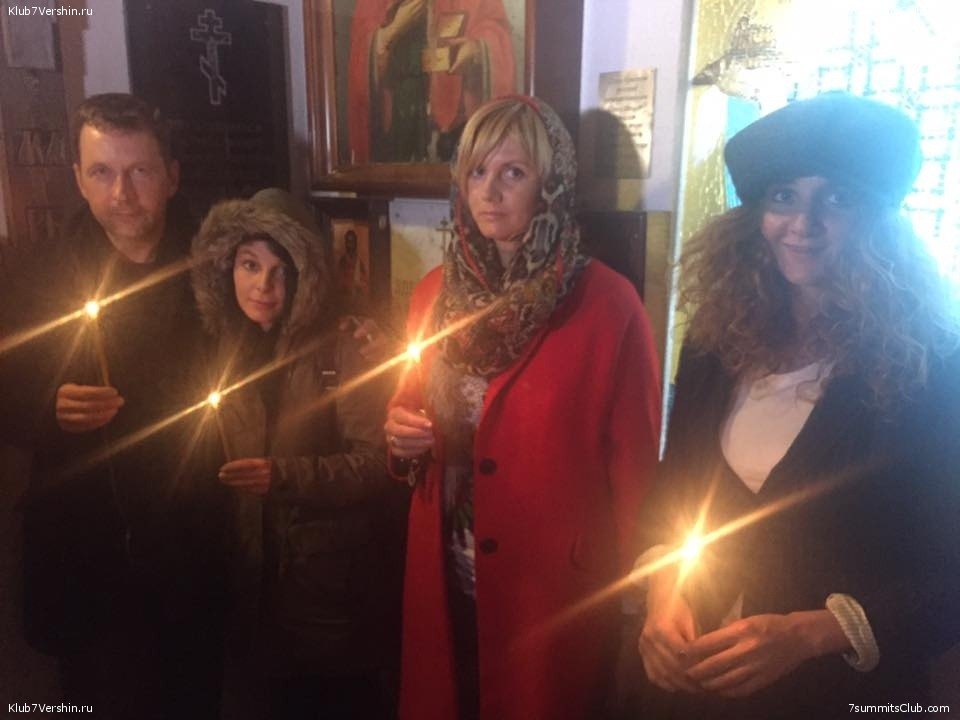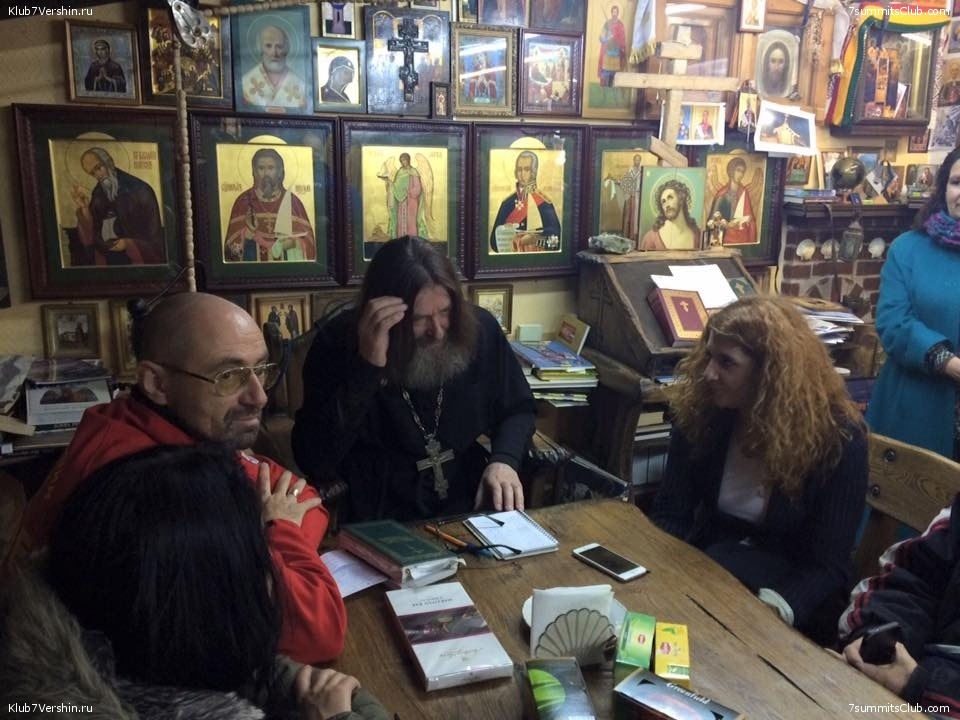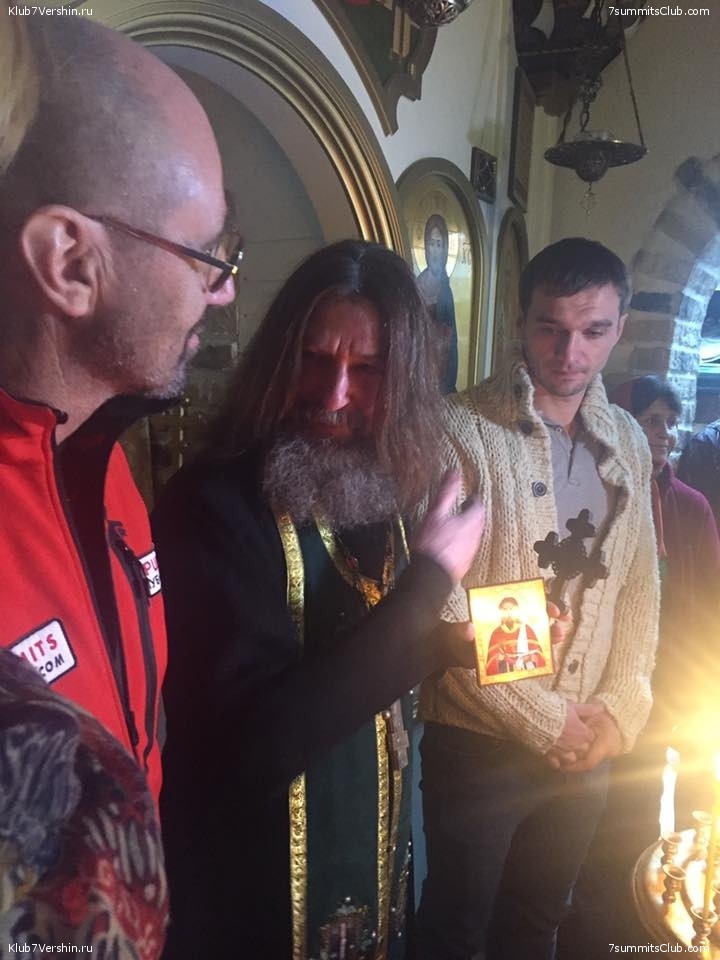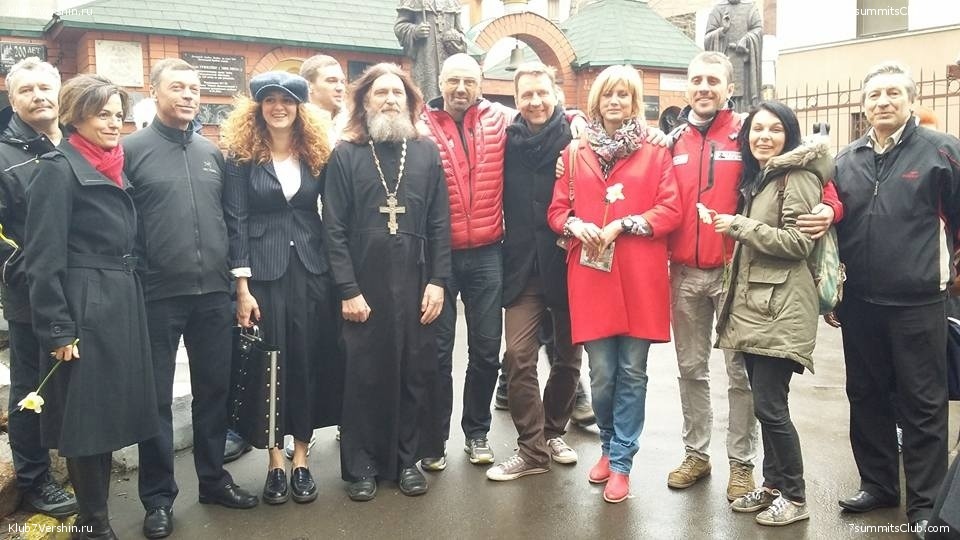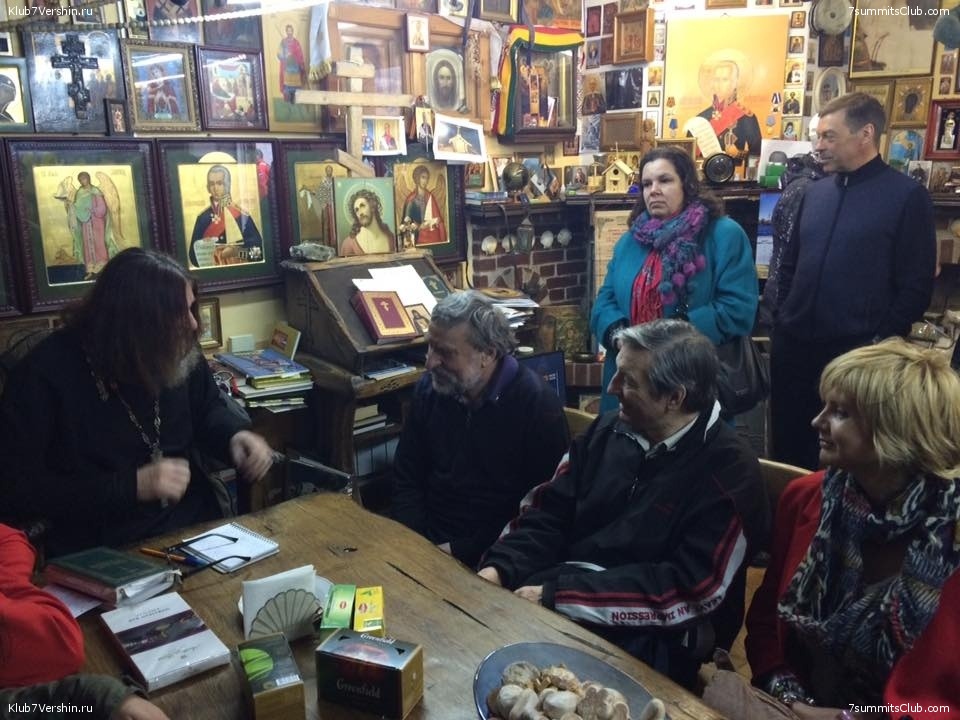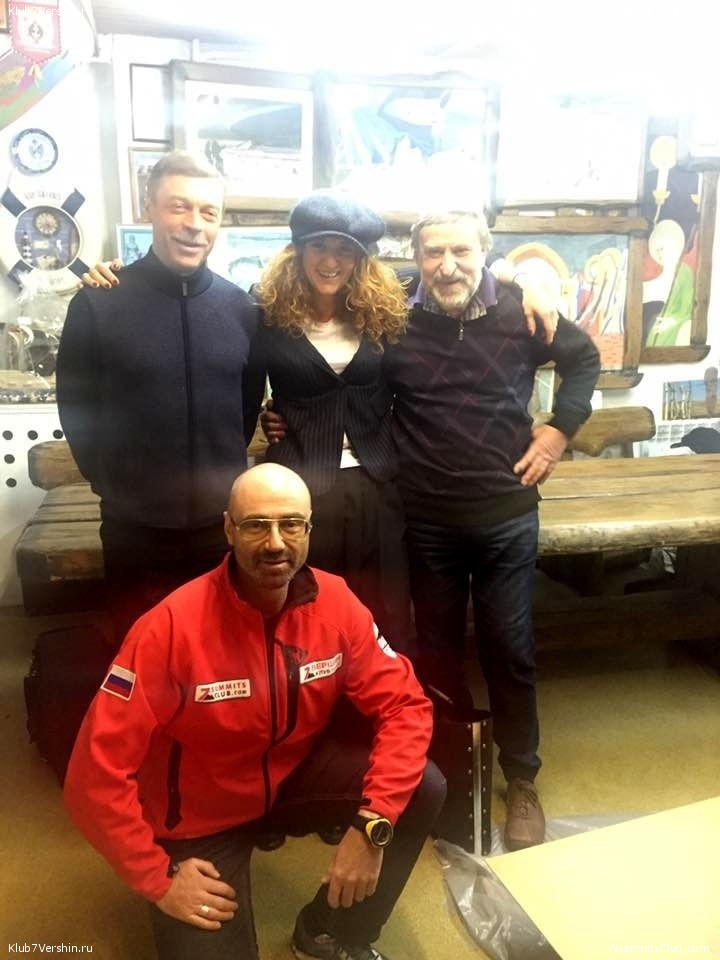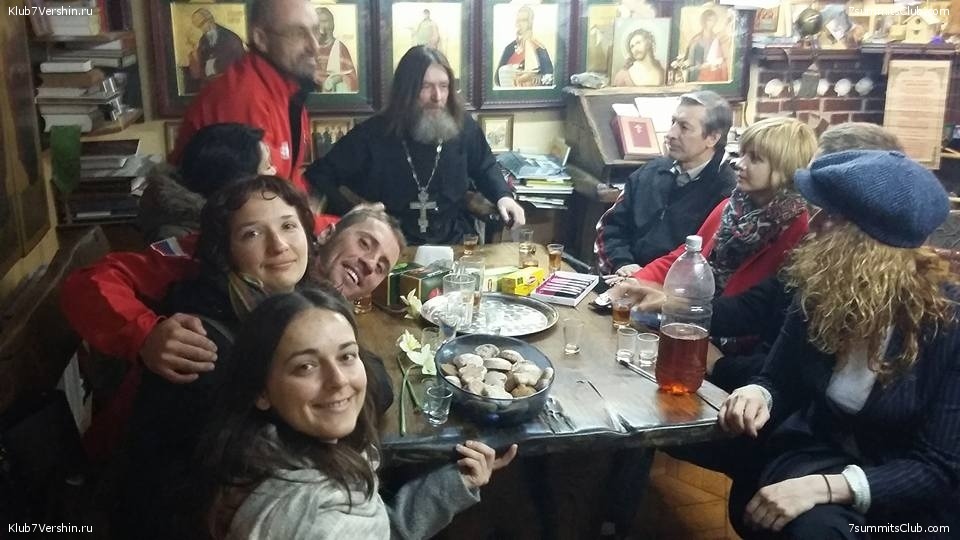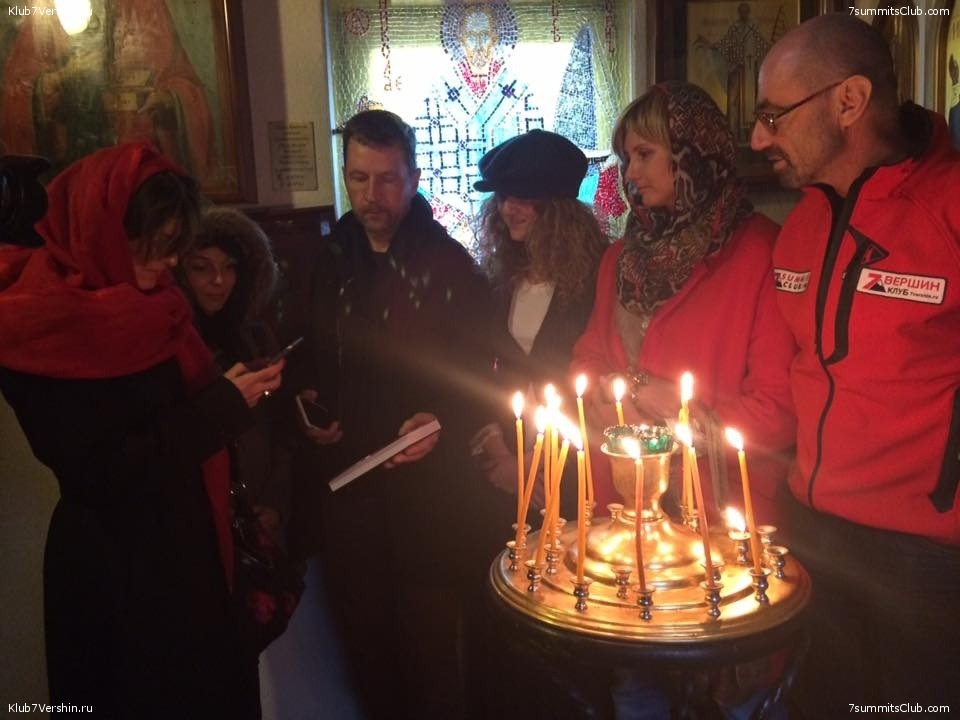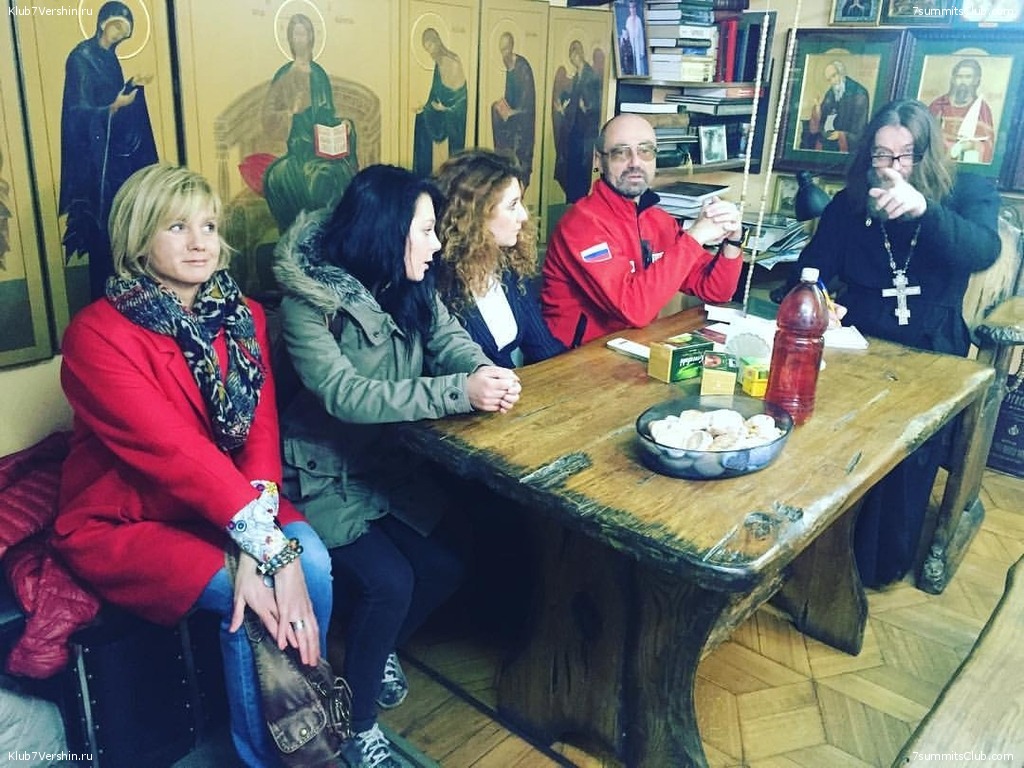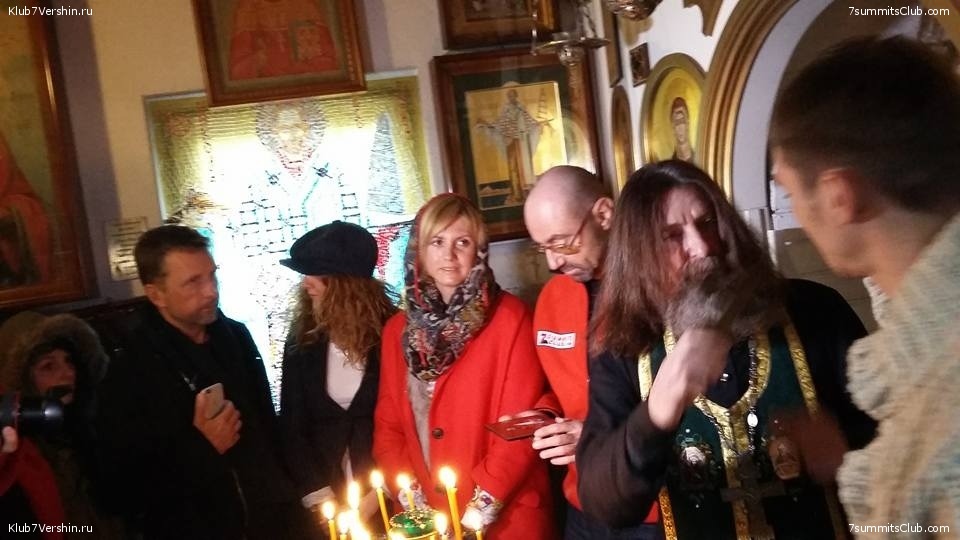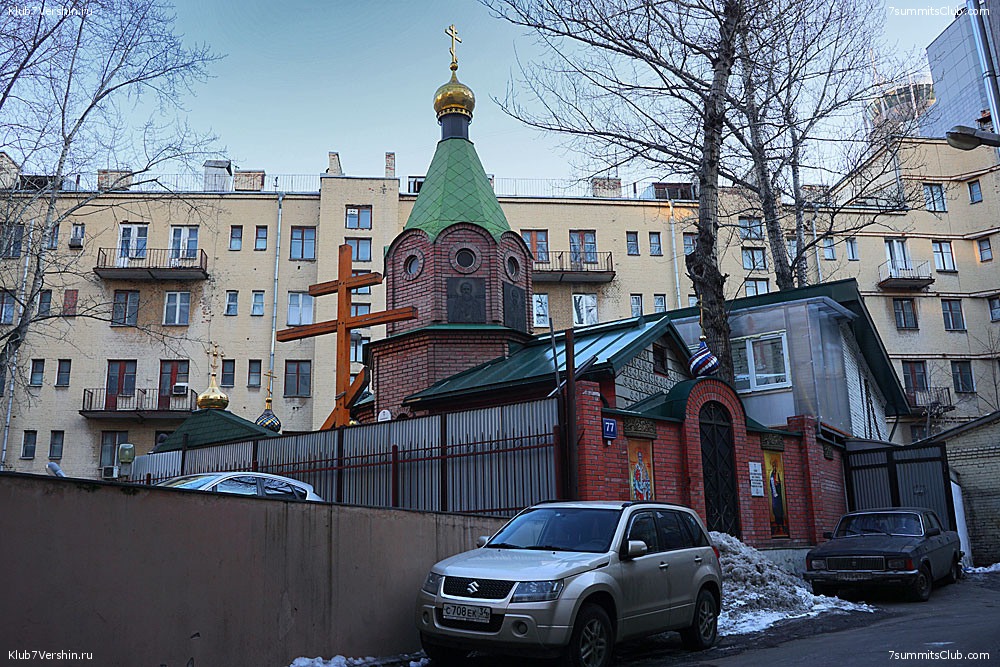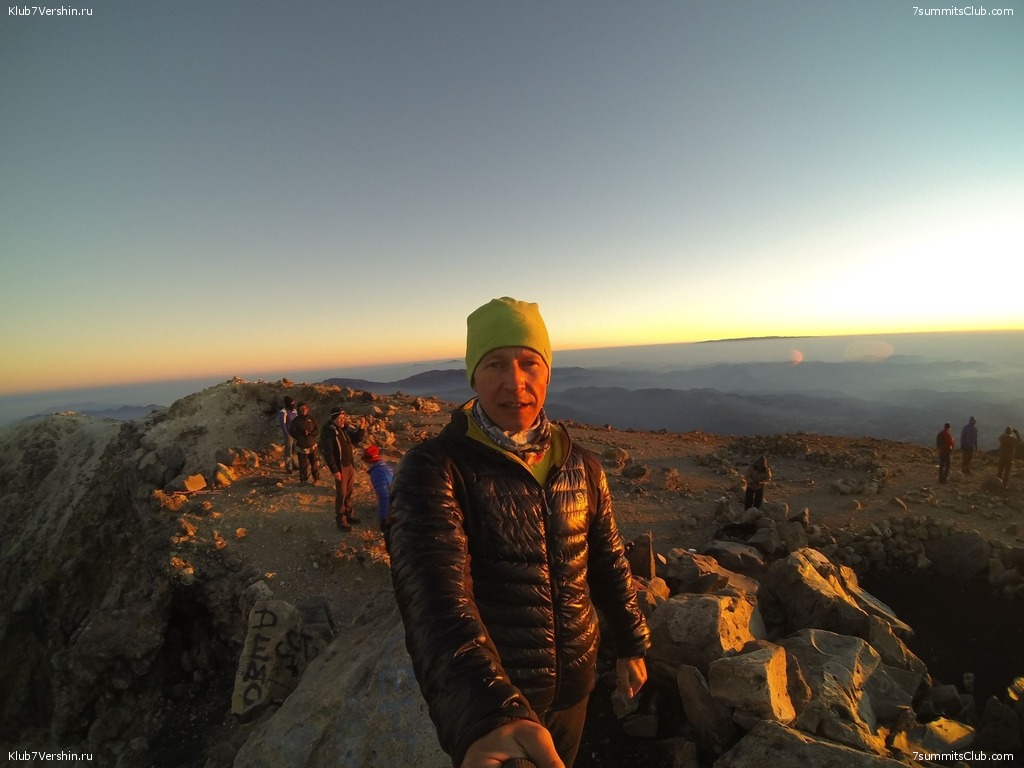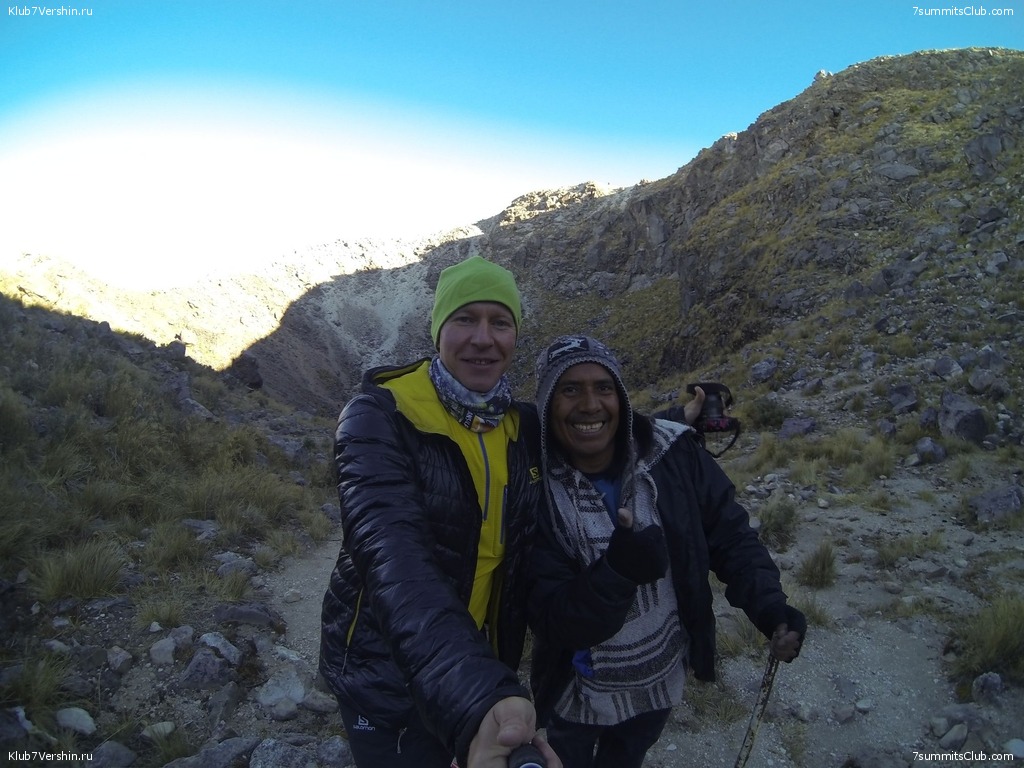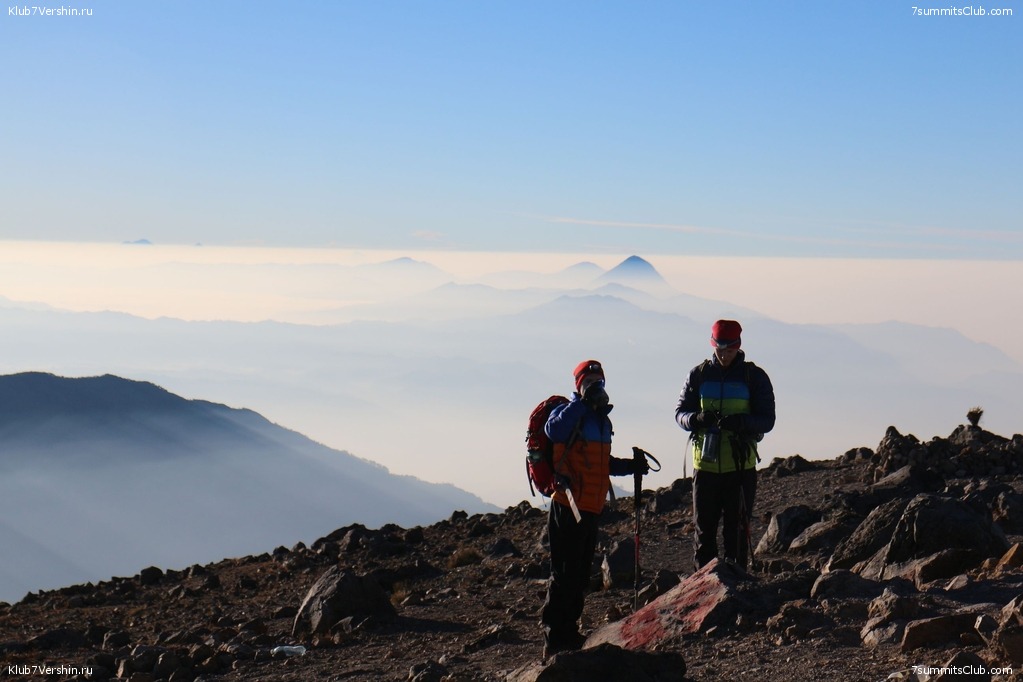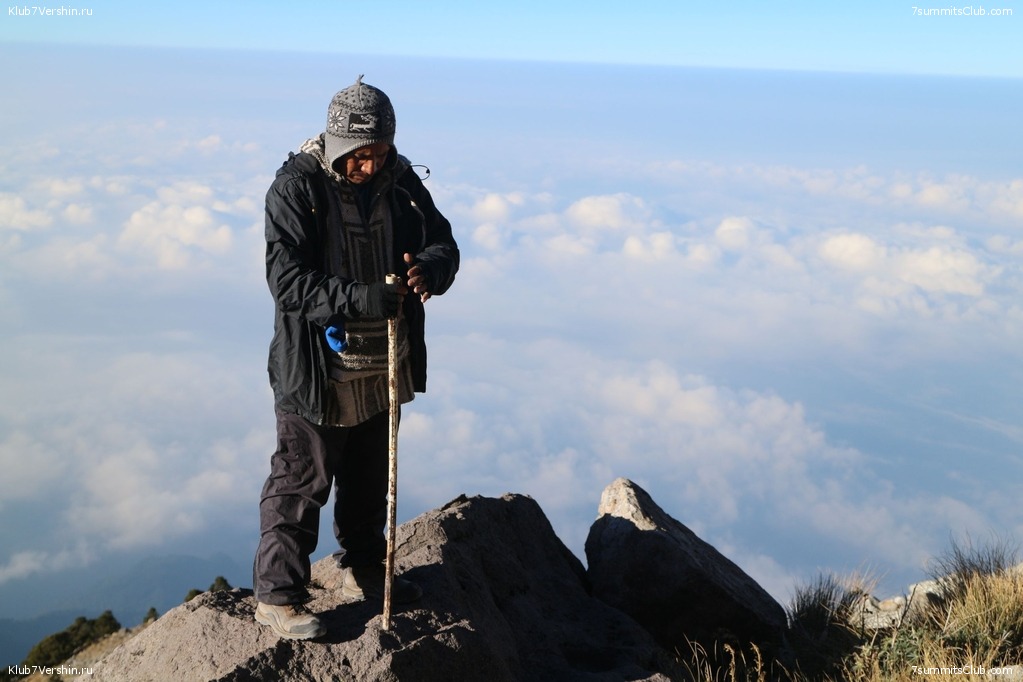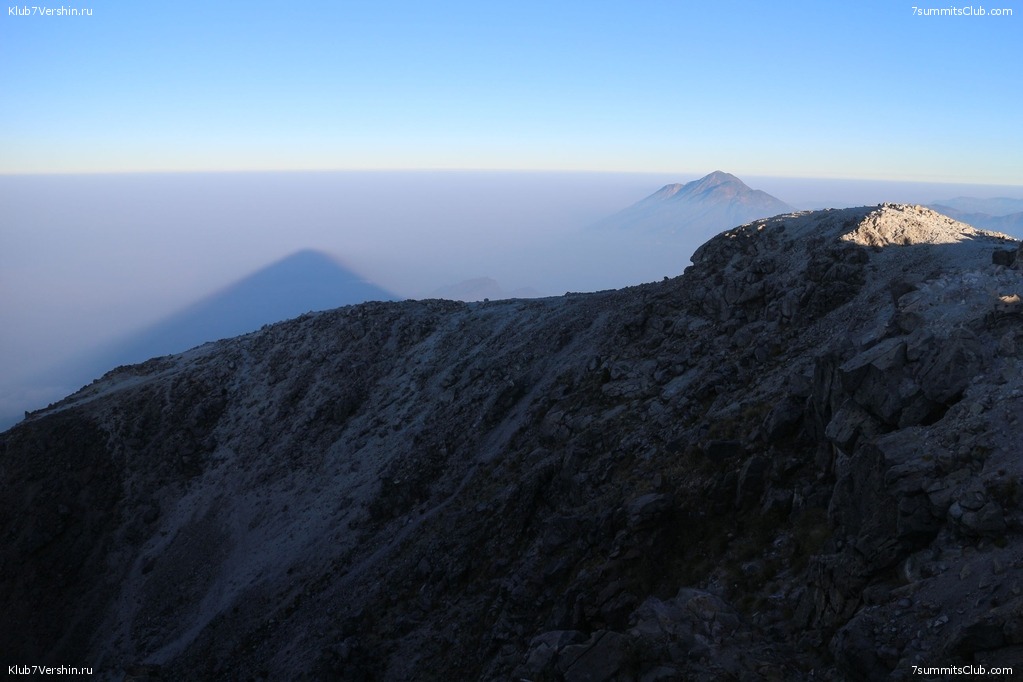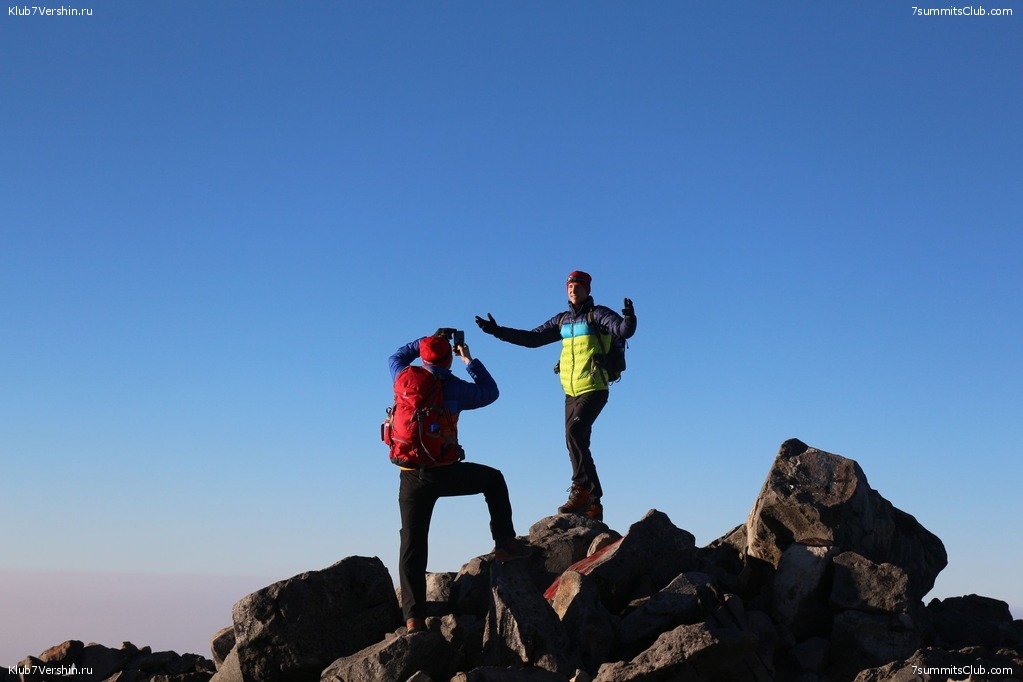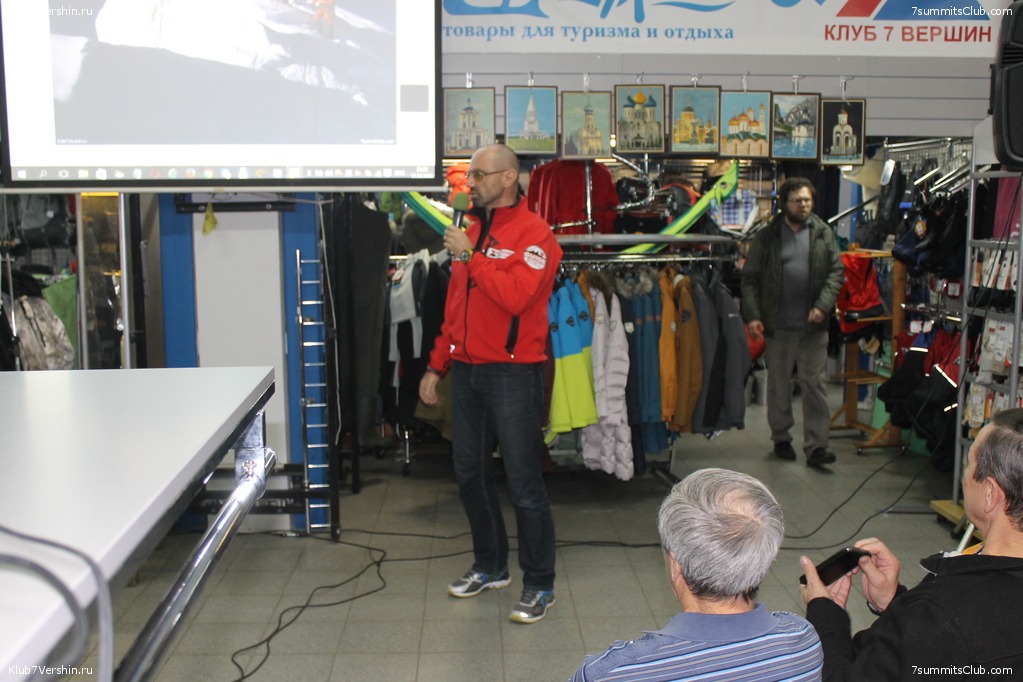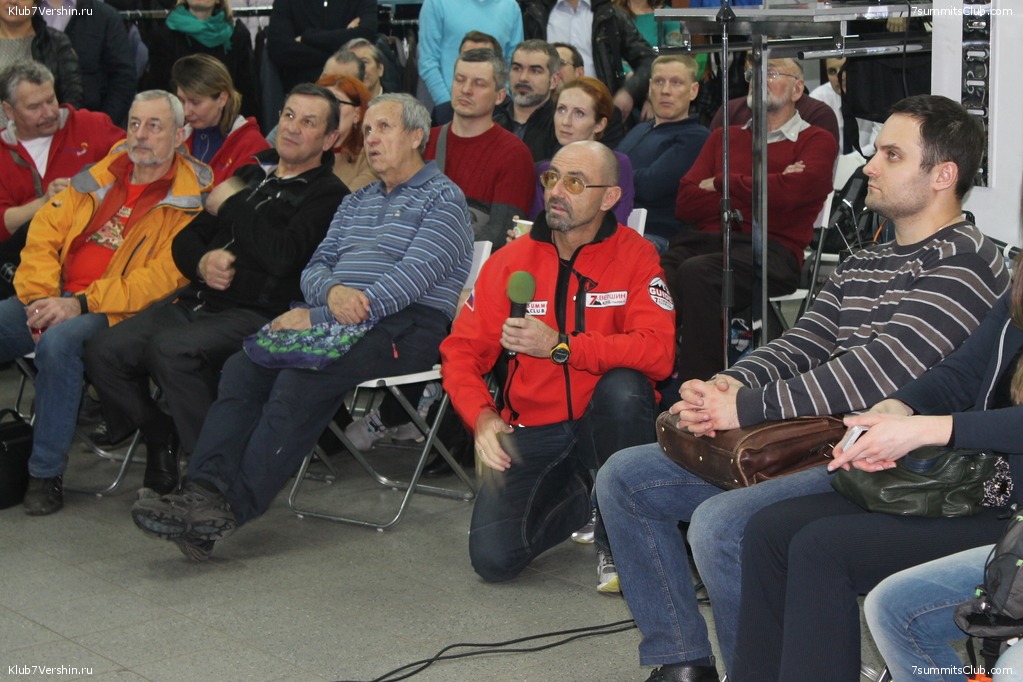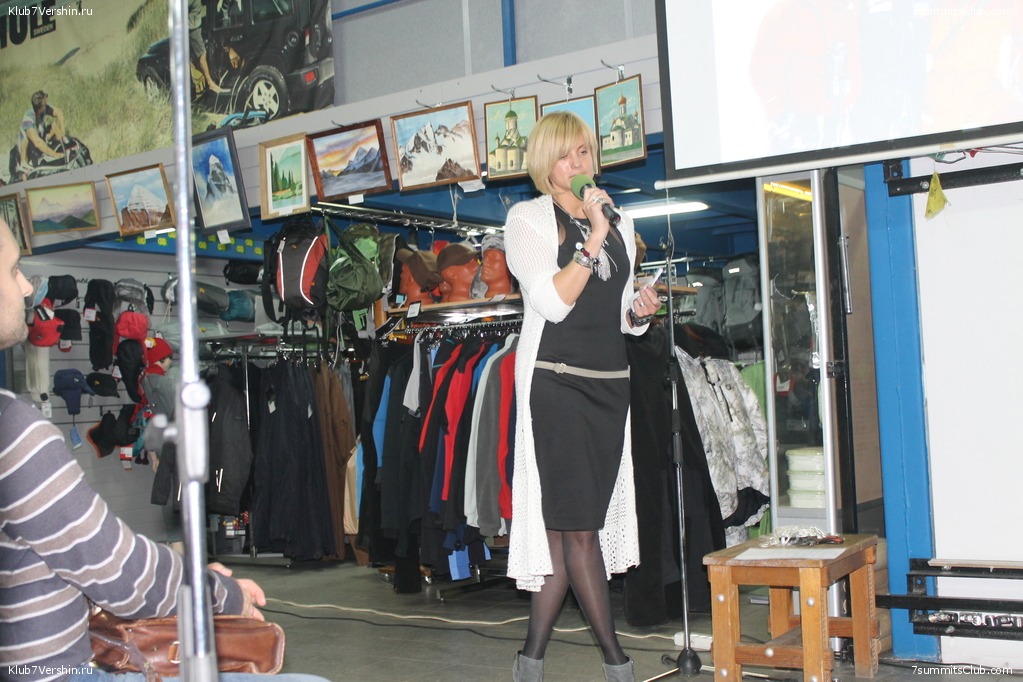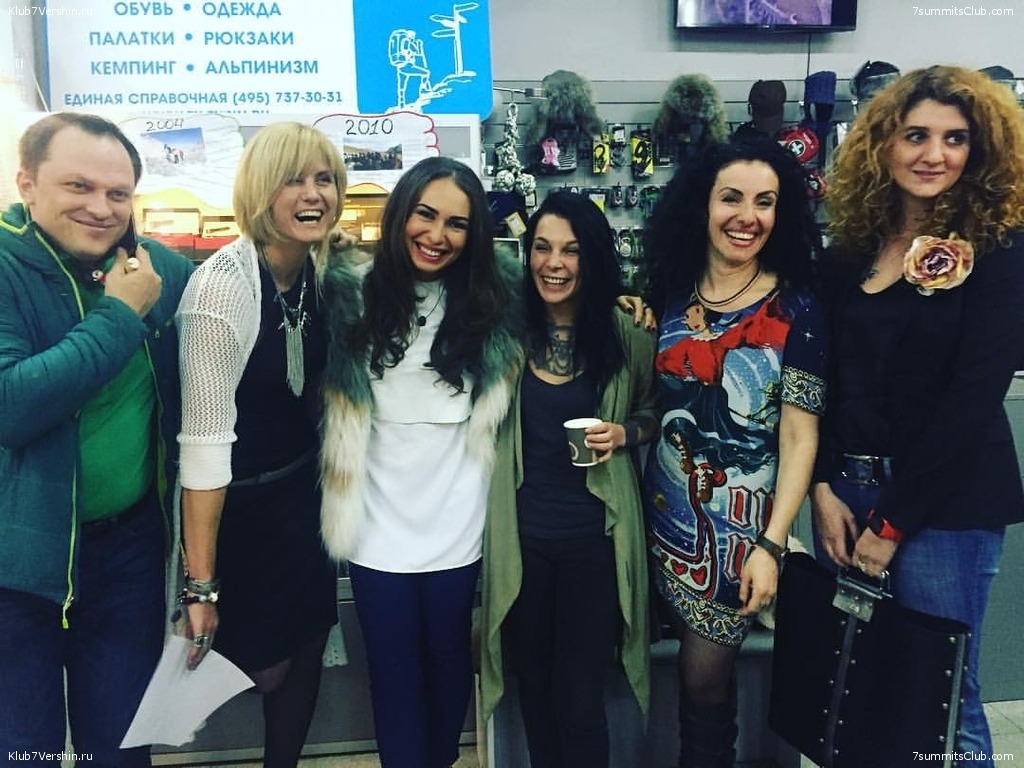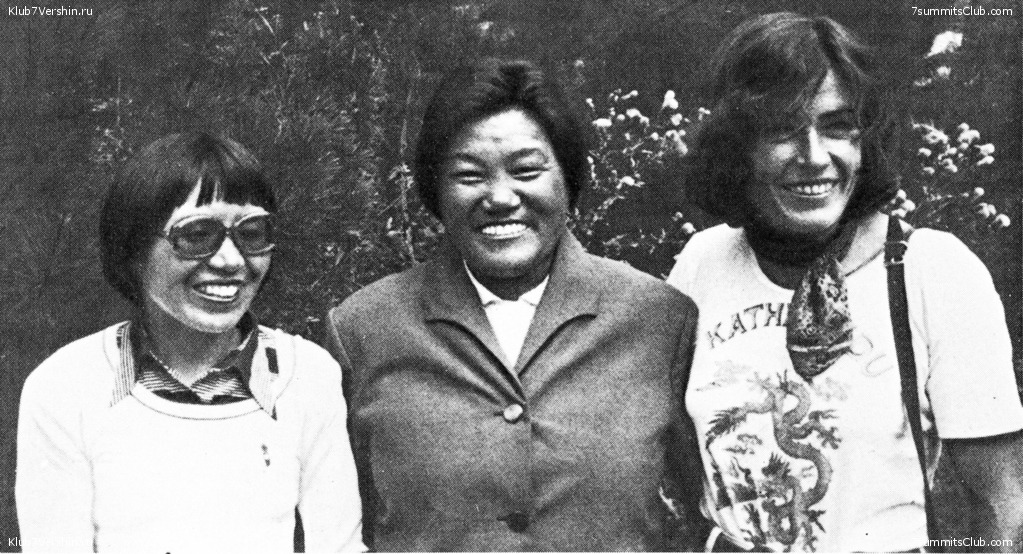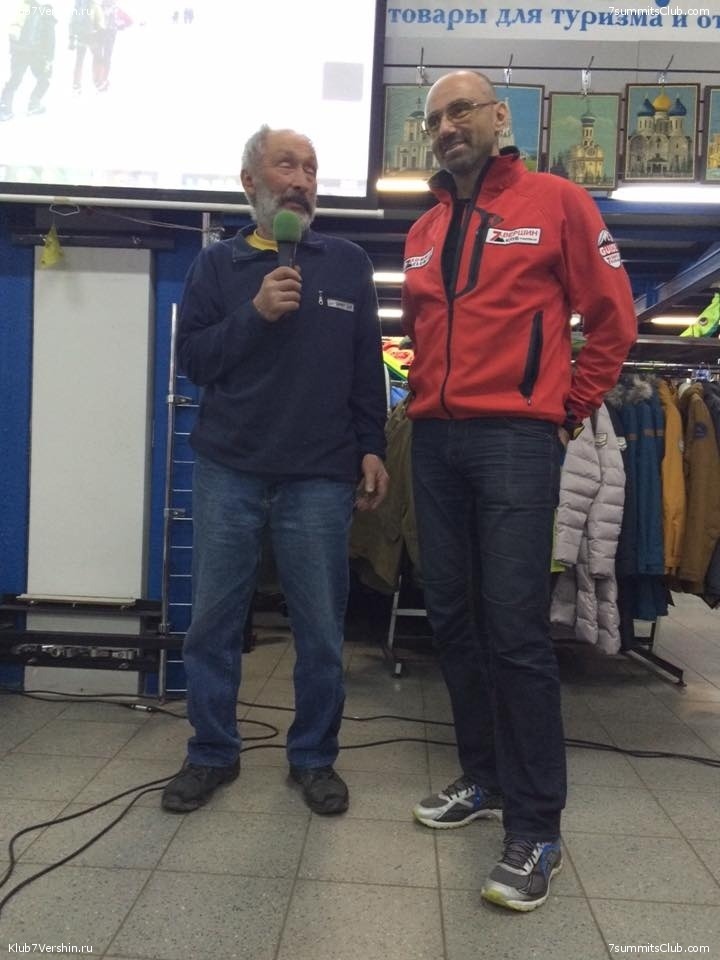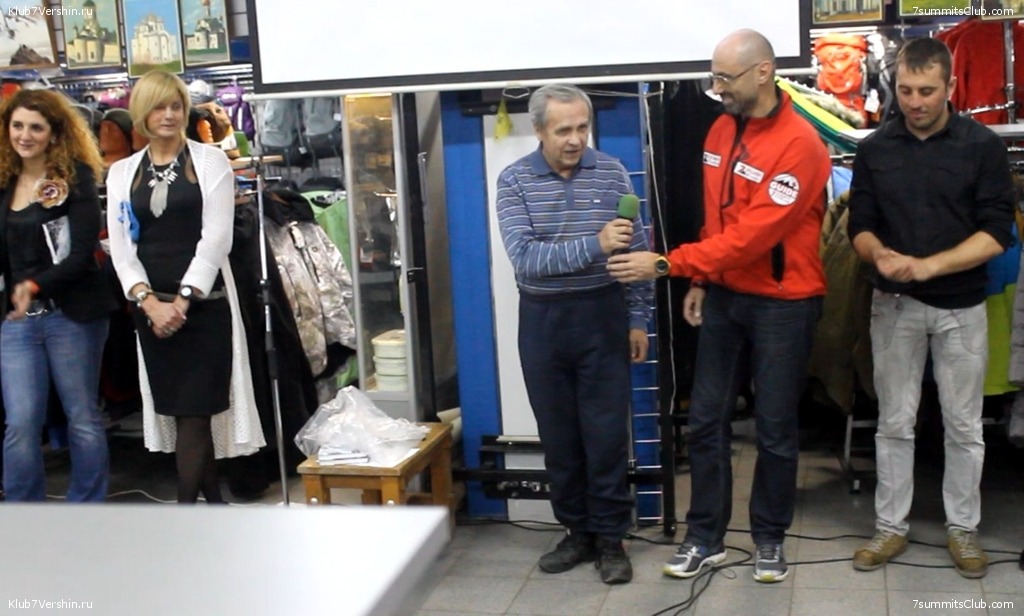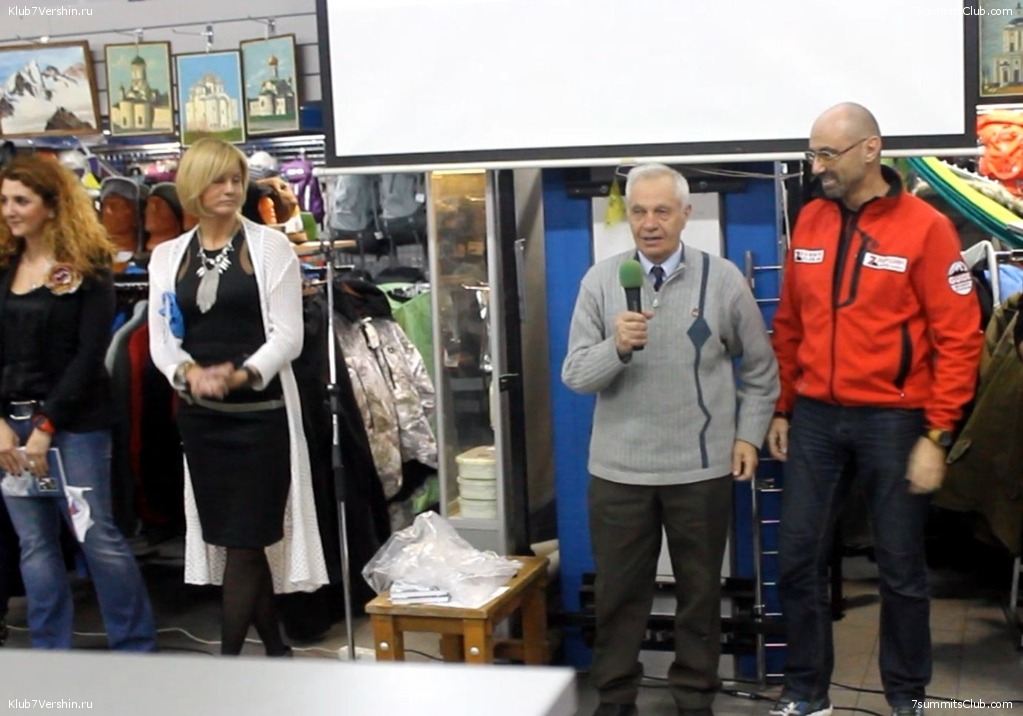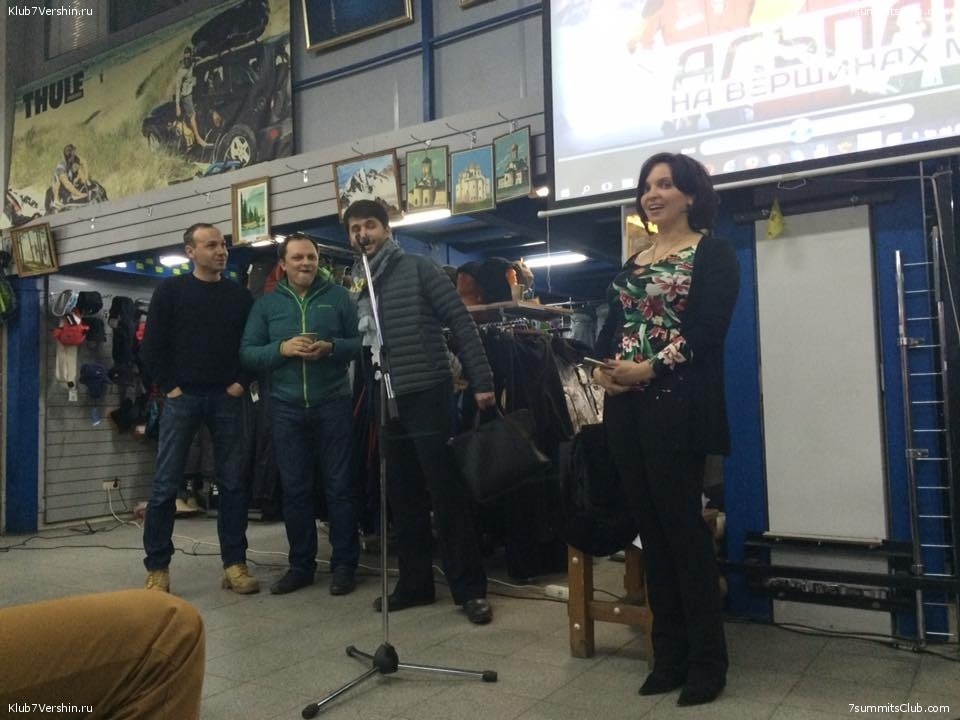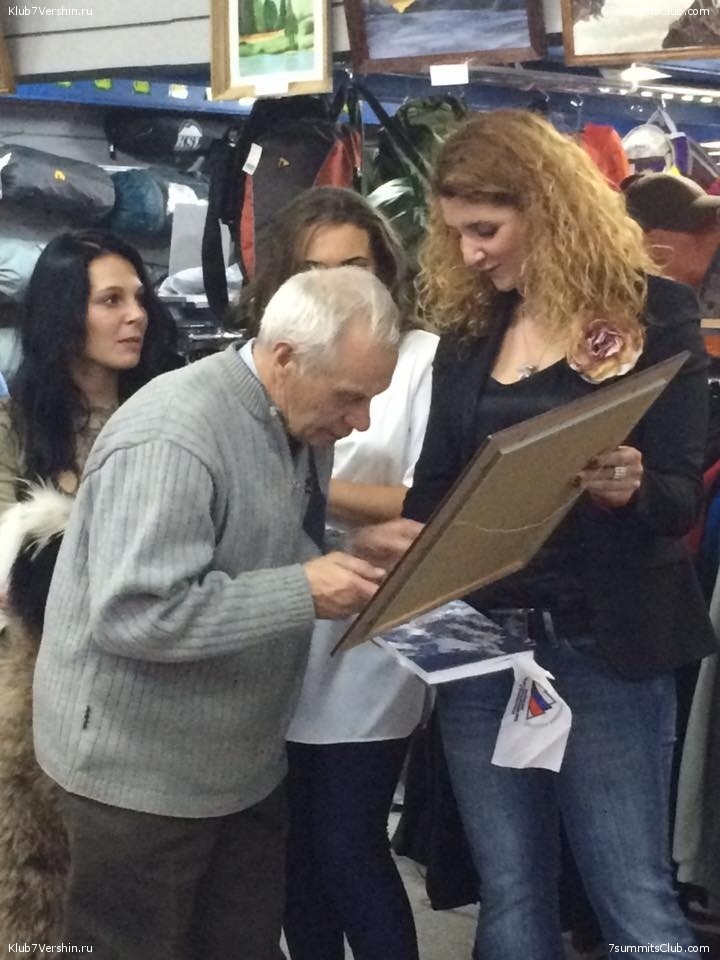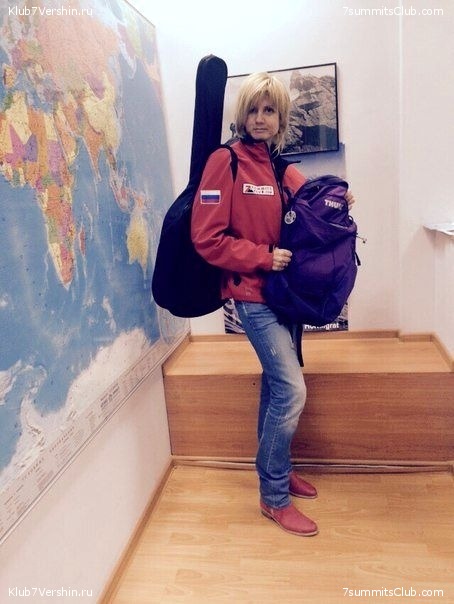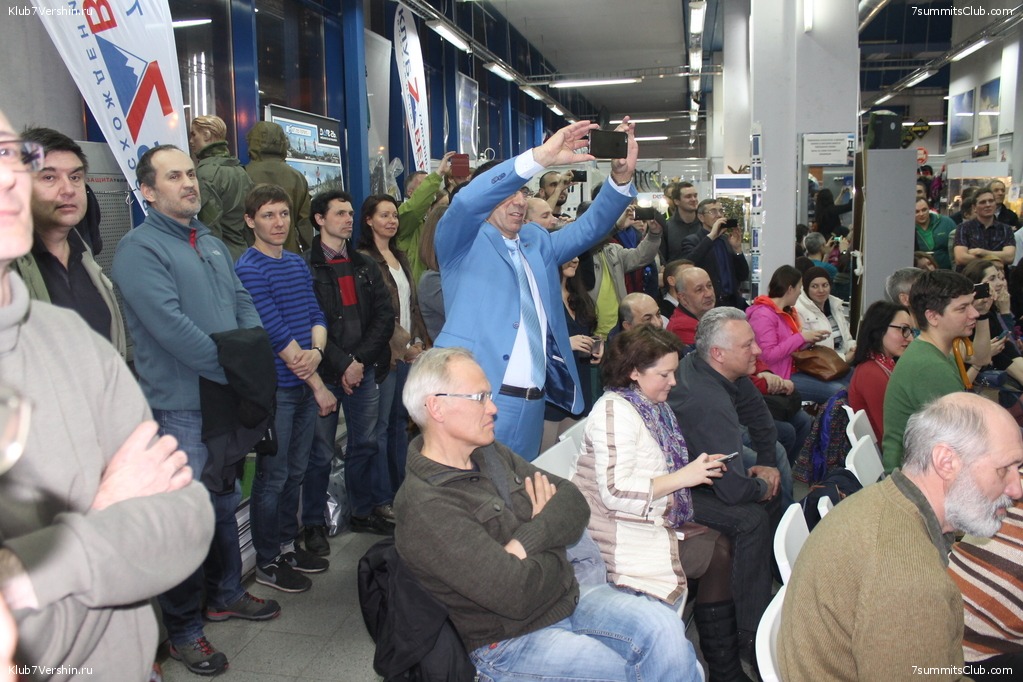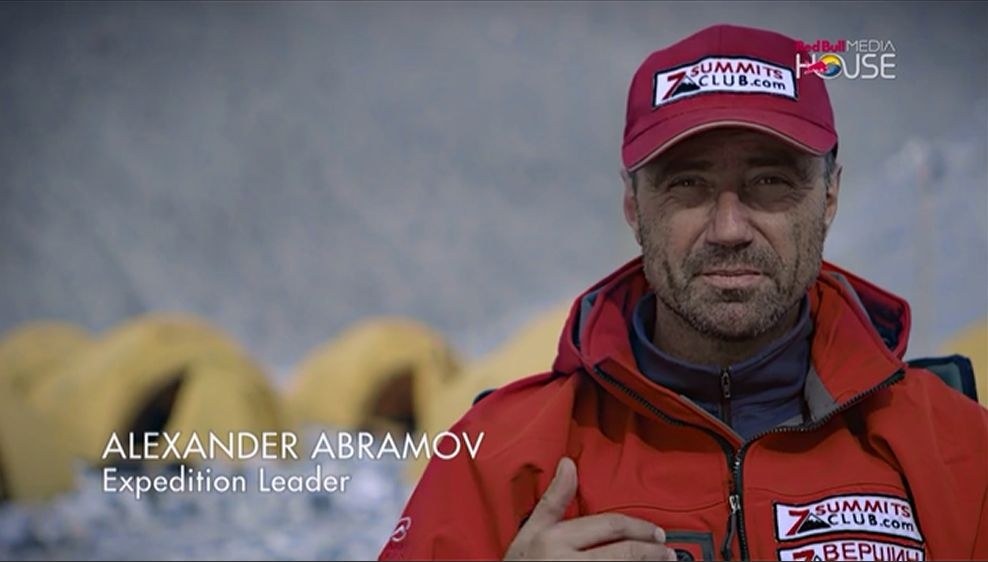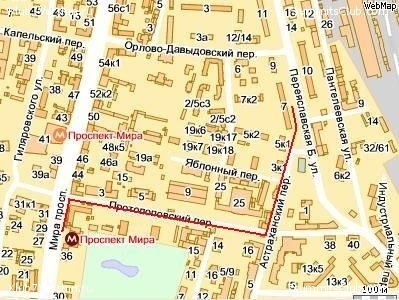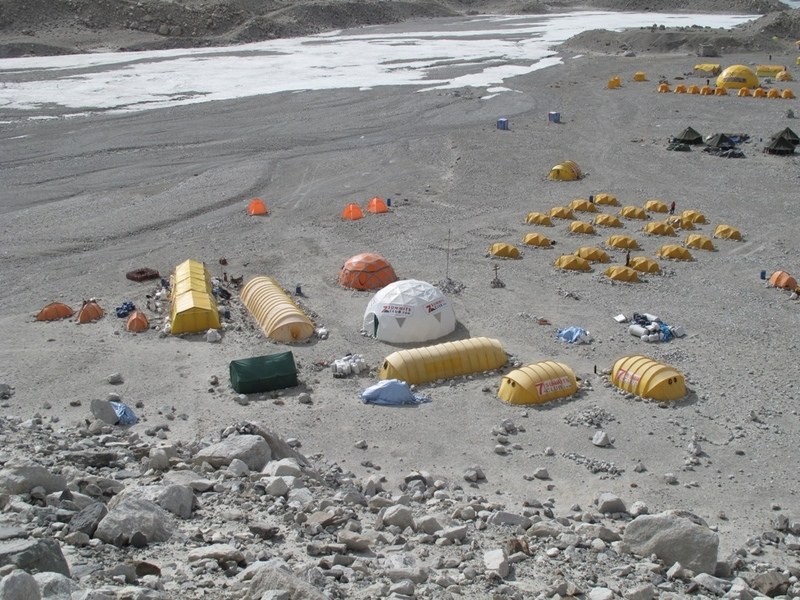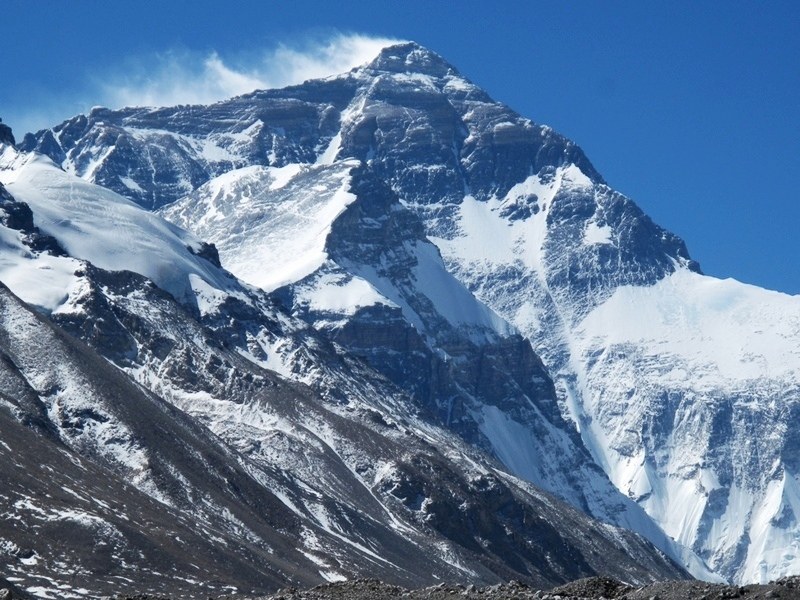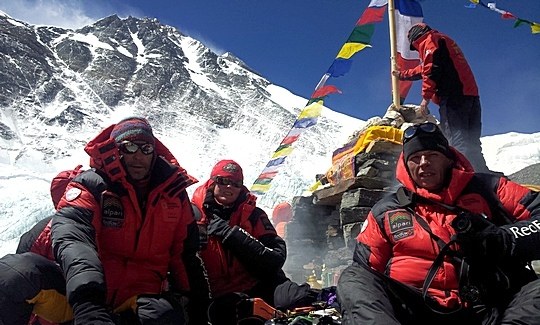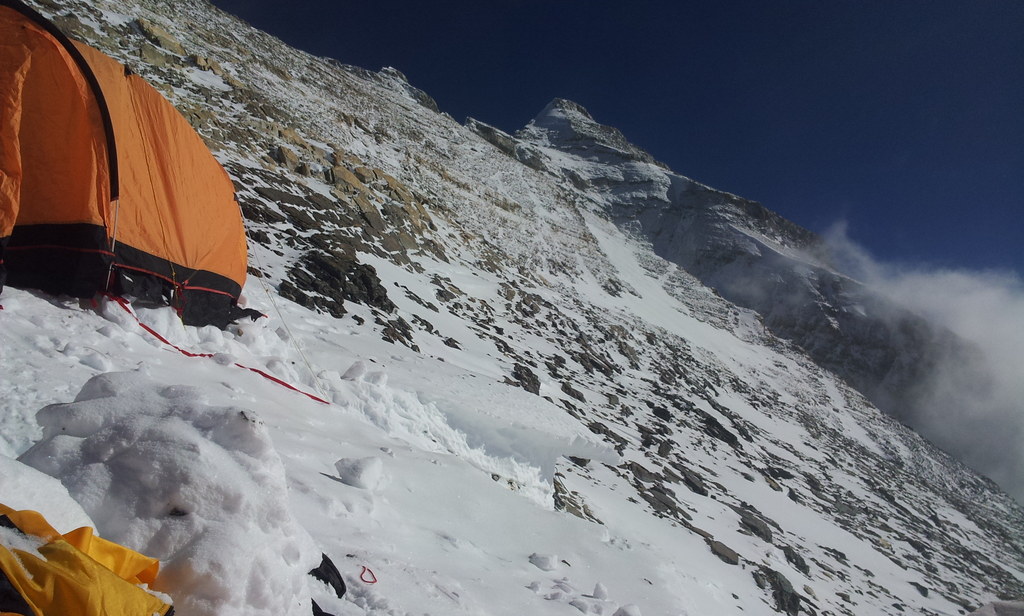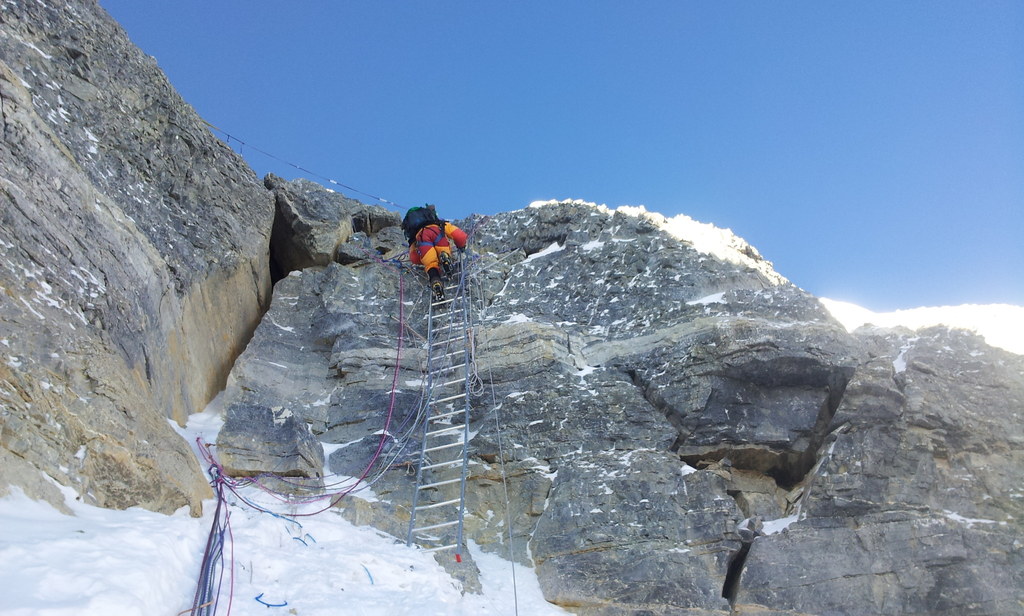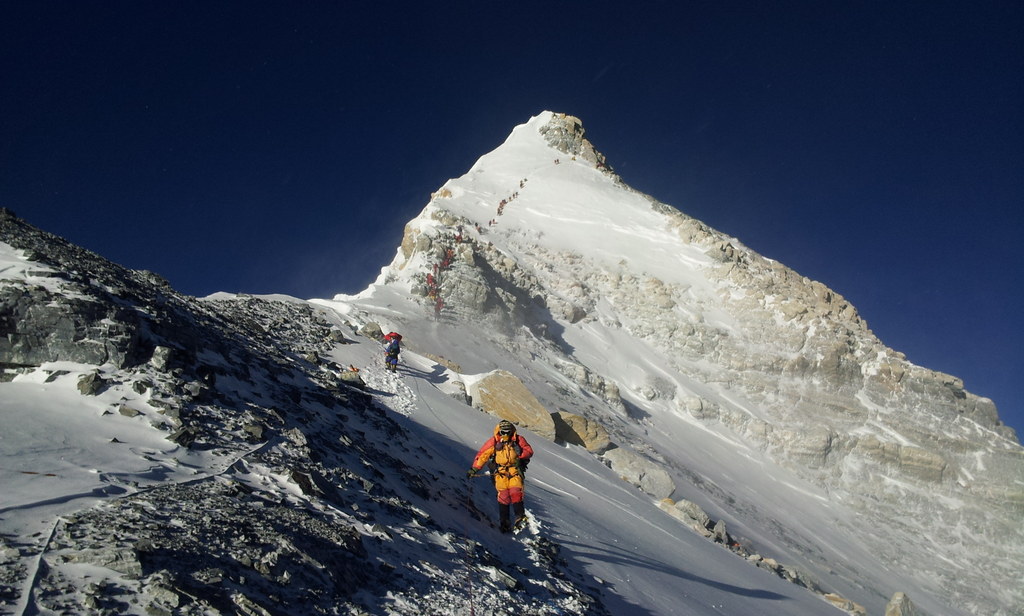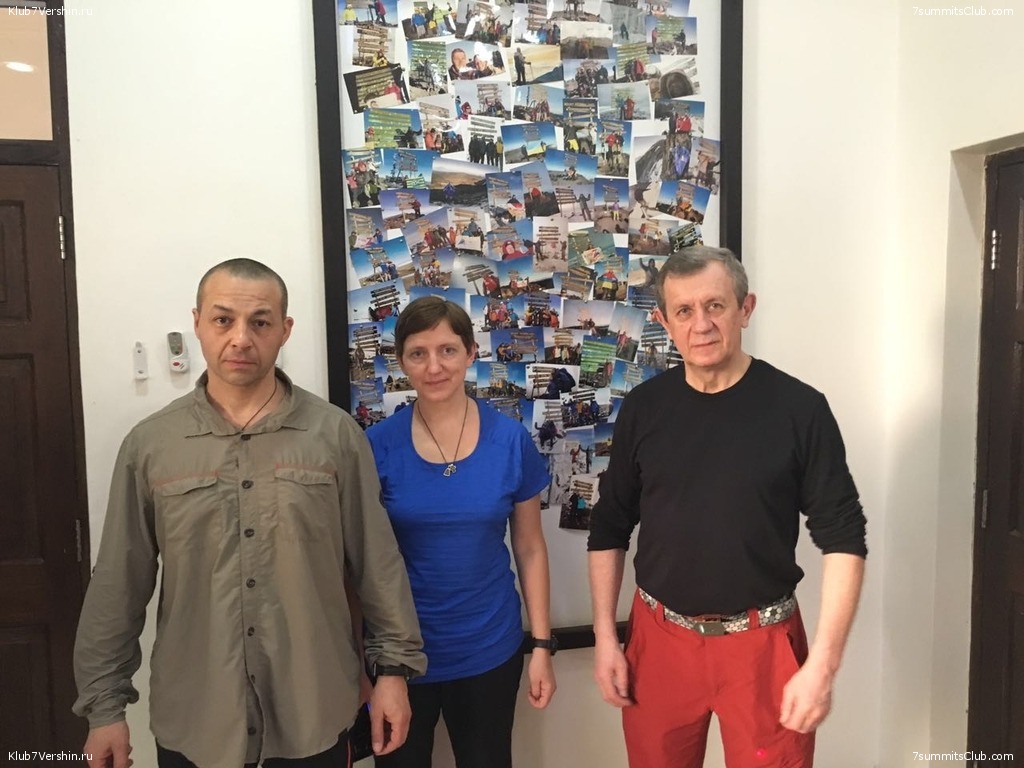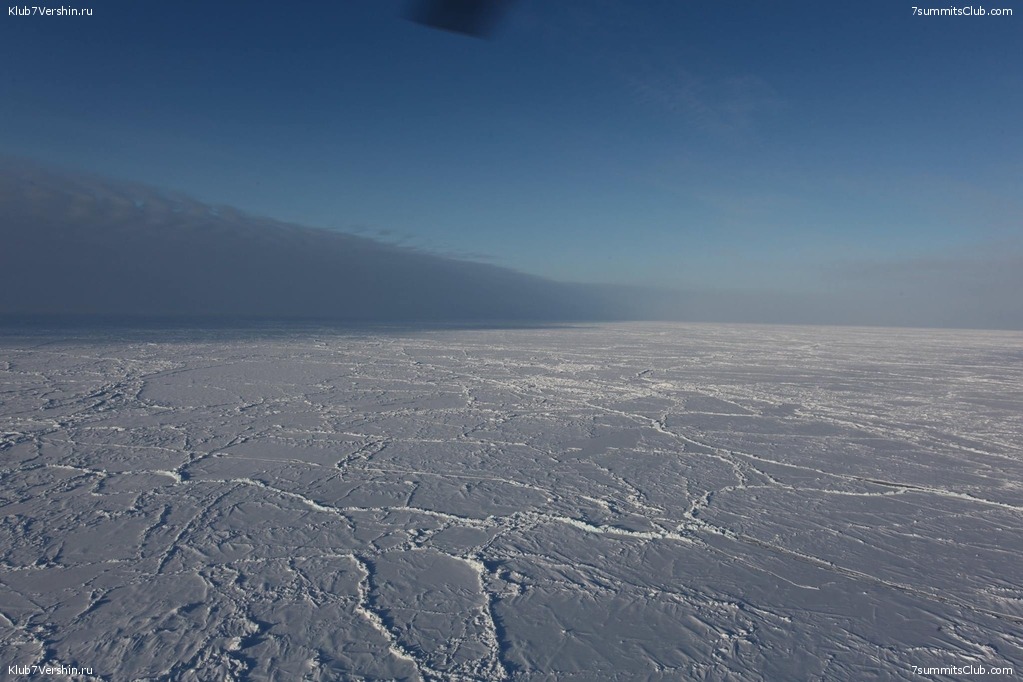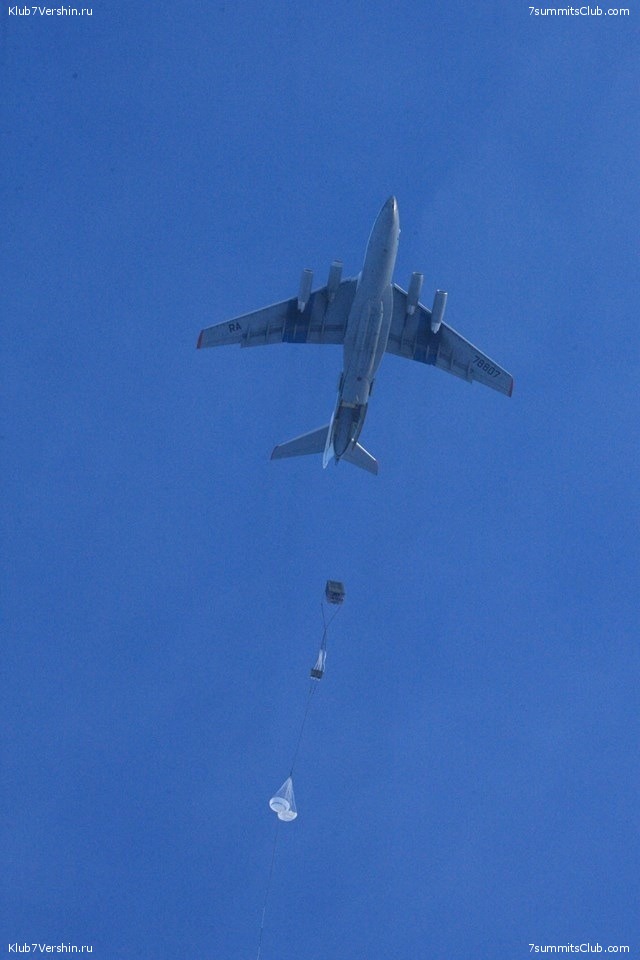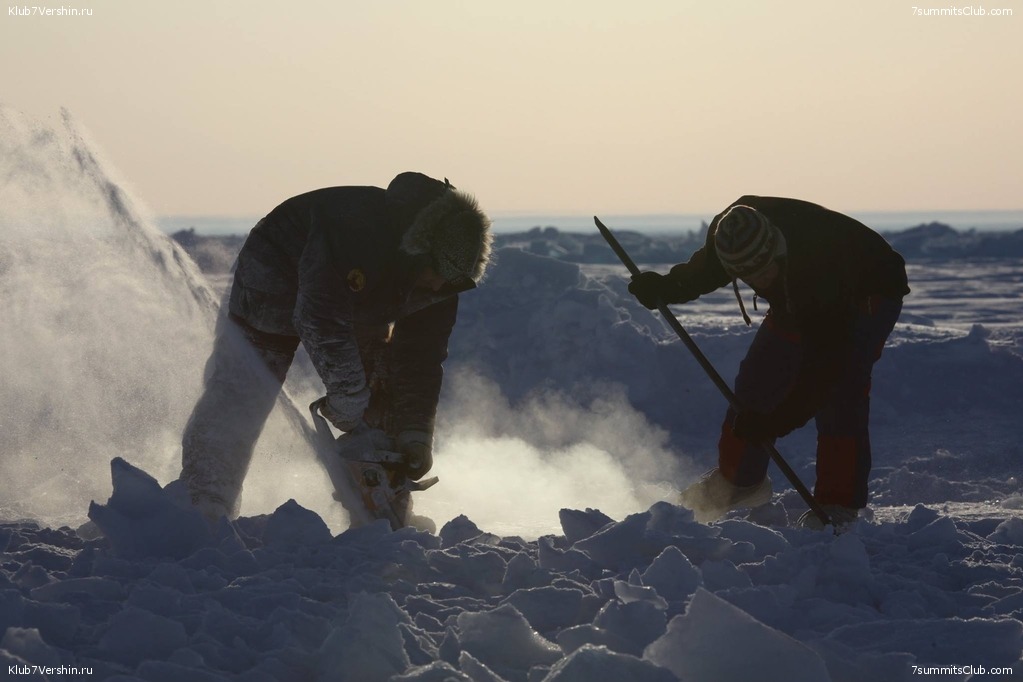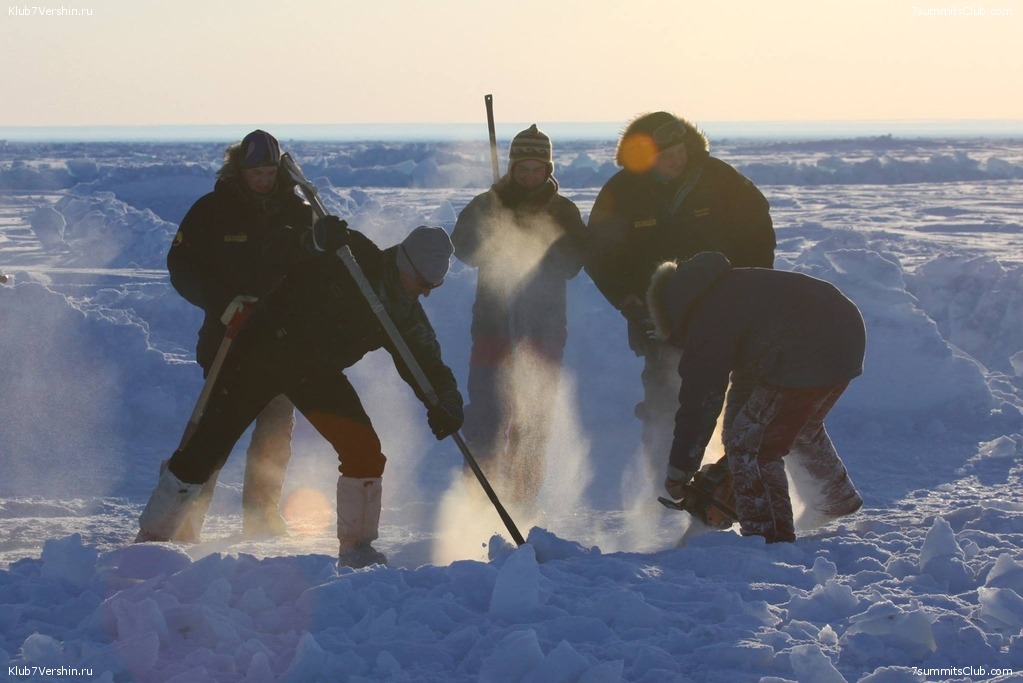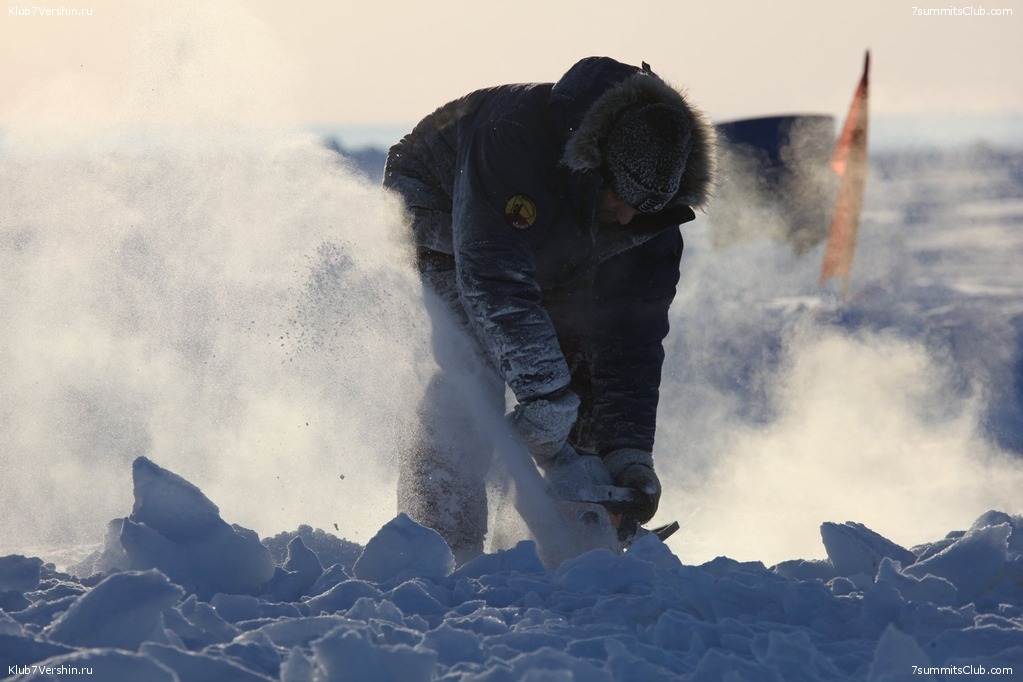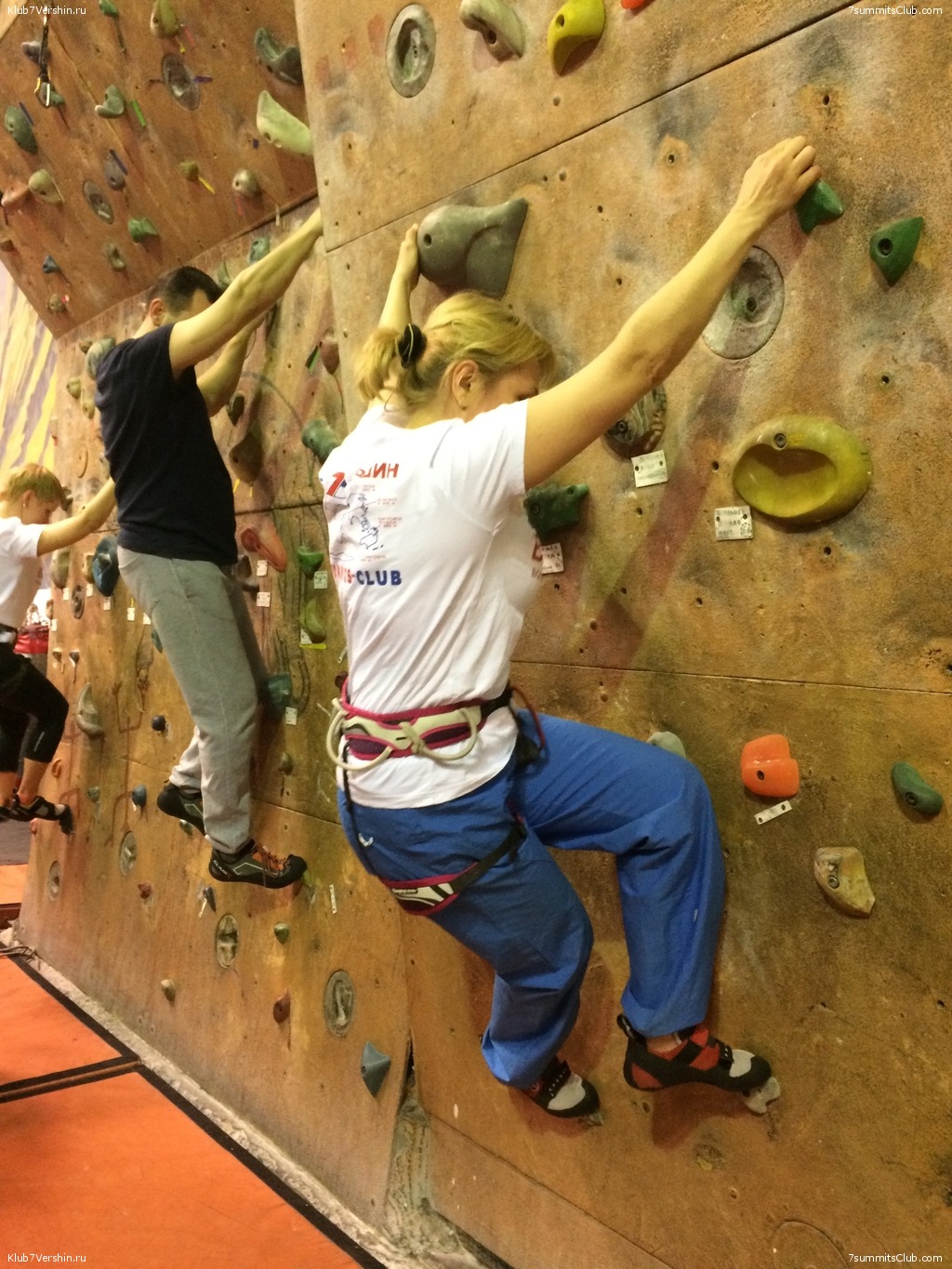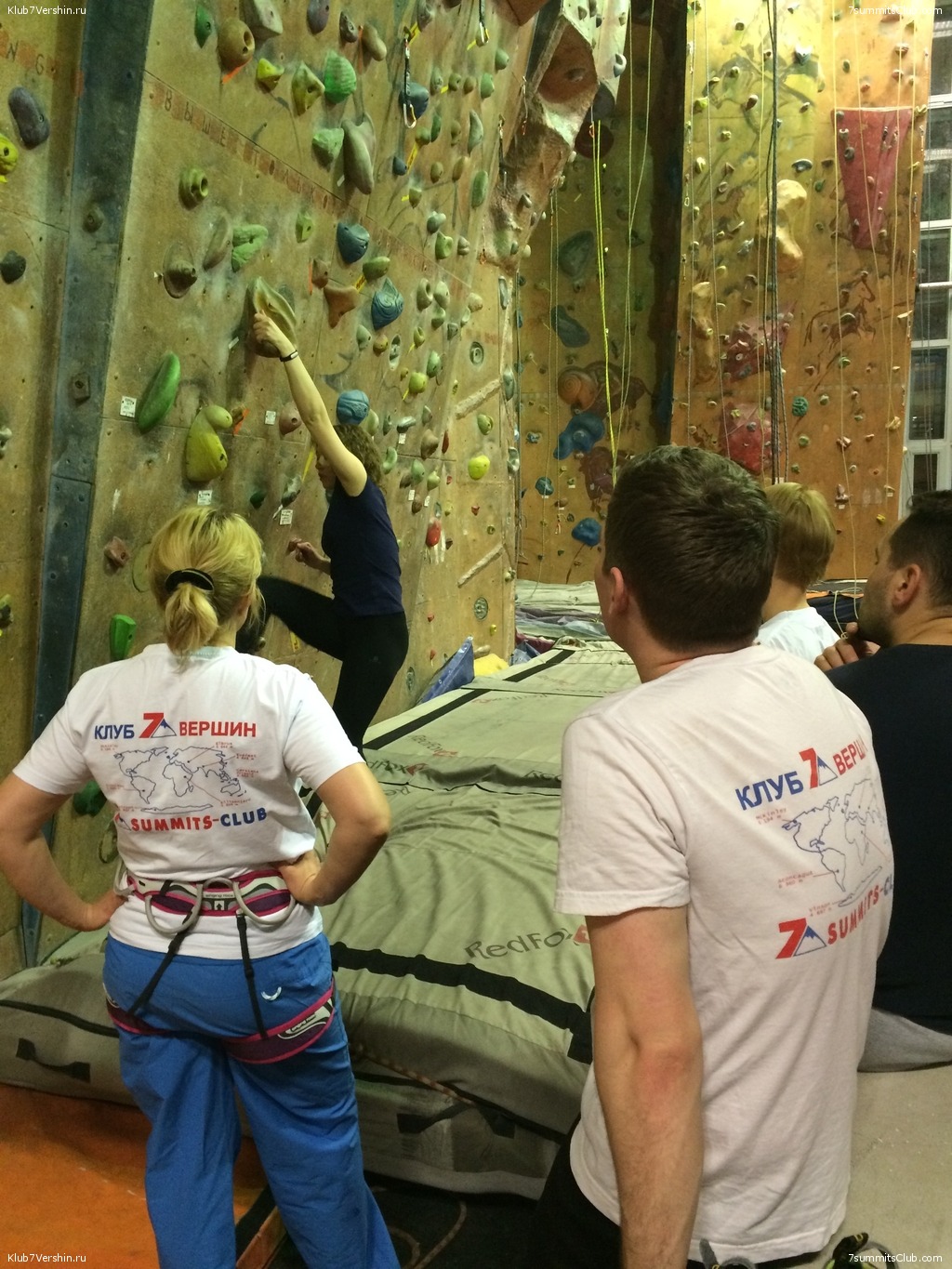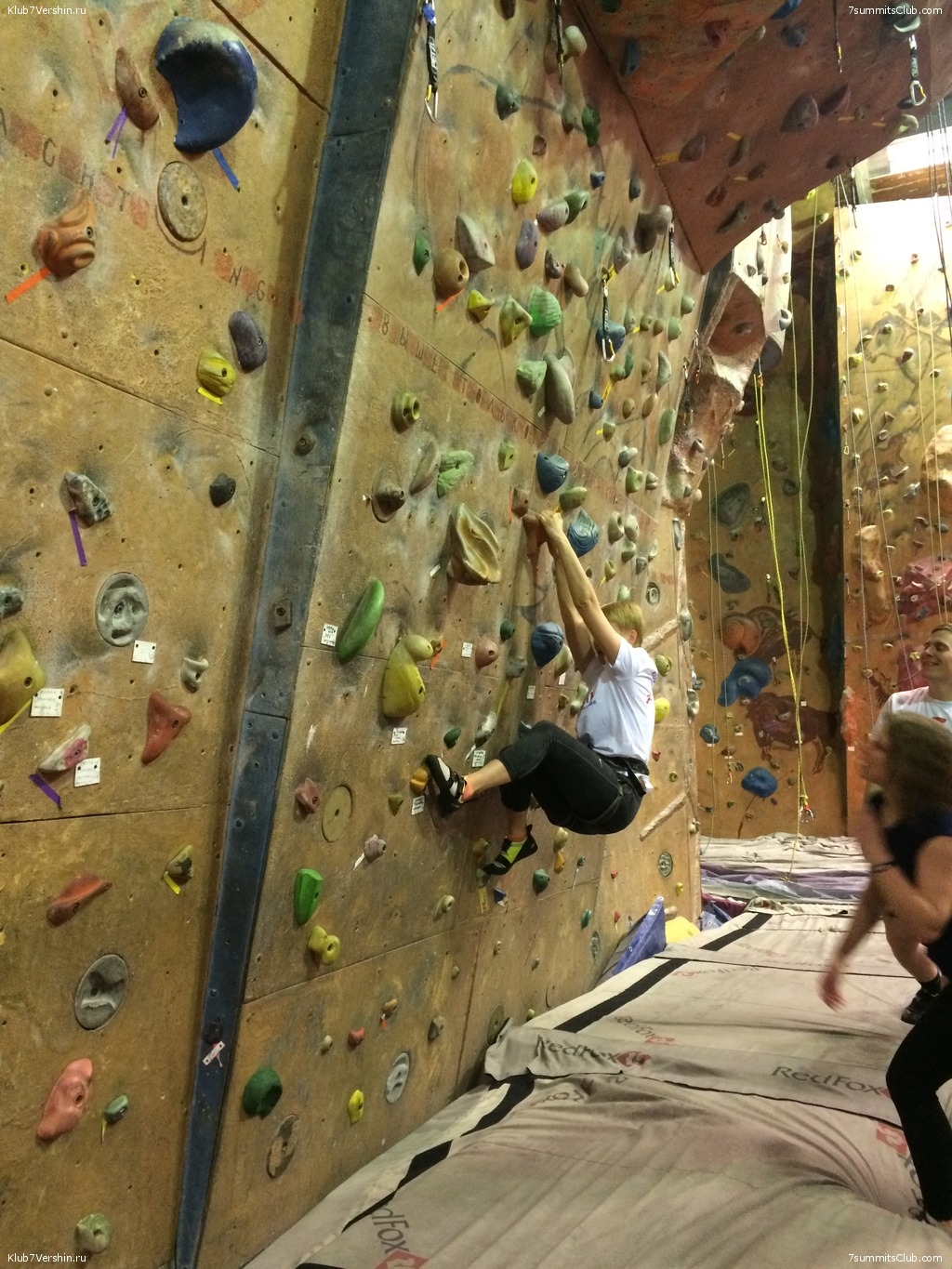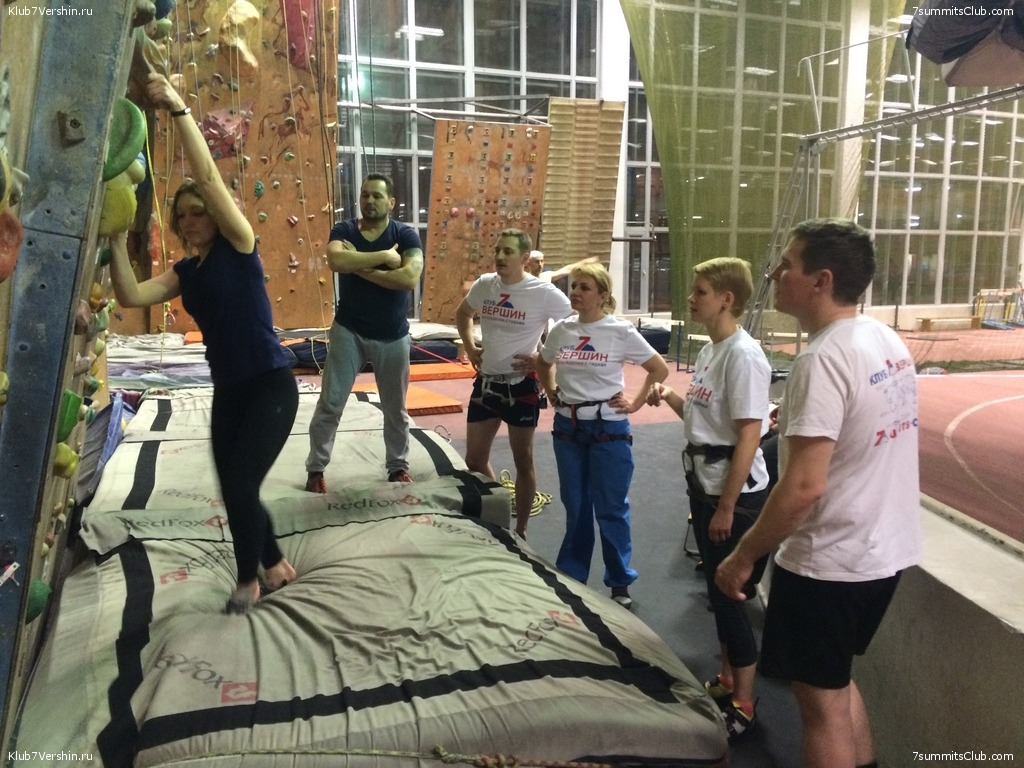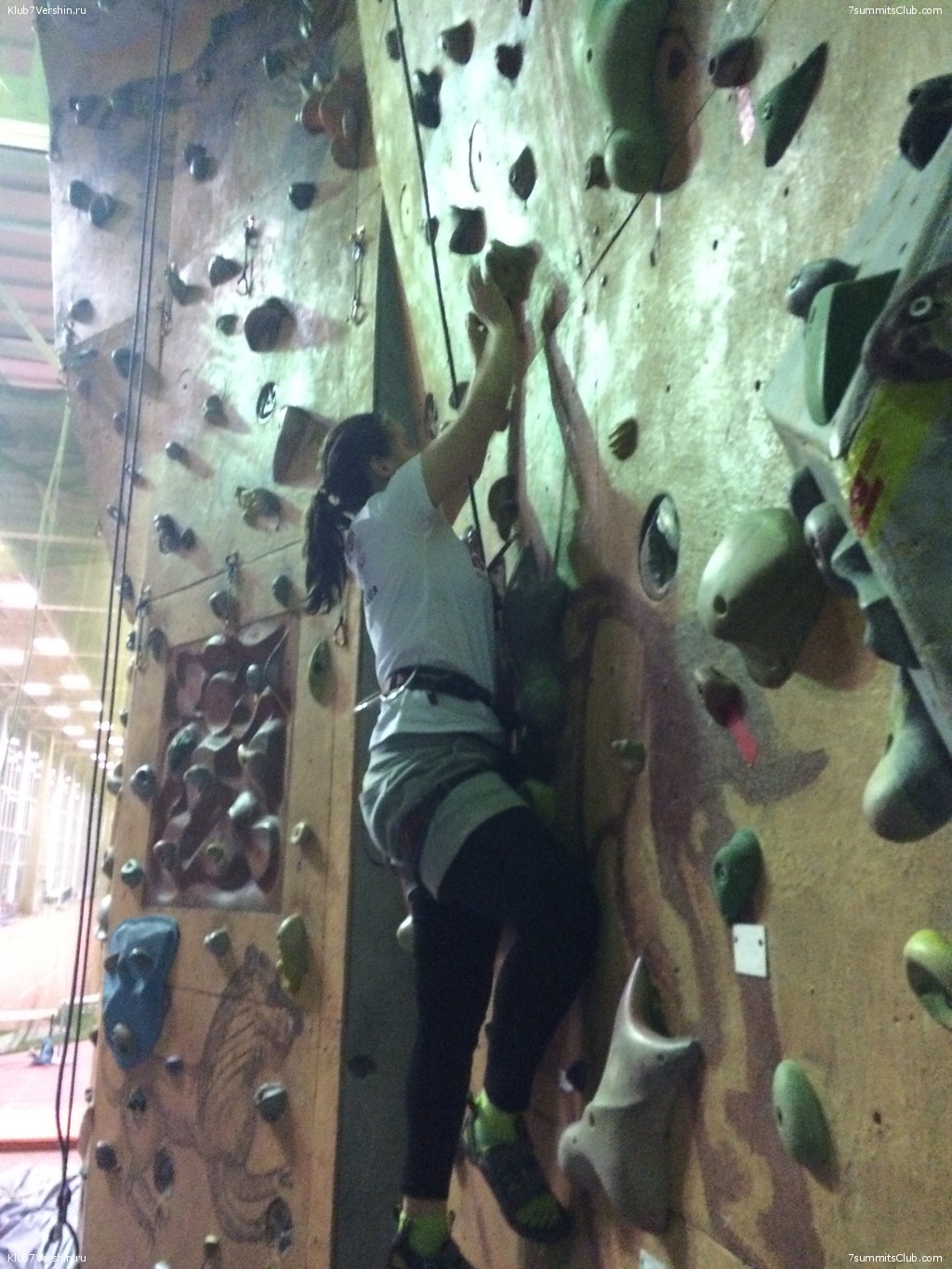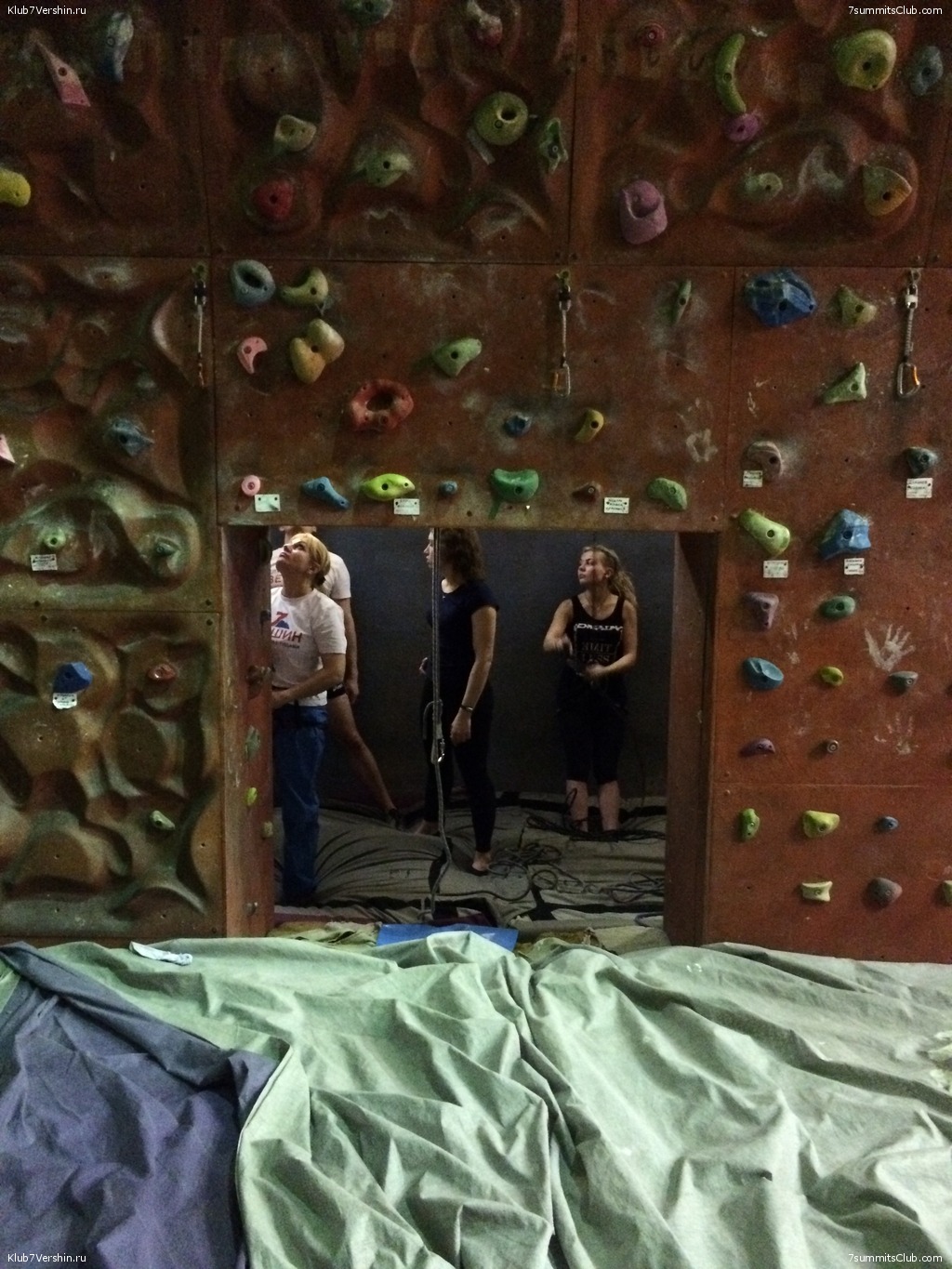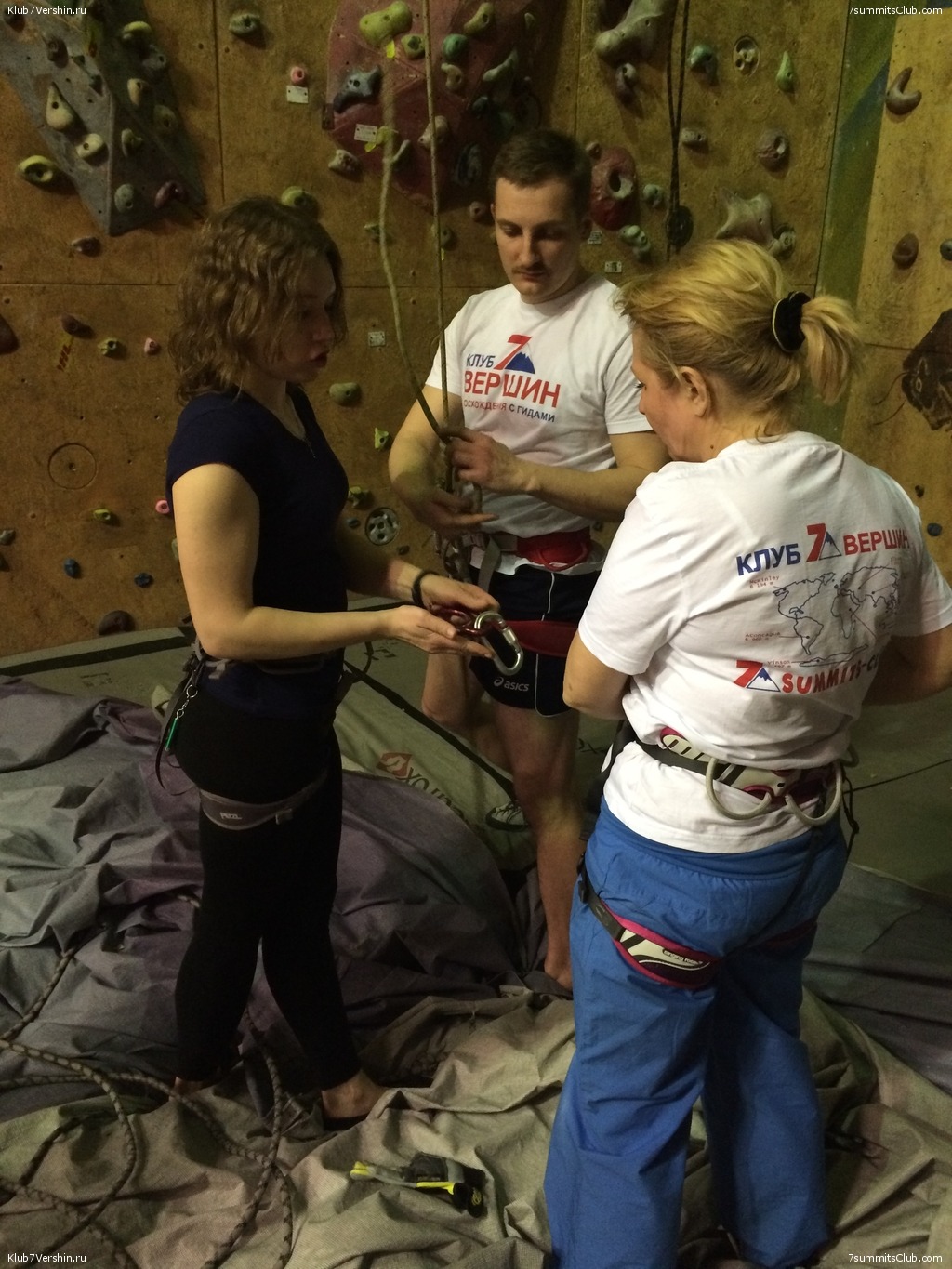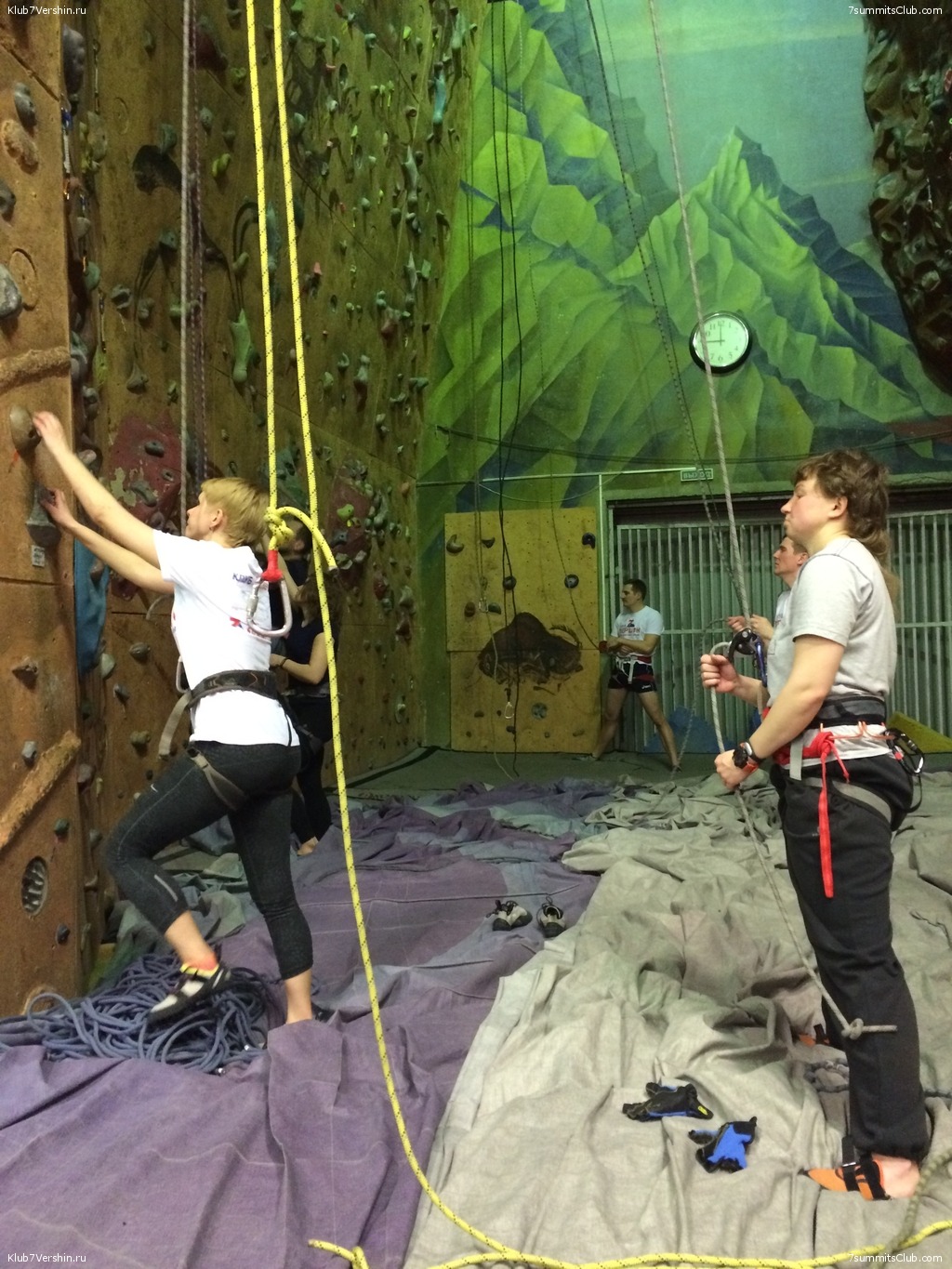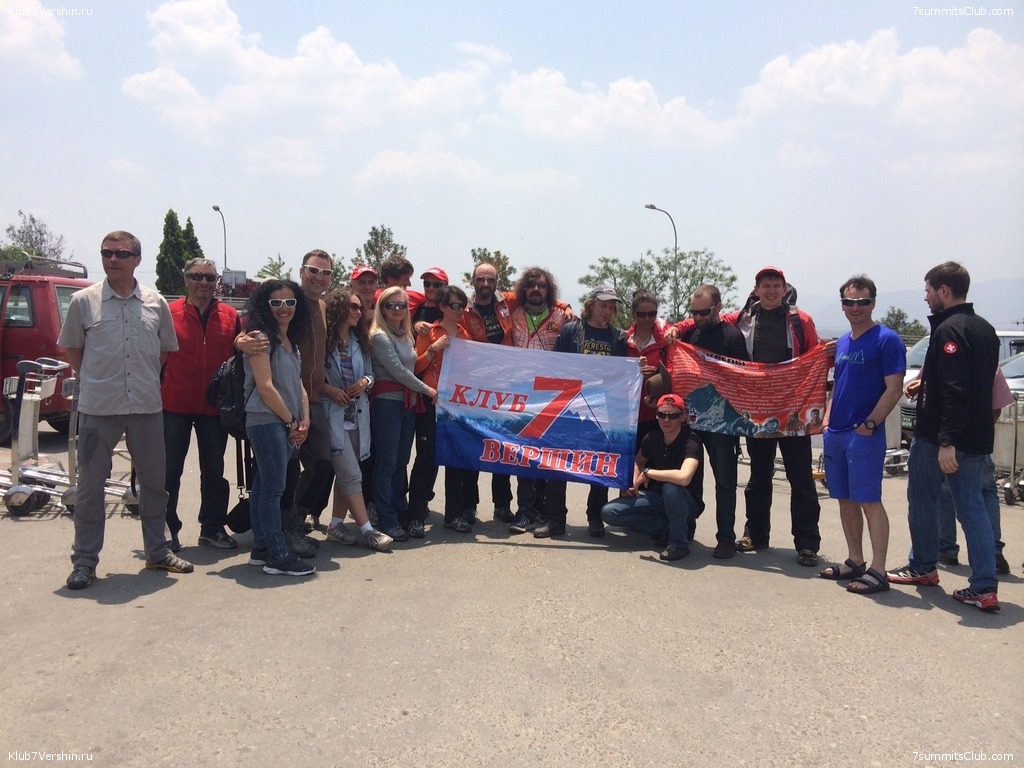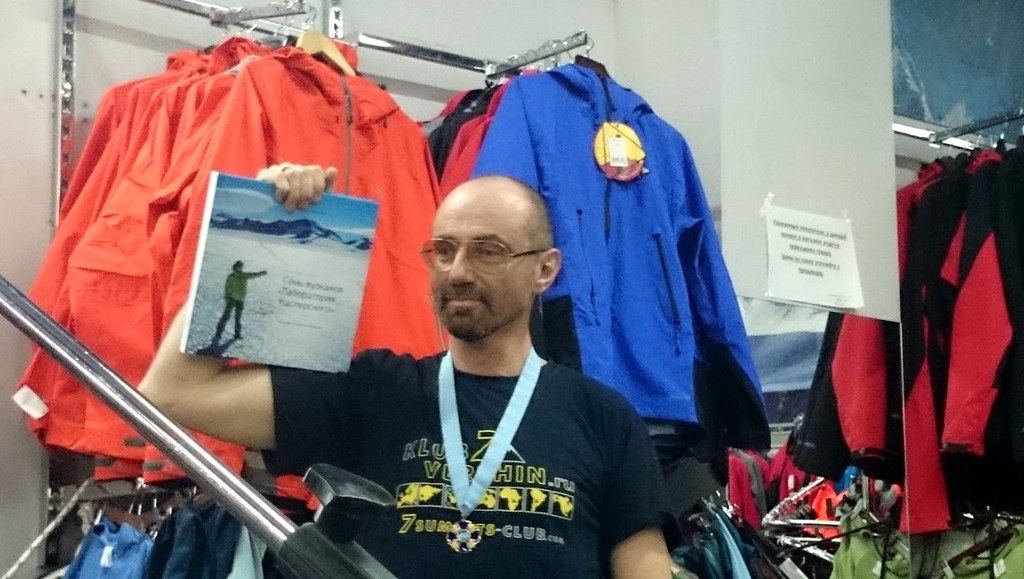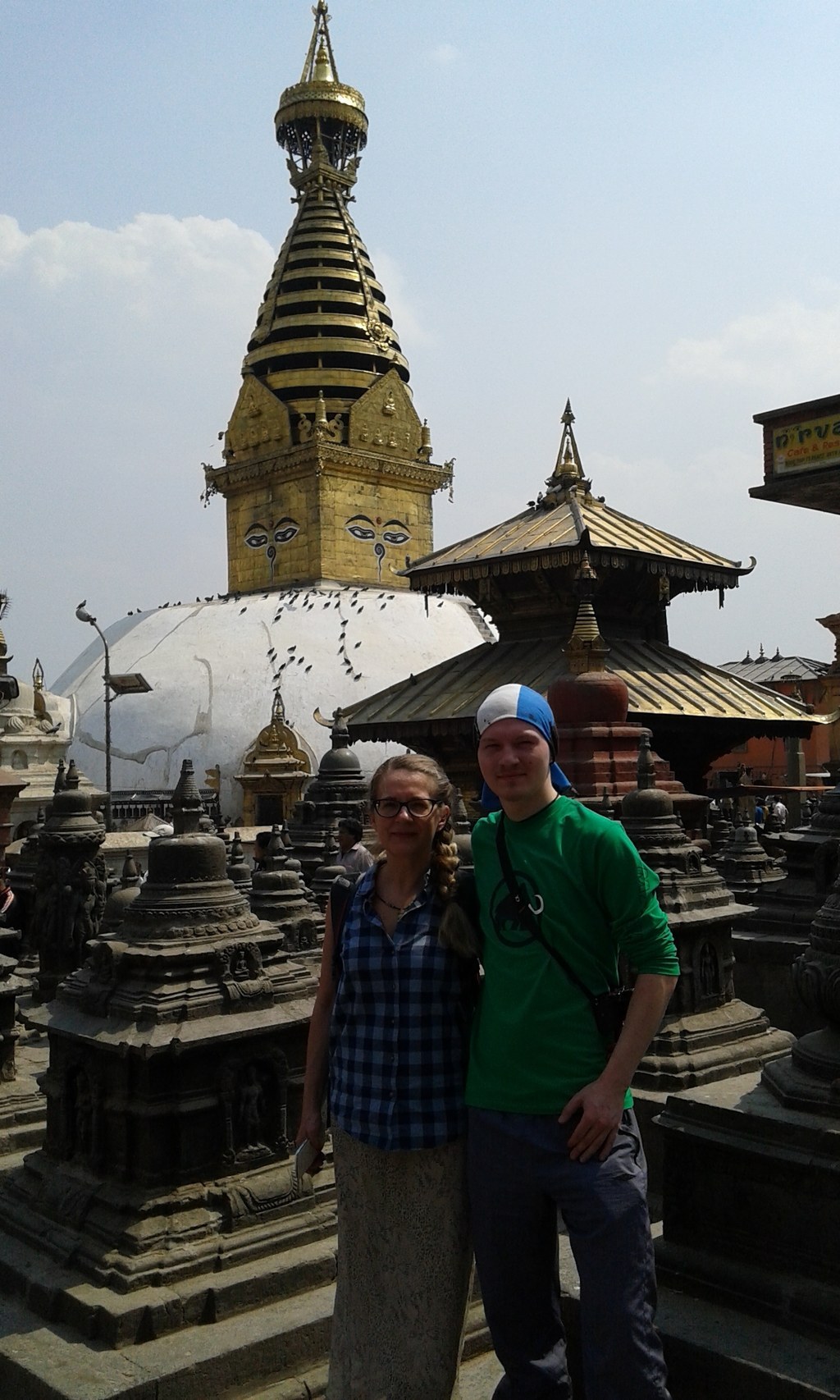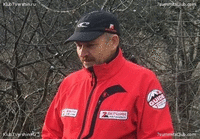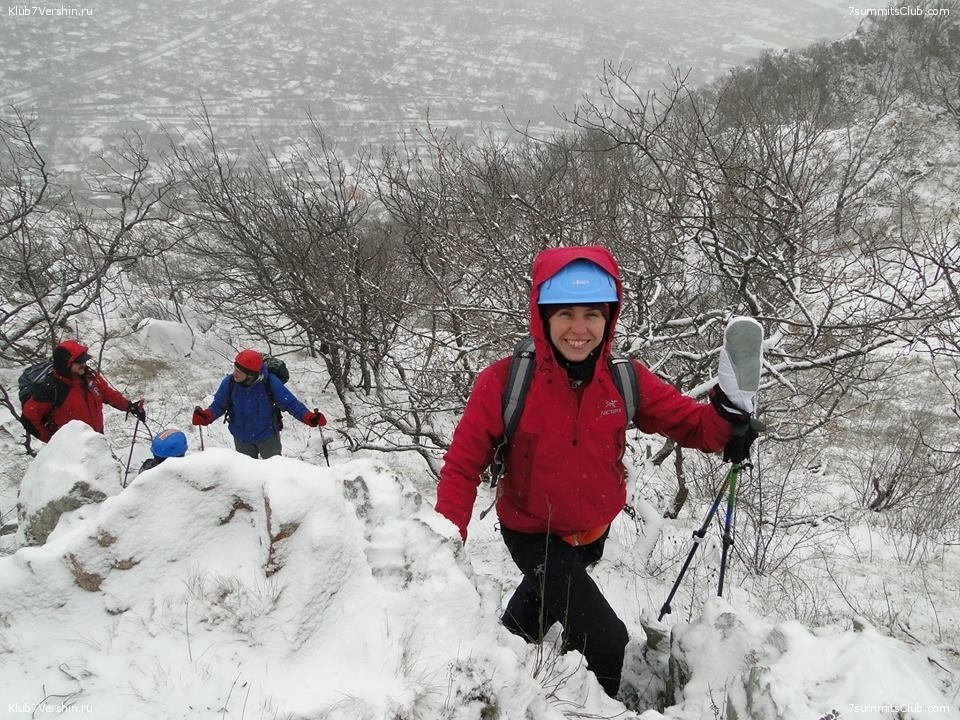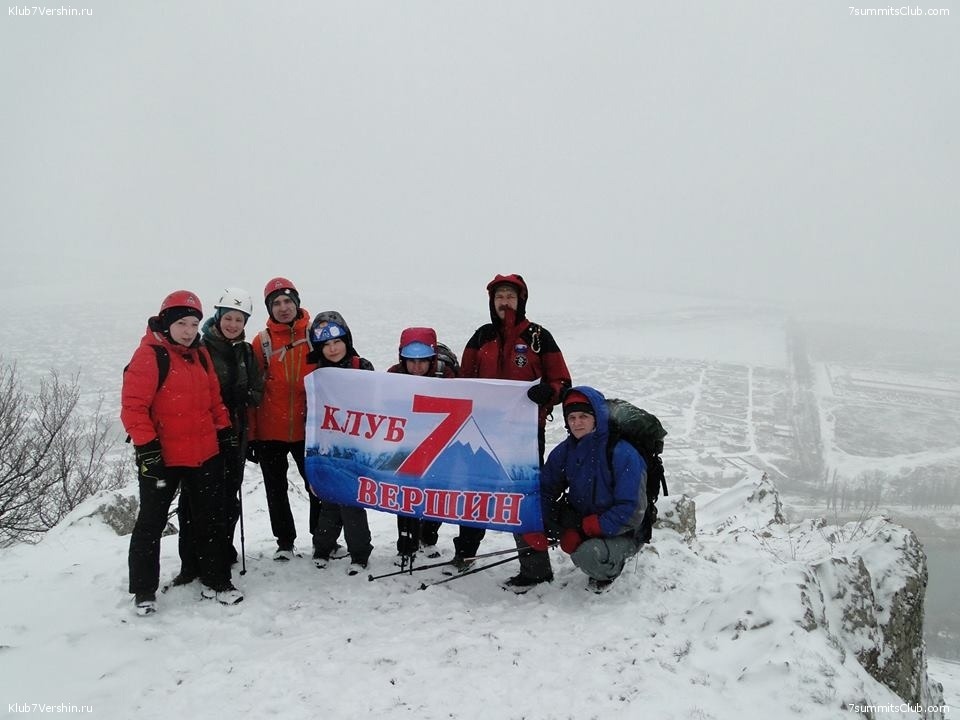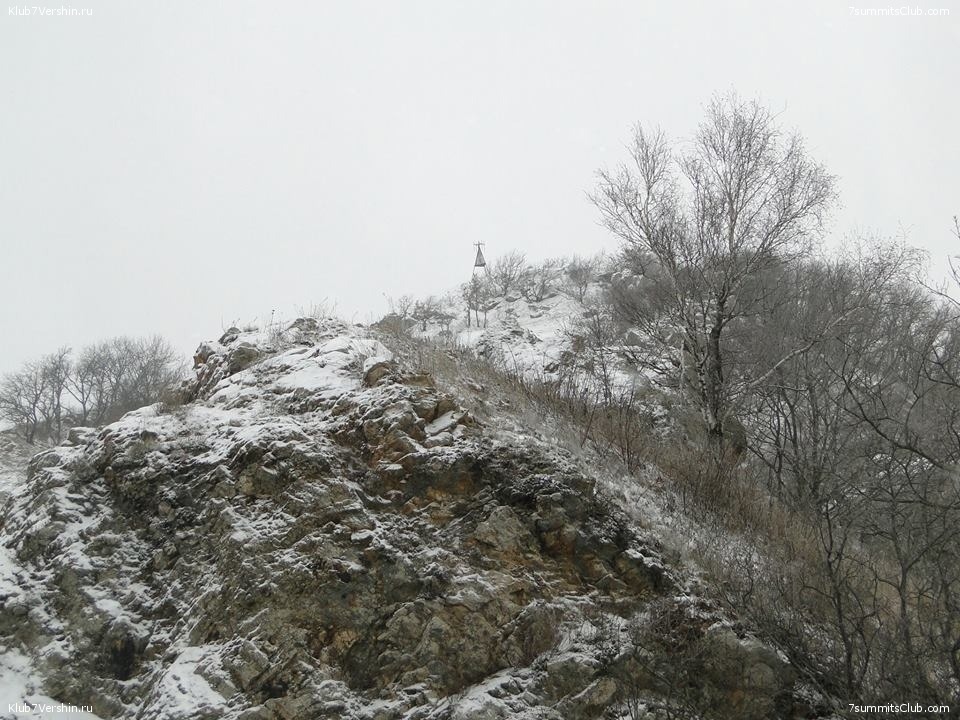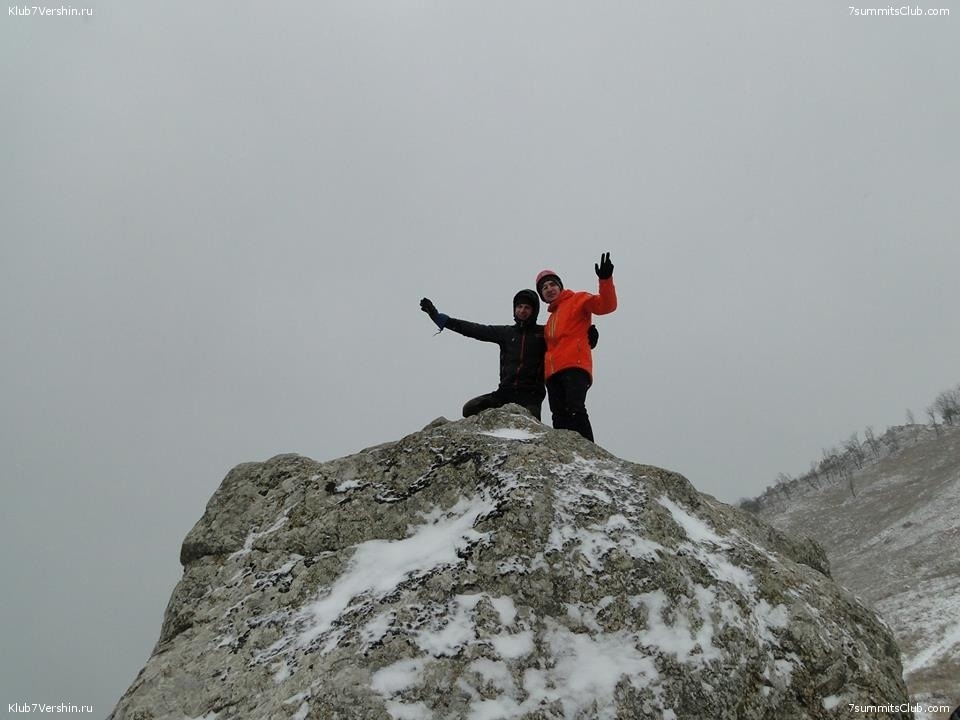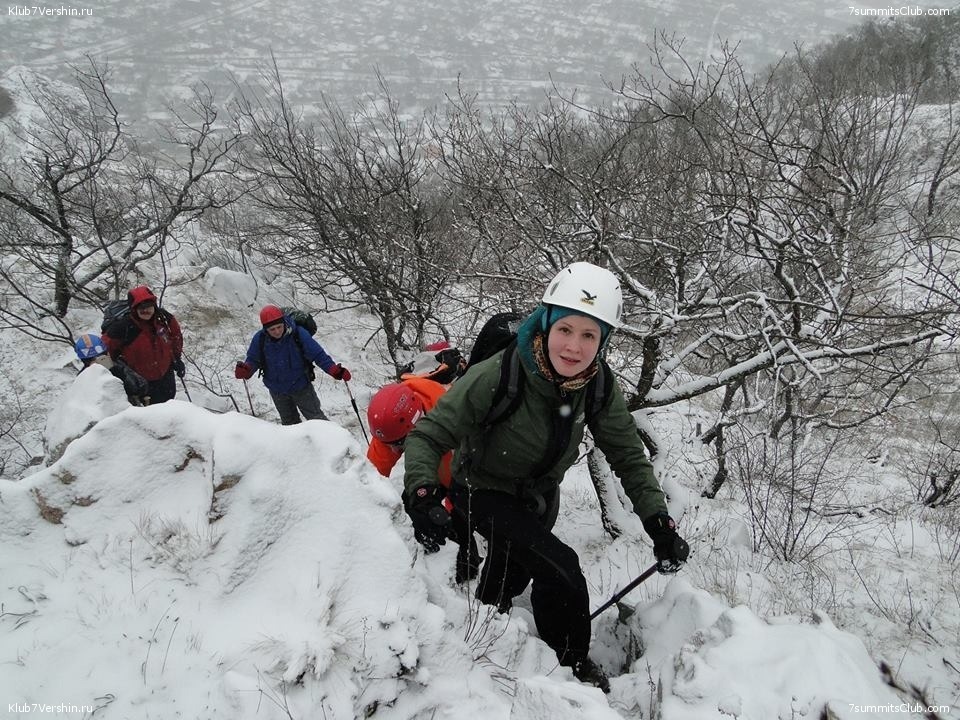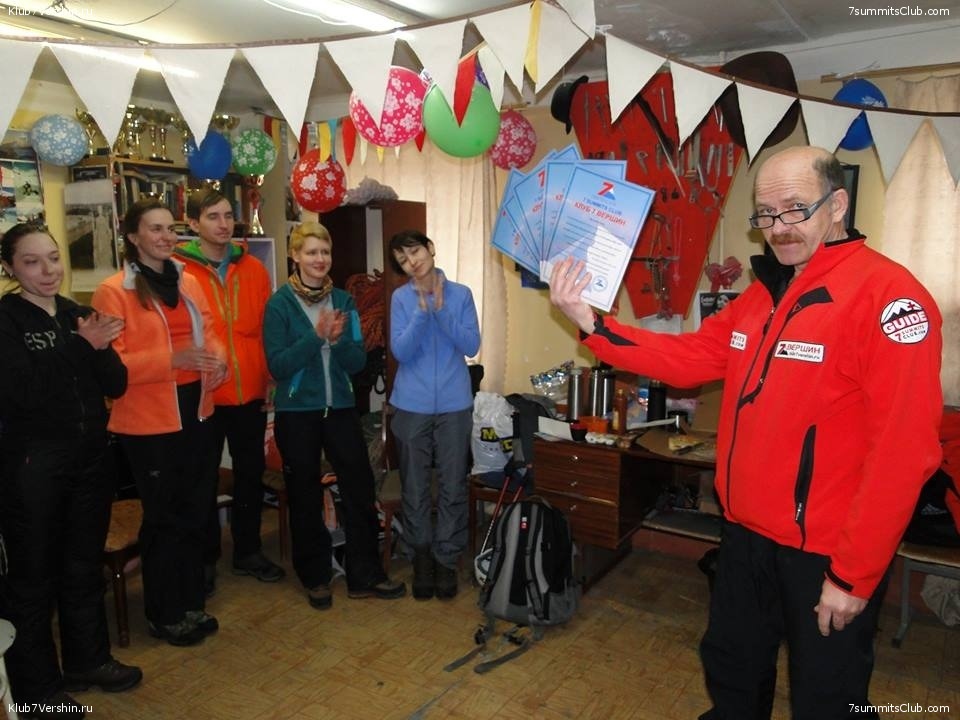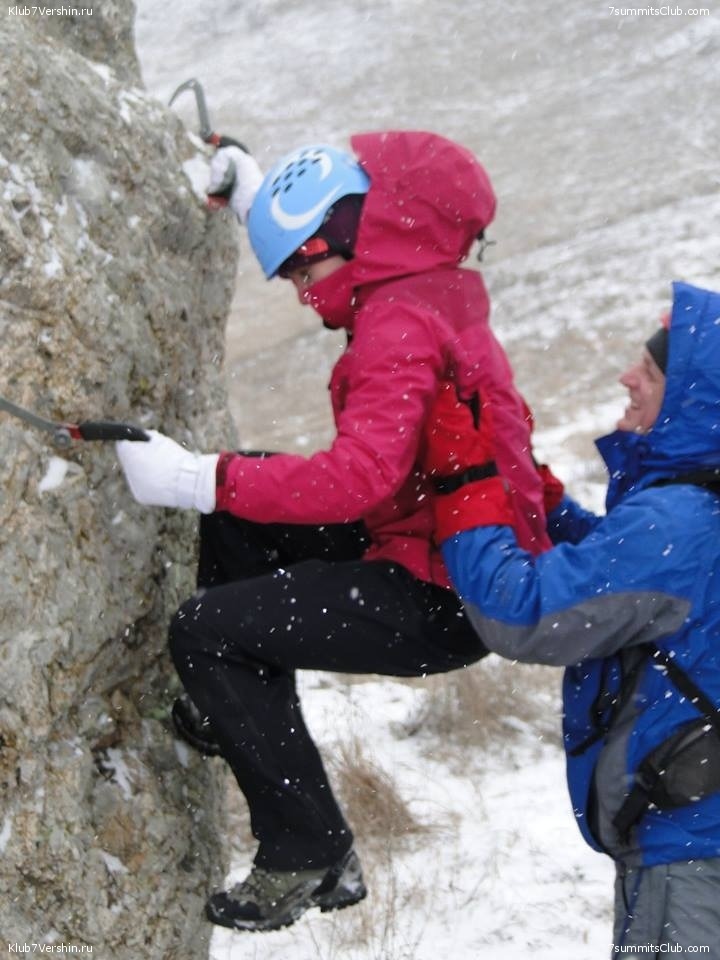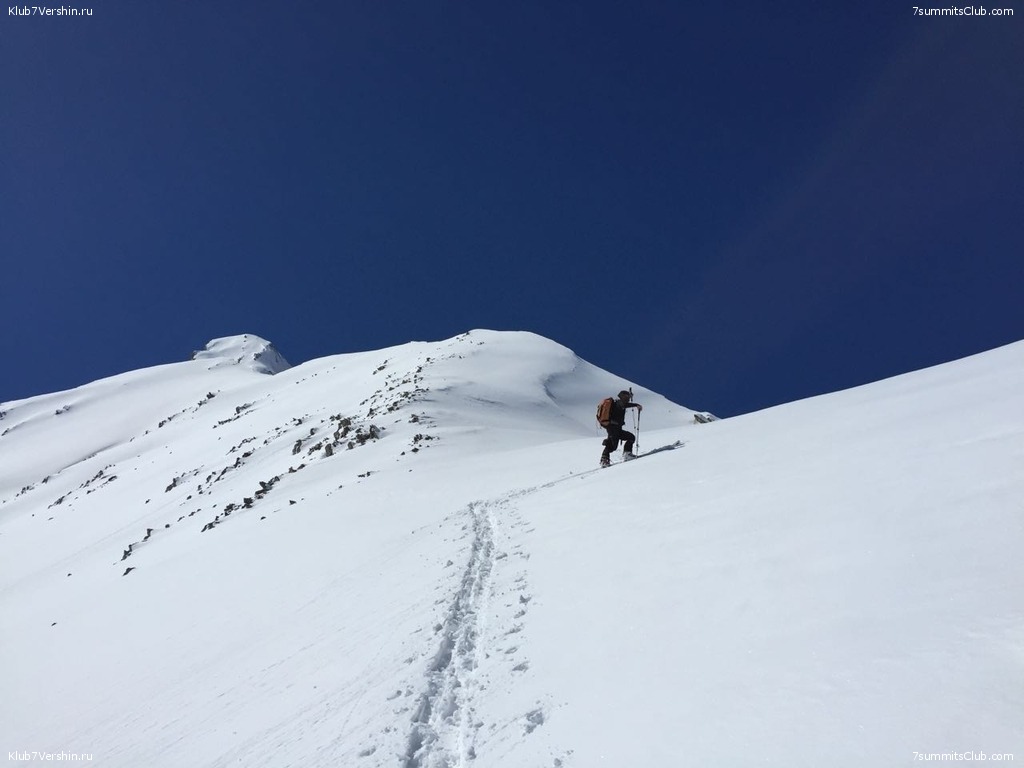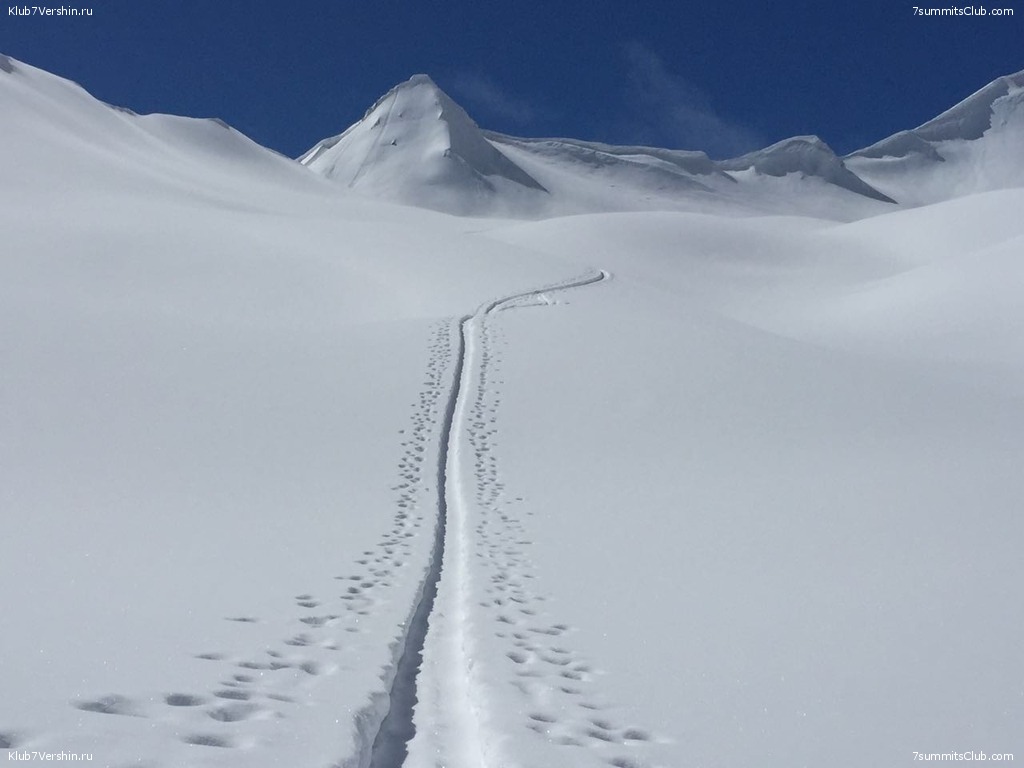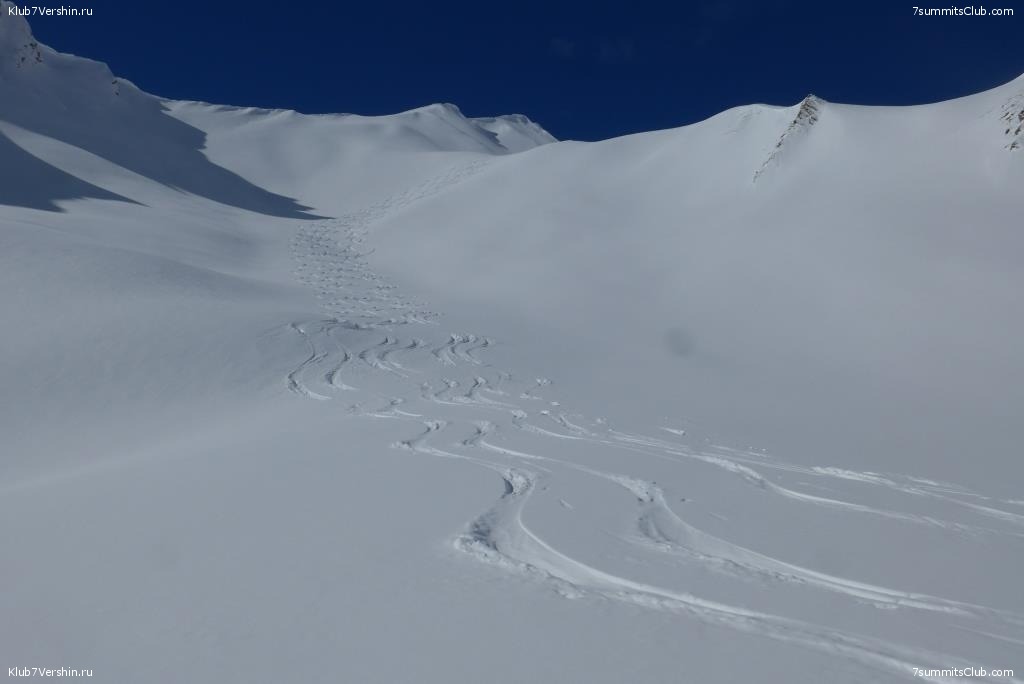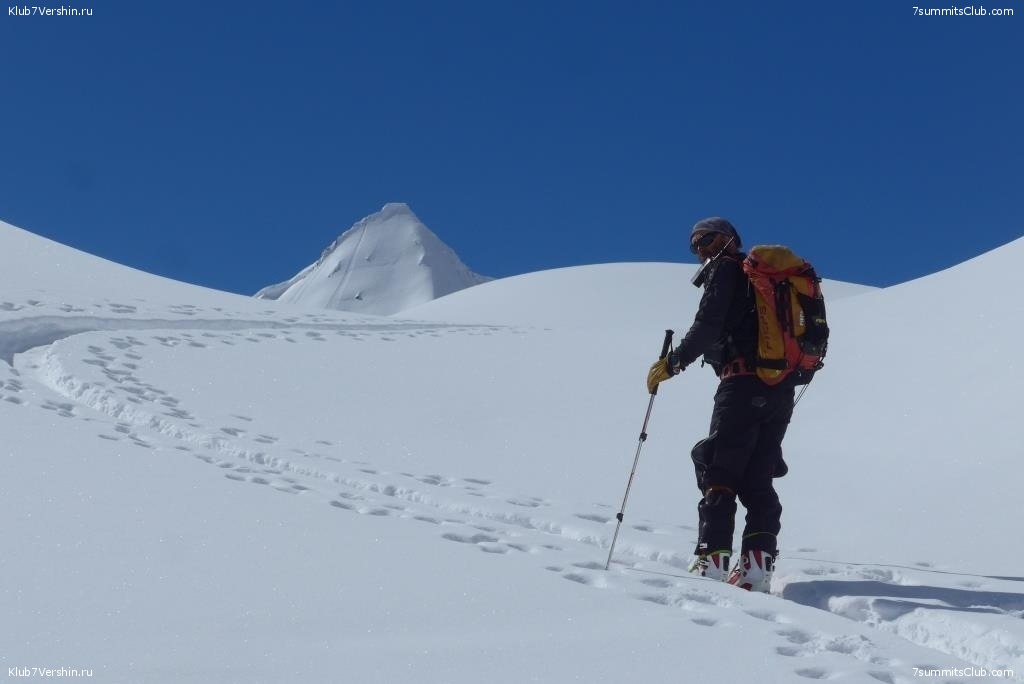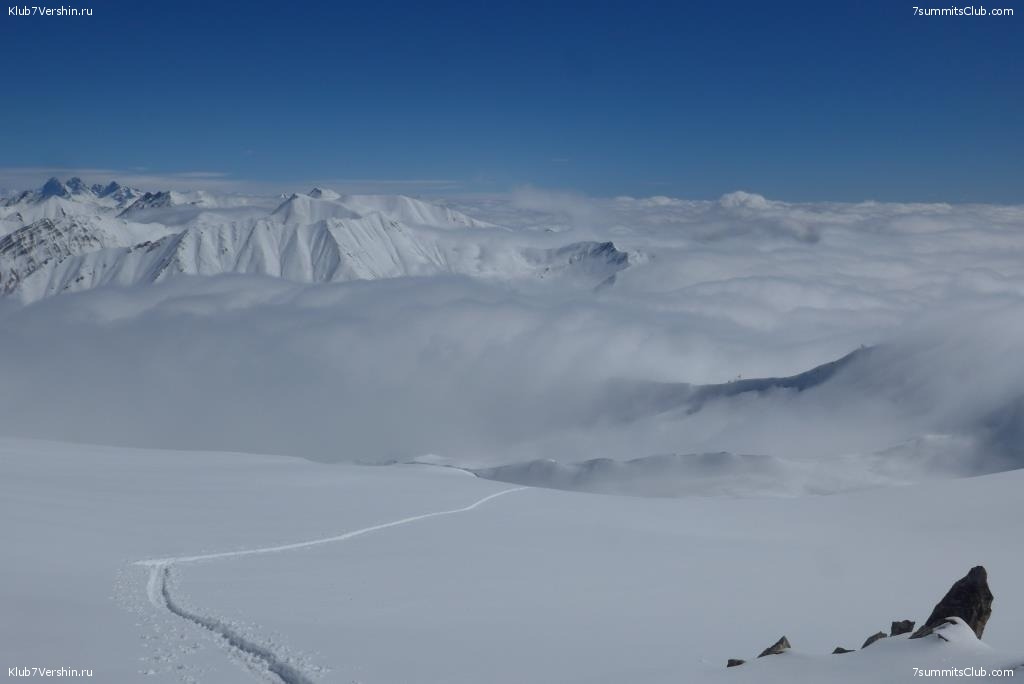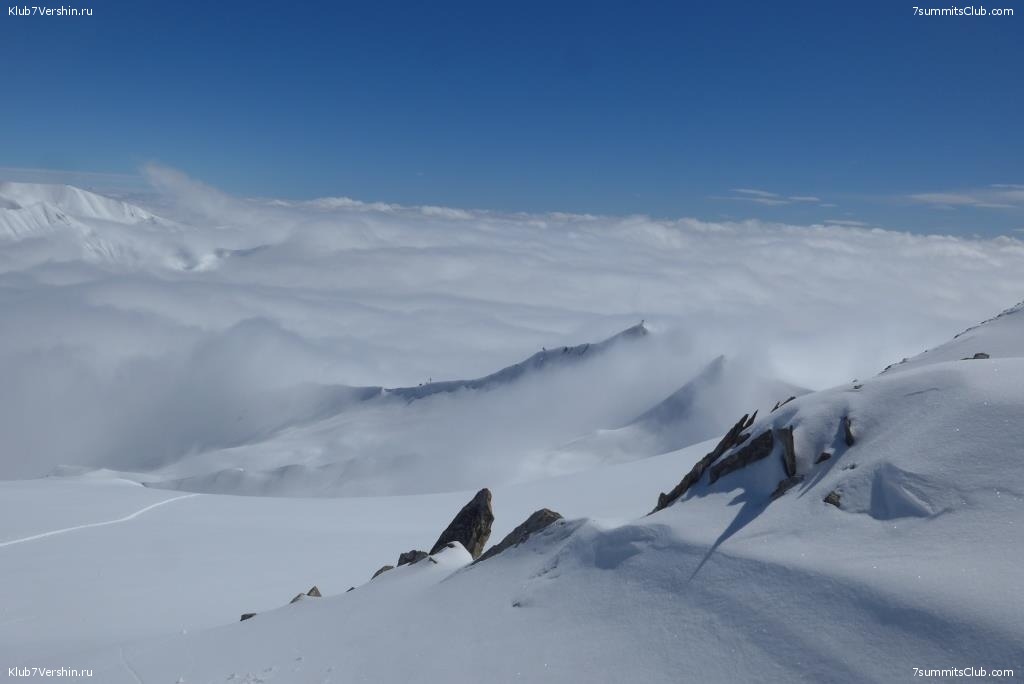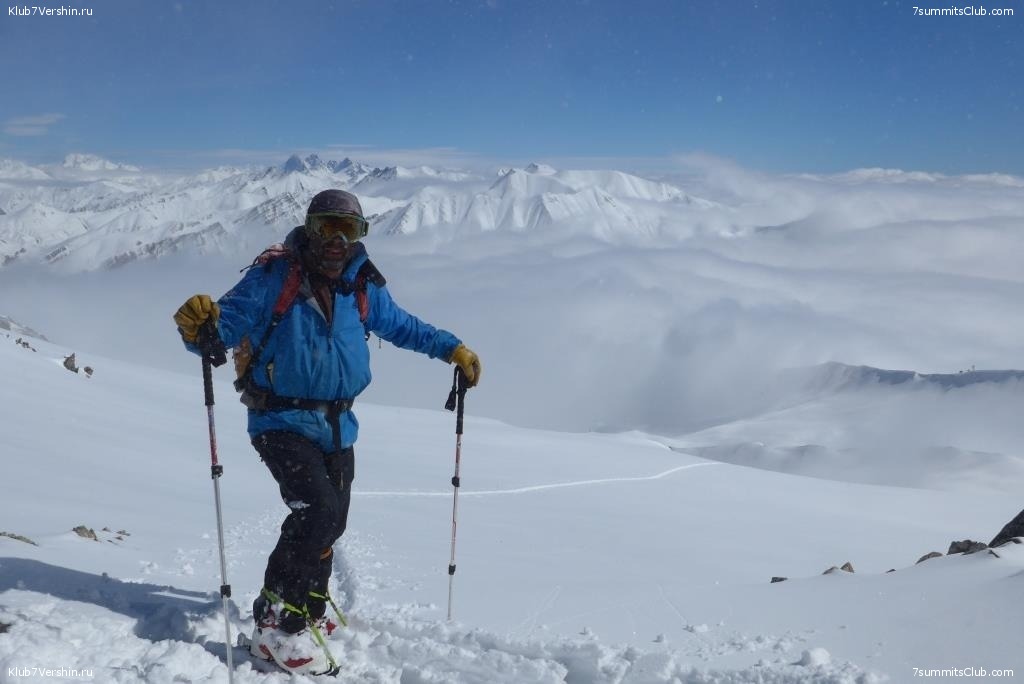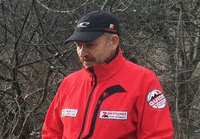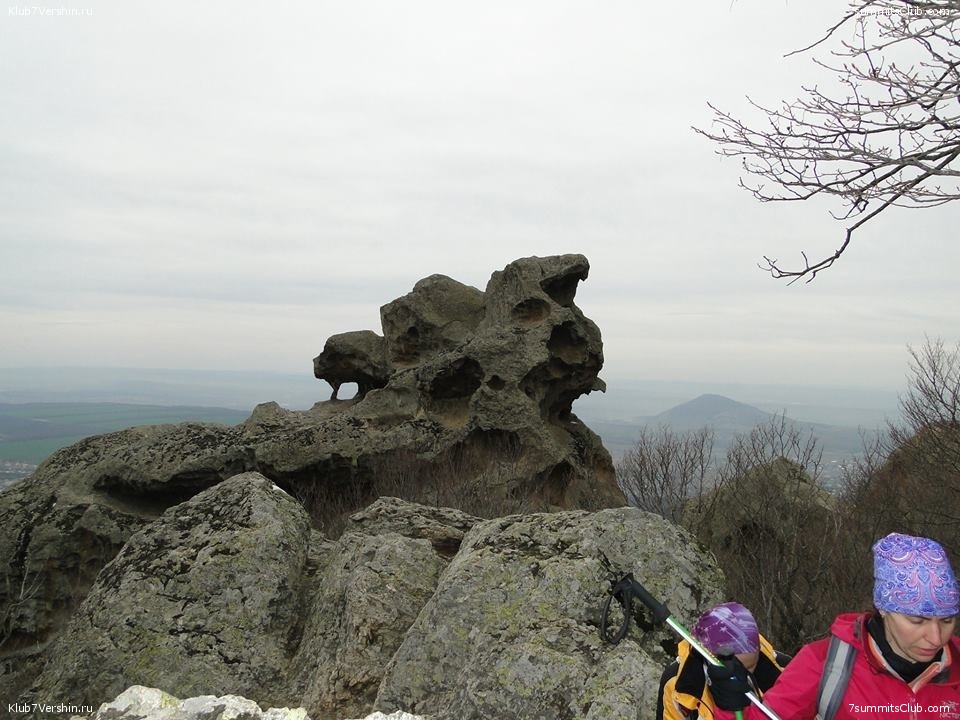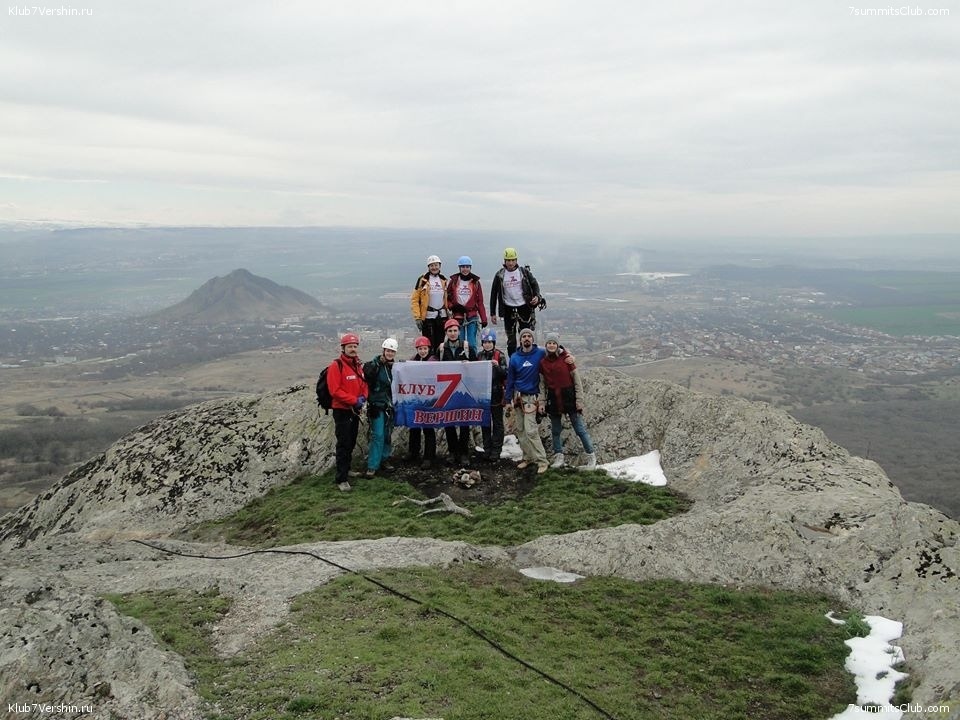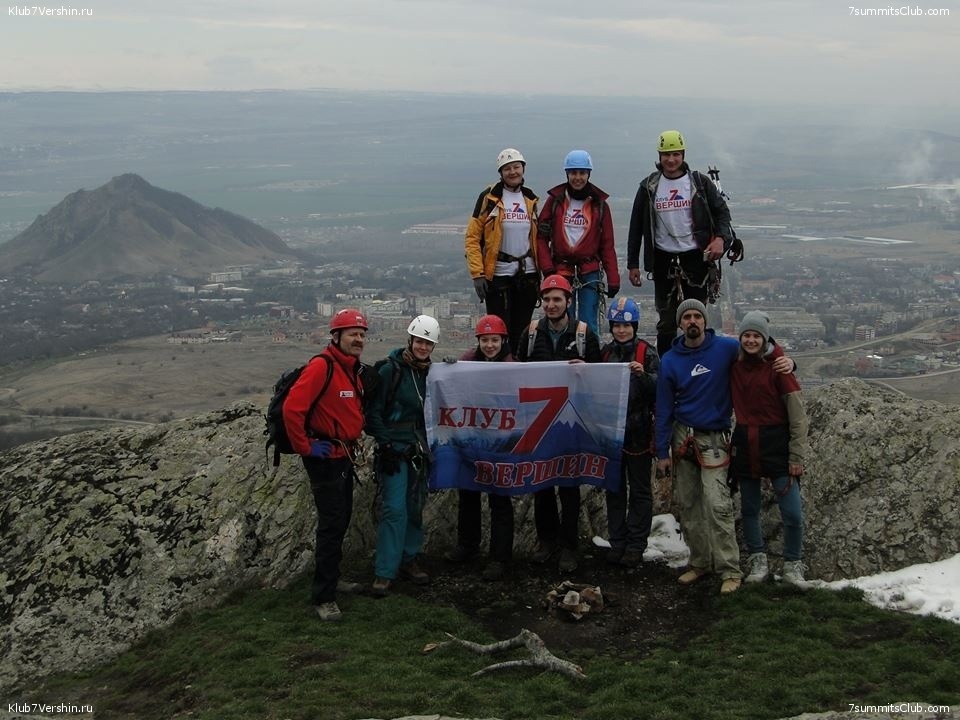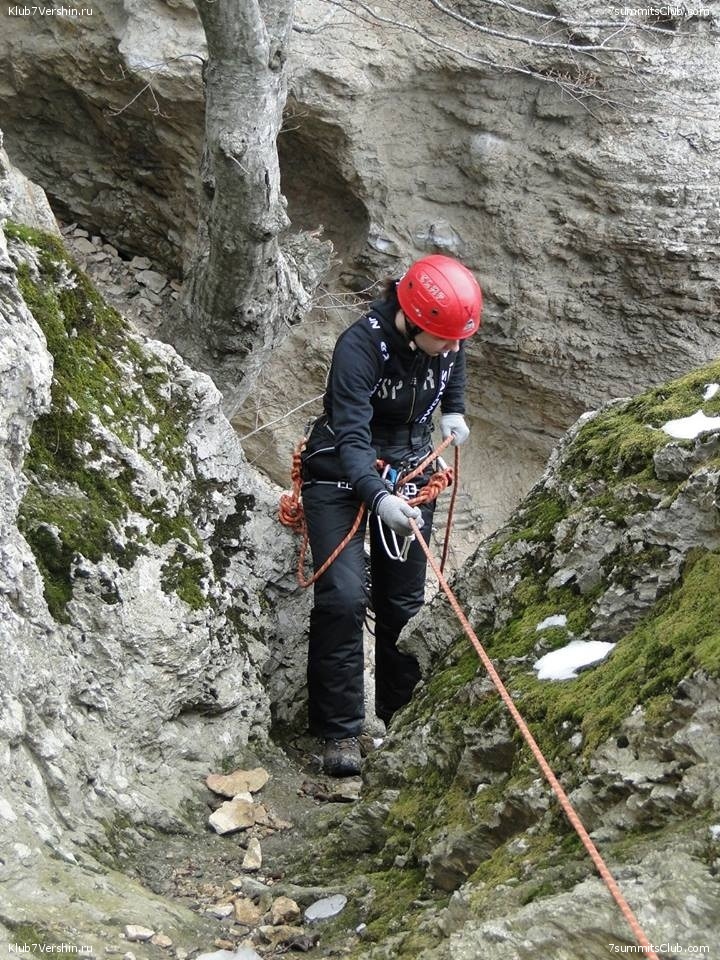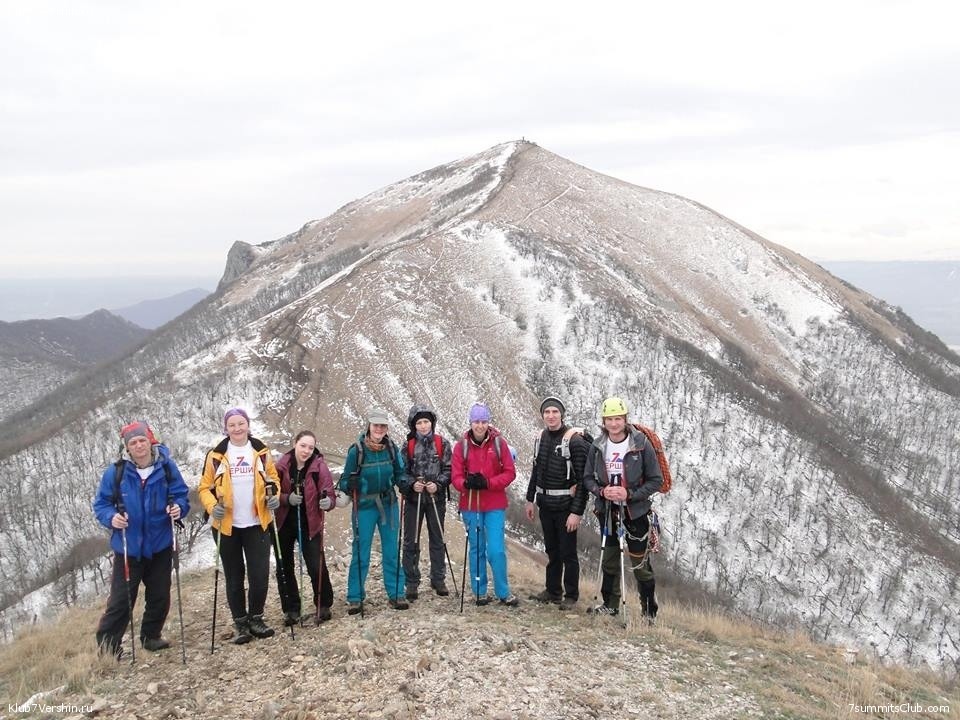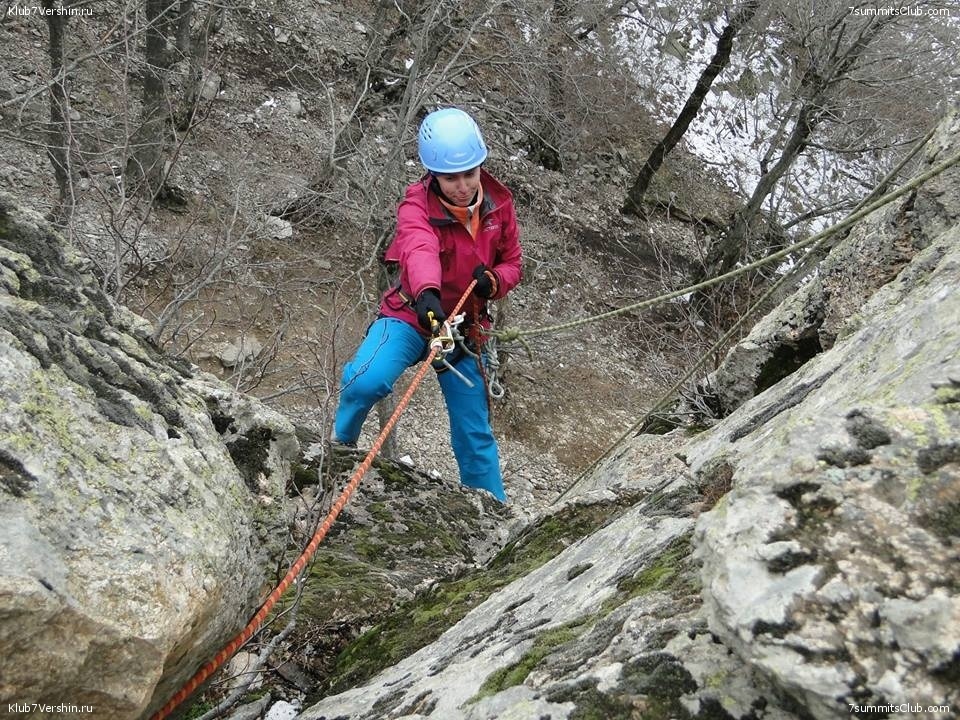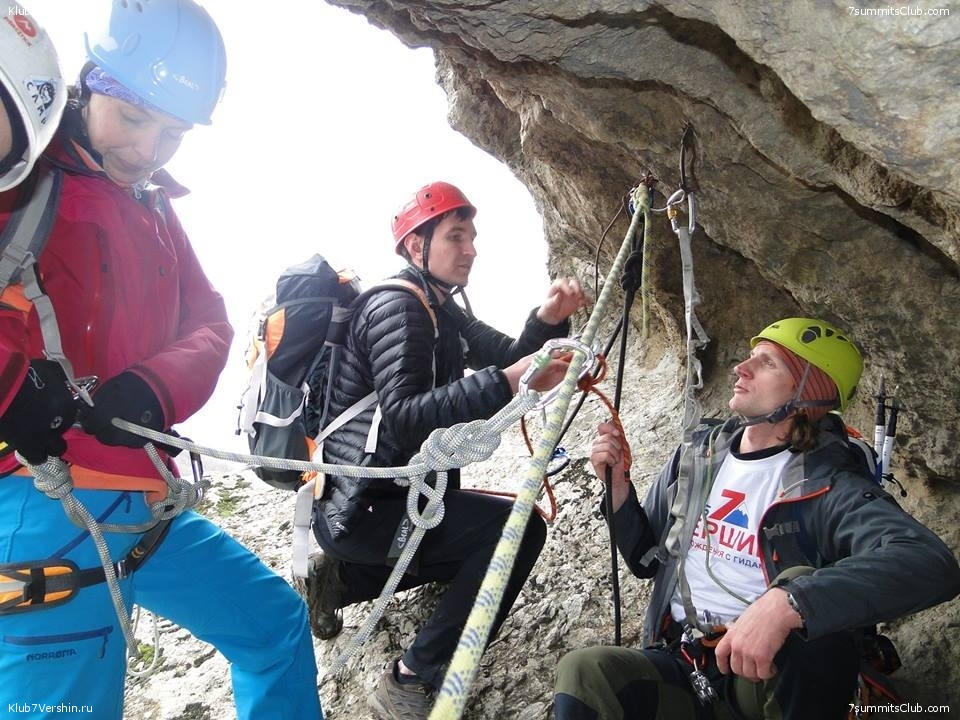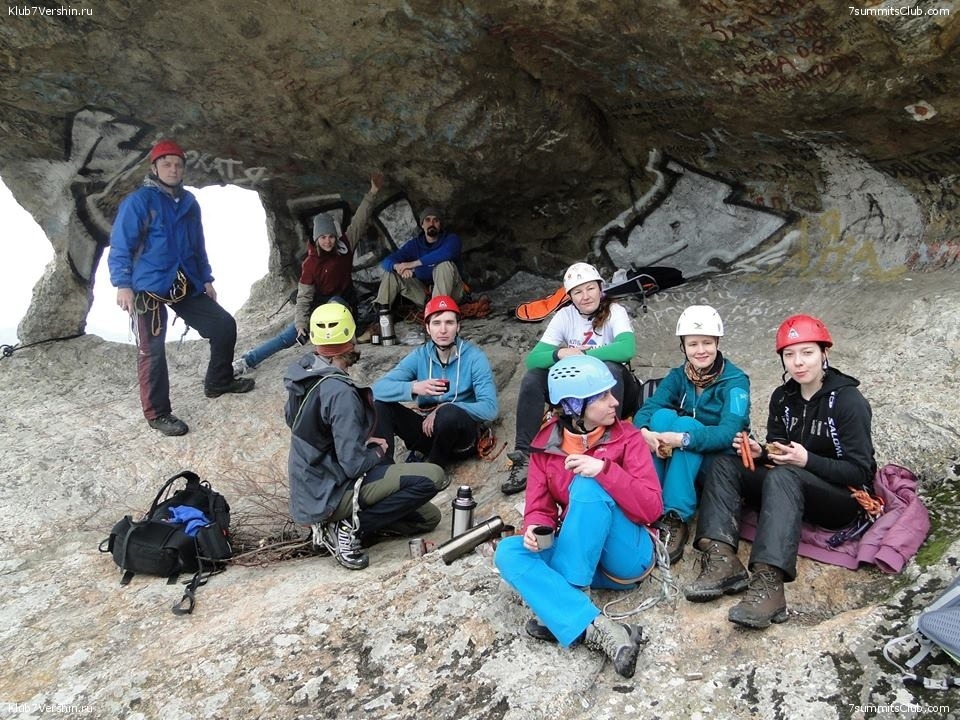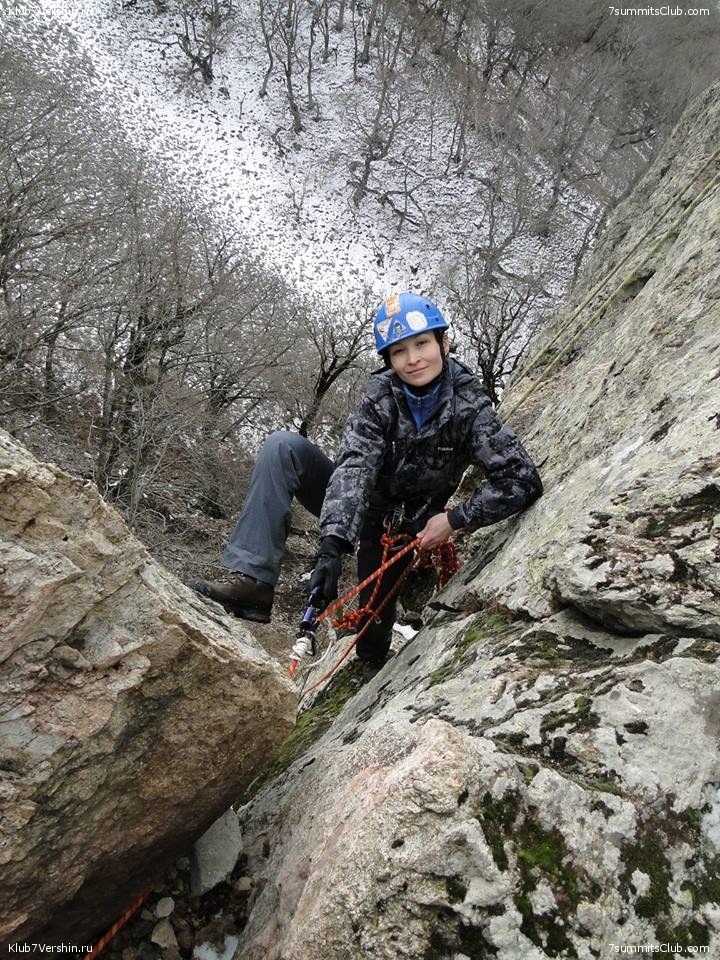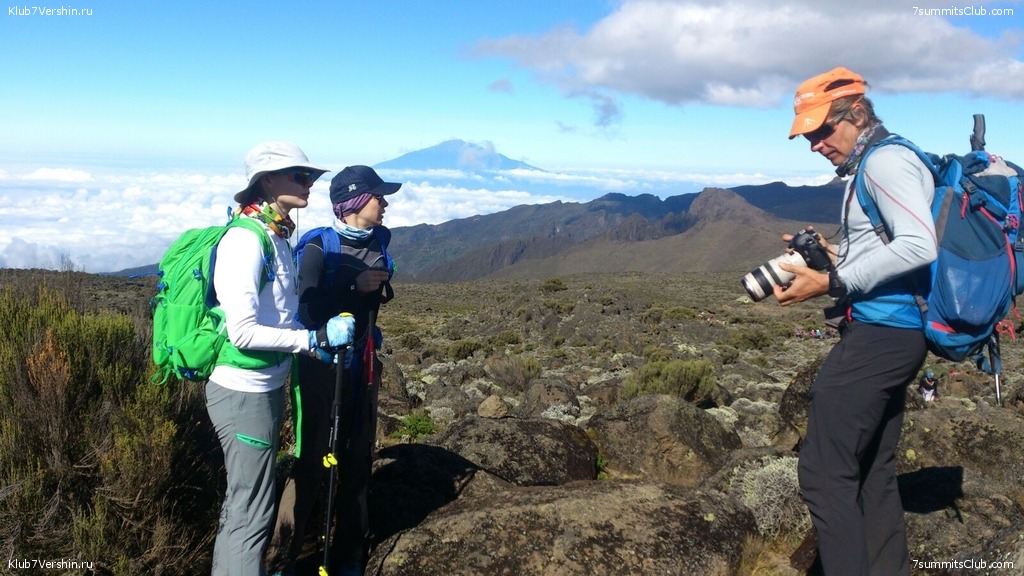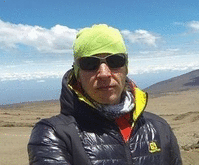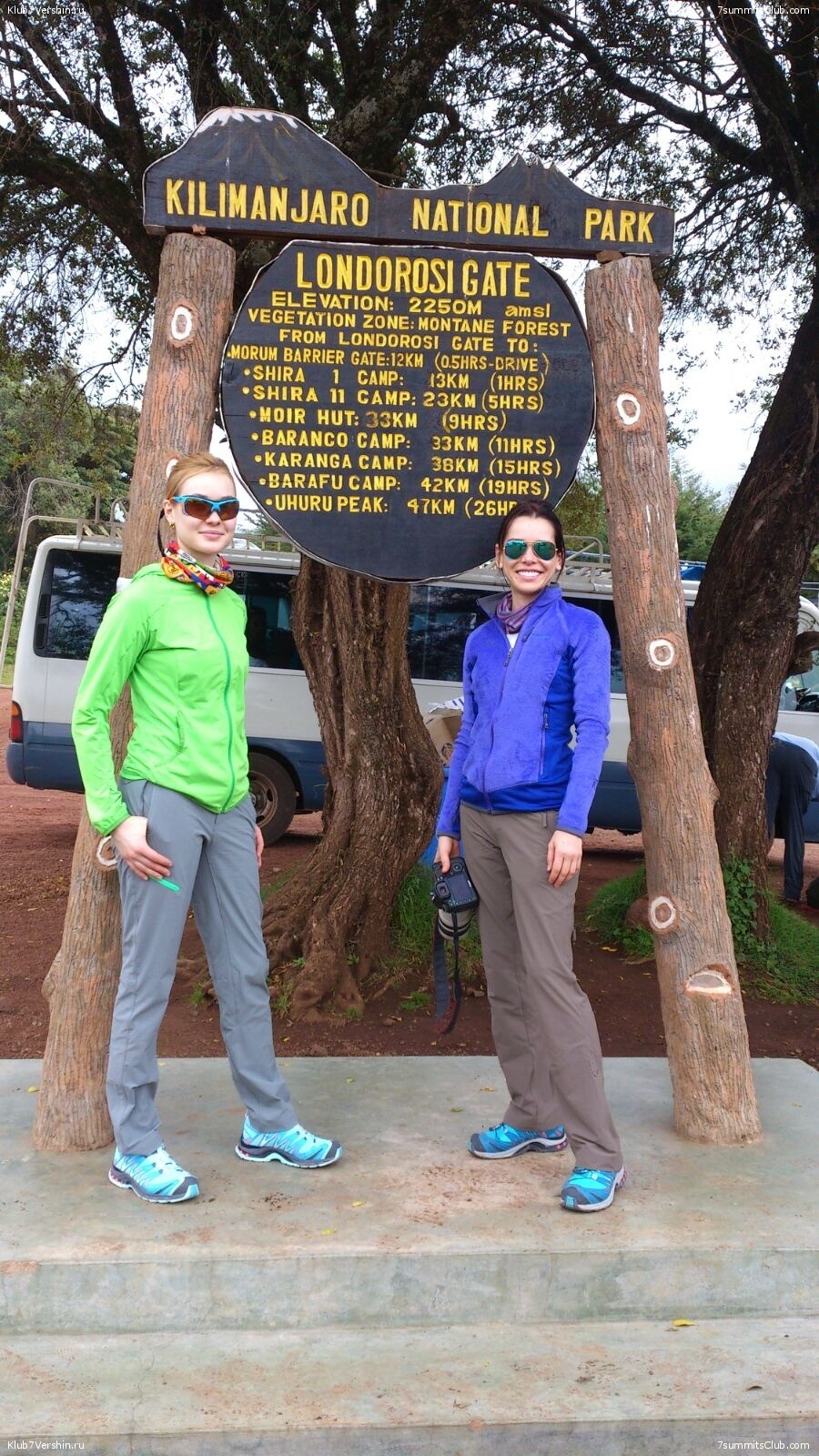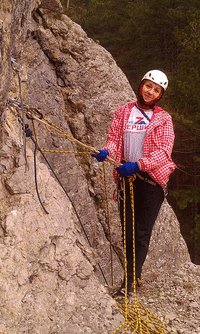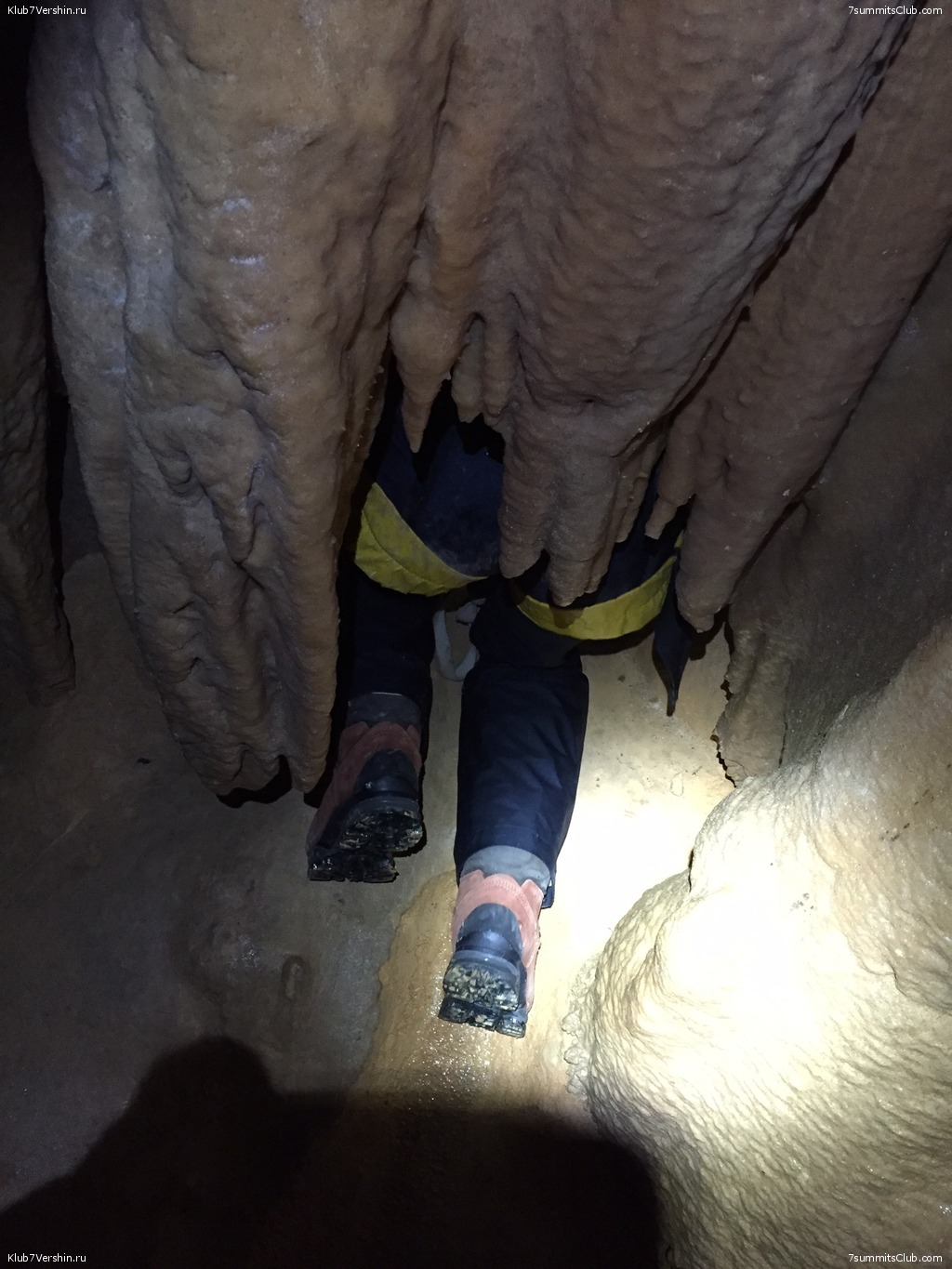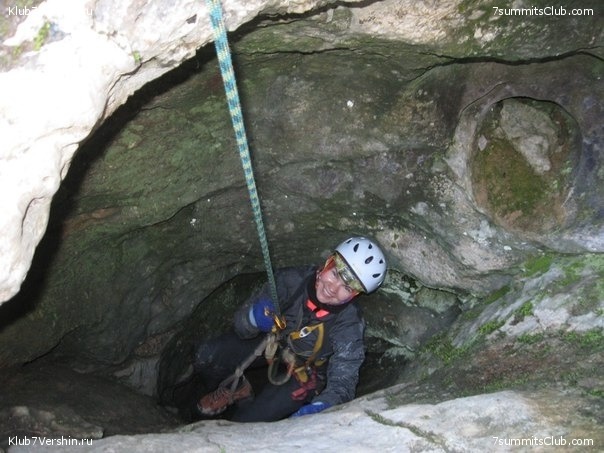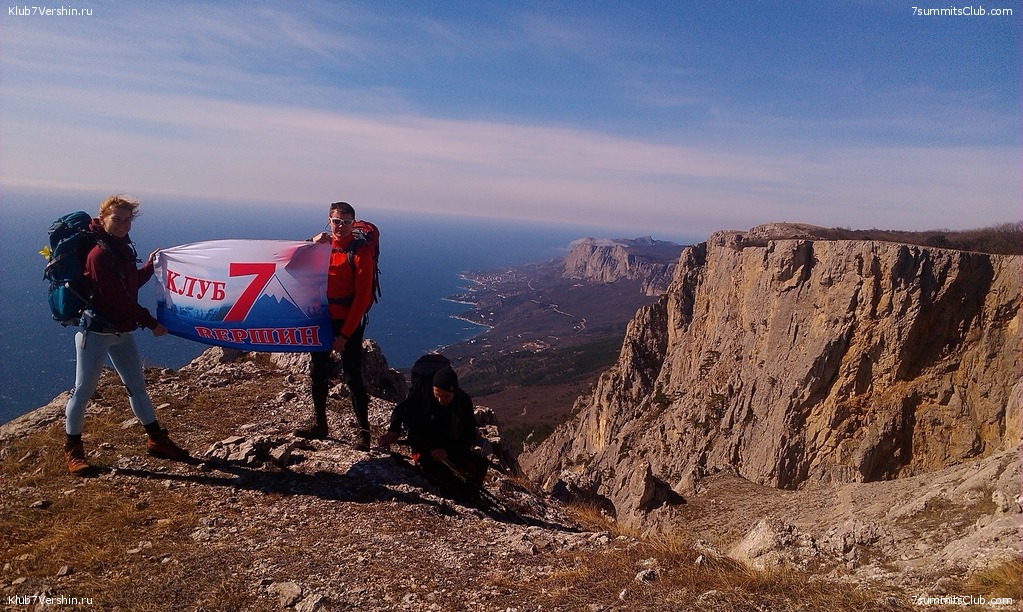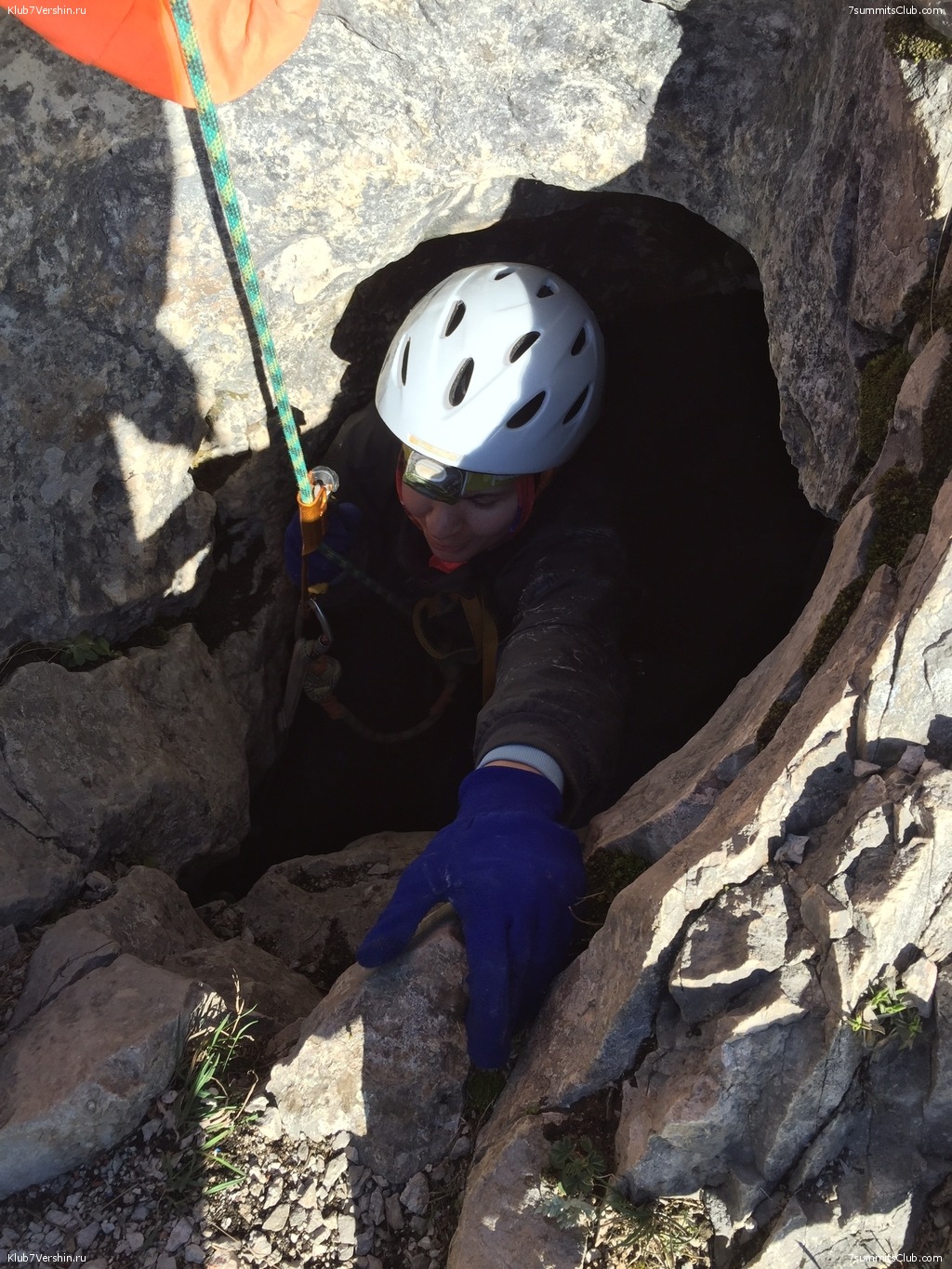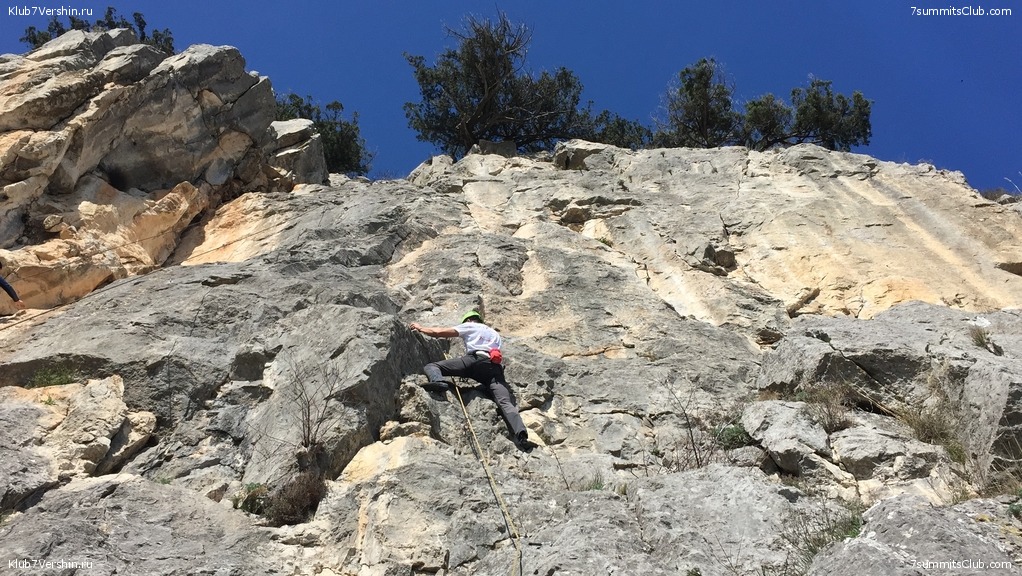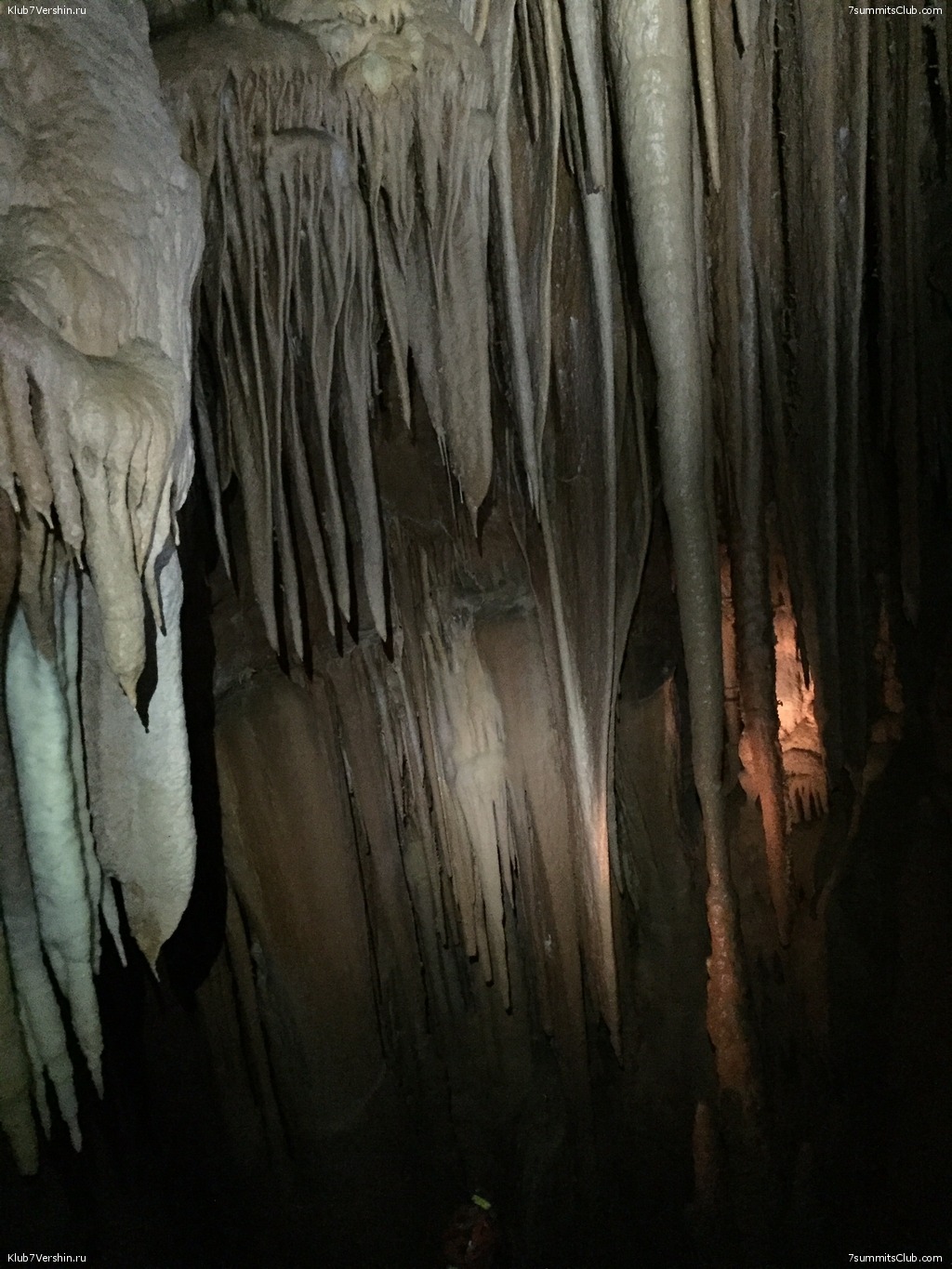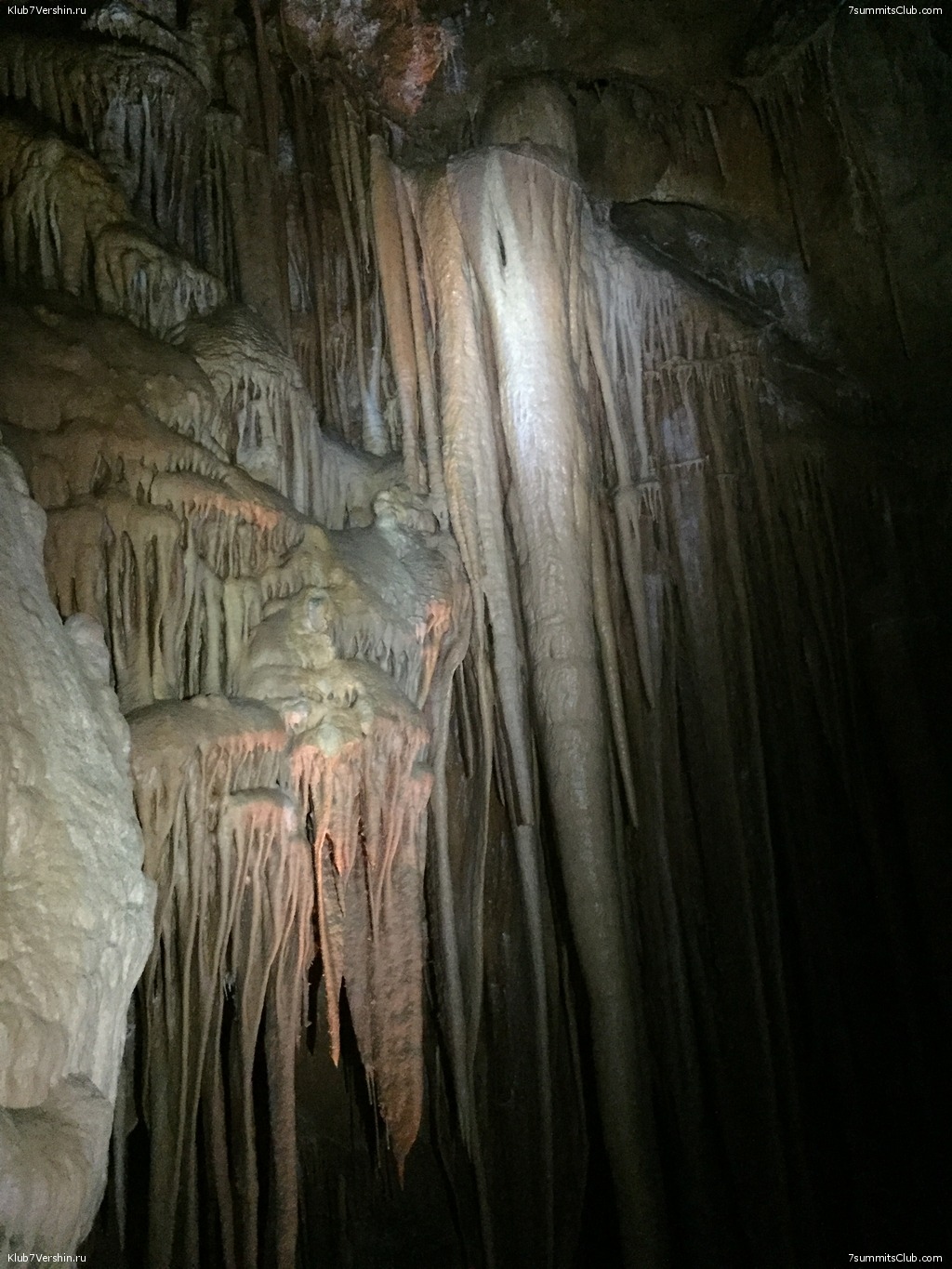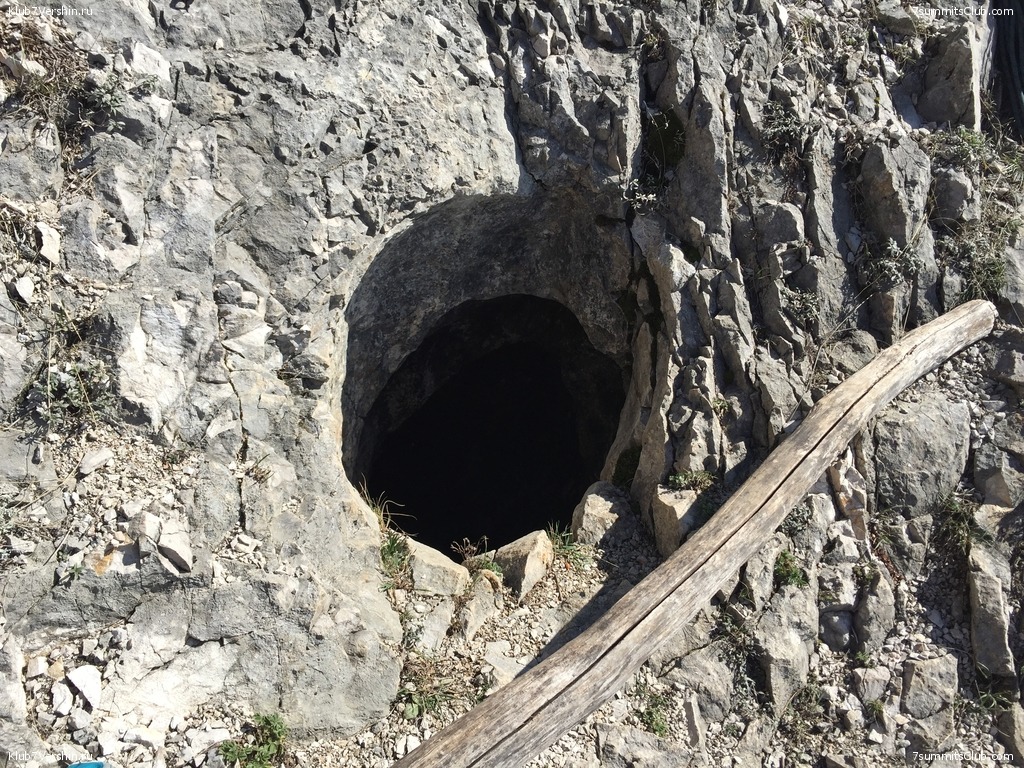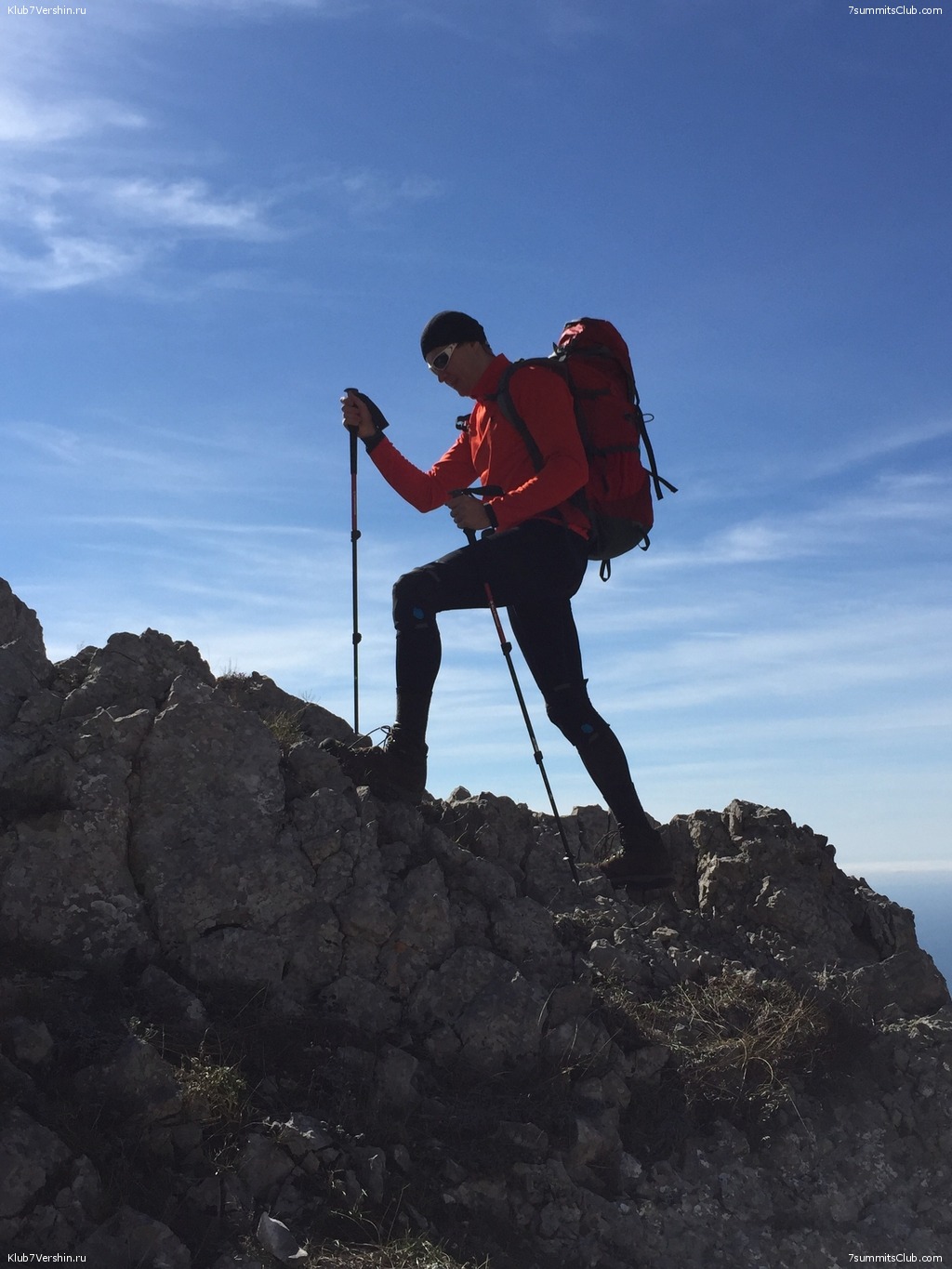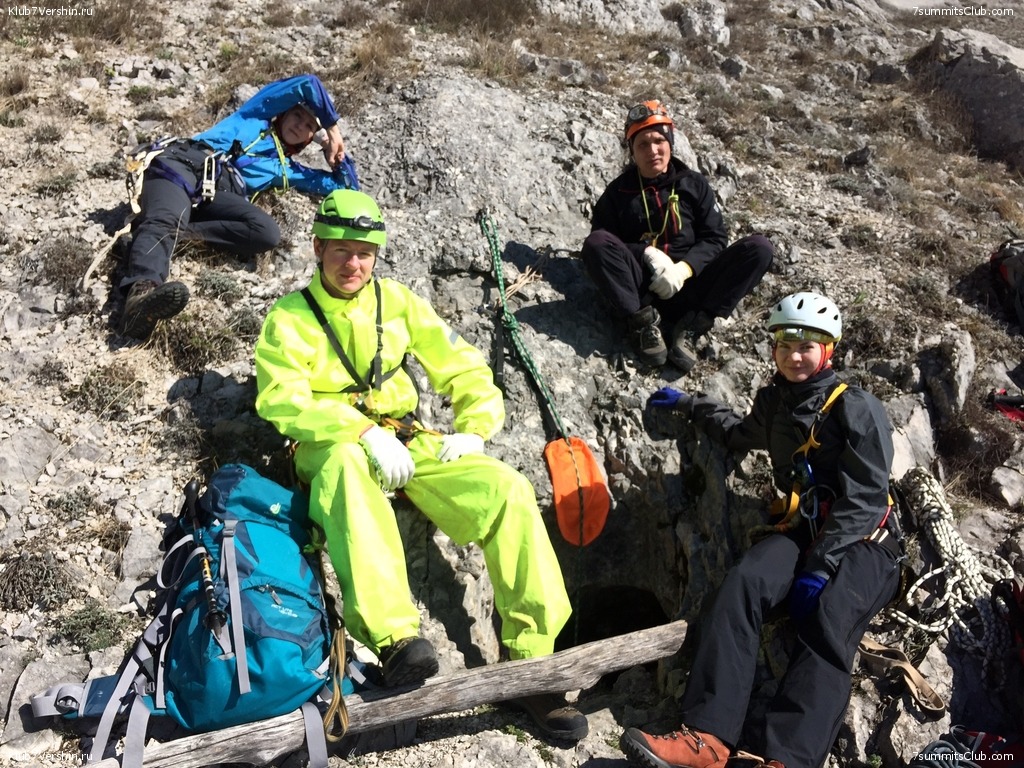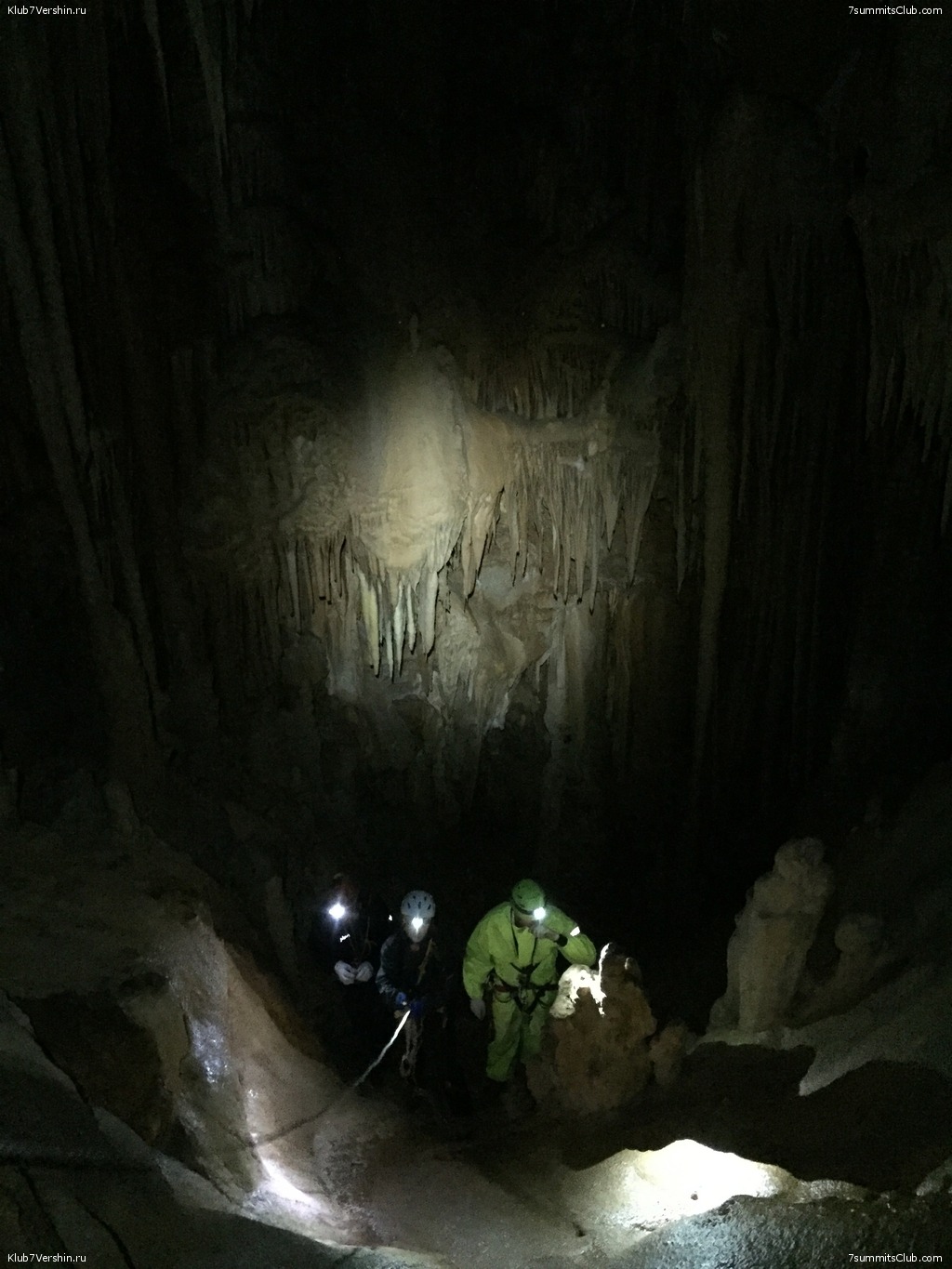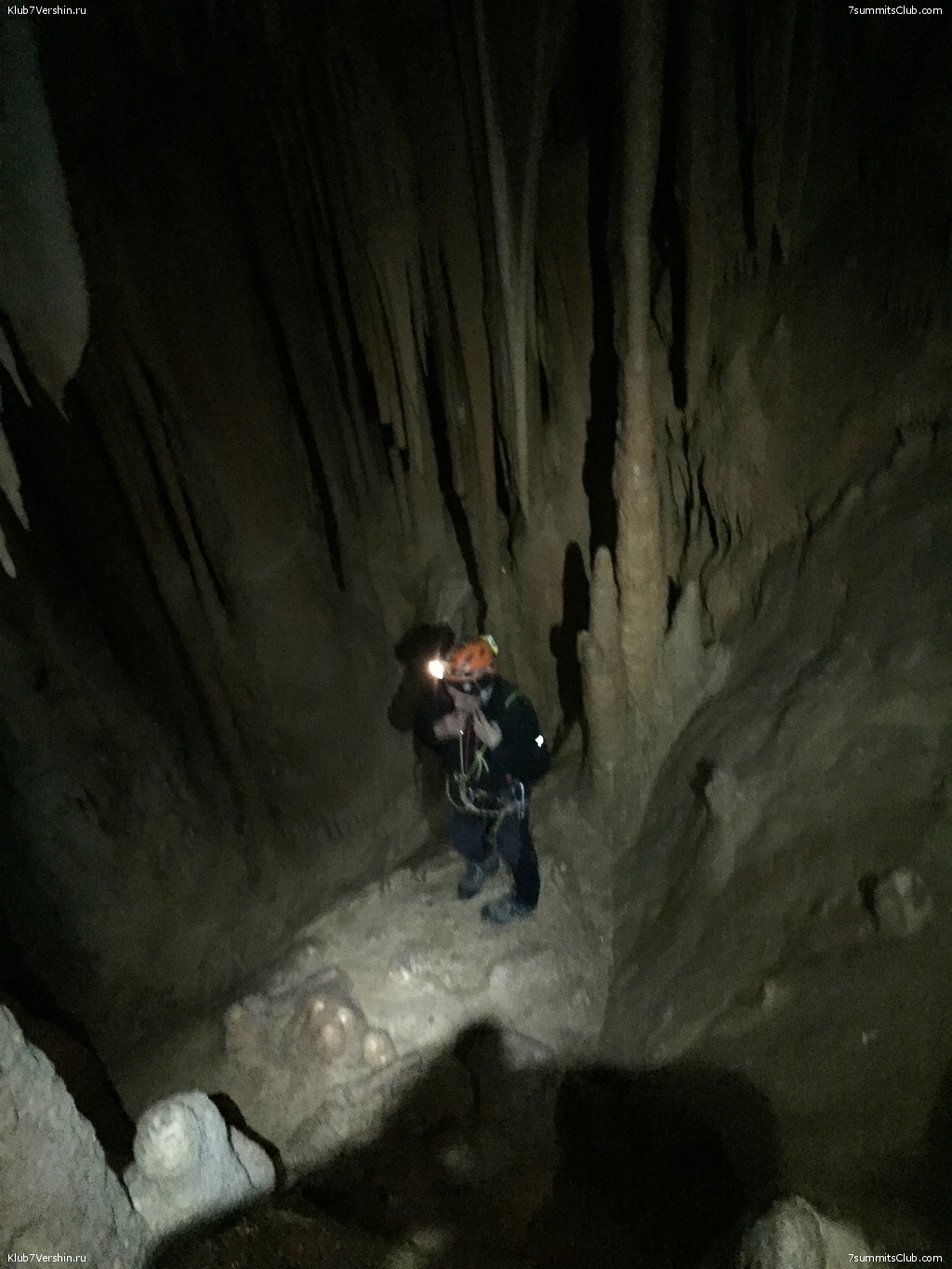All news - Page 246
SUMMIT !!! Group of Artem Rostovtsev successfully climbed highest volcano of North America!
Orizaba.
Hi, Seven Summits! It is Artem Rostovtsev, Mexico, the State of Puebla. This morning, till noon, we were at the top of the peak of Orizaba. We started at 2a.m., planned for 8 hours to reach the summit. But we have prevented by sudden ...
Hi, Seven Summits! It is Artem Rostovtsev, Mexico, the State of Puebla. This morning, till noon, we were at the top of the peak of Orizaba. We started at 2a.m., planned for 8 hours to reach the summit. But we have prevented by sudden cracks. So I inform all that Orizaba became cracked. The glacier is in the cracks. But we do not stop, only slowed down for one hour. While looking for where to go, where to jump. And at 11-30 we were already on the top. Now we are down and we are resting in the city of Puebla. So it is possible to congratulate all us with the successful ascent. The whole group was at the same time on the summit. The weather pleased, ice conditions - not.
Future plans - cultural and historical leisure.
Hello from Mexico! From Artem Rostovtsev.
In the northerly direction still there is delay. Because of it, Alex Abramov will not fly to the Pole
Unfortunately, when everything seemed ready for the beginning of the charter chains from Svalbard to Barneo, ice shifts came there. And the ice platform, on which runway was built, was spited Here's how it looked: ...
Unfortunately, when everything seemed ready for the beginning of the charter chains from Svalbard to Barneo, ice shifts came there. And the ice platform, on which runway was built, was spited
Here's how it looked:
Our workers had to find quickly a new ice platform and invent all sorts deals for replacement. They found a new ice platform and now in an emergency order they started for a construction of a new airport. All this caused a delay in the beginning of the expeditions to the North Pole.
Expeditions, with participants from different countries, all remain in the capital of Spitsbergen, Longyearbyen - waiting for news about the opening of the Barneo ice camp. The 7 Summits Club Team is also fully ready to fly to Svalbard and further flight to the North Pole. But due to flight delays the captain of the 7 Summits Club Alexander Abramov decided to postpone his participation in the expedition to the North Pole for the next year. He has to fly to Kathmandu to prepare for the annual meeting of the participants of the expedition on Everest.
News of the 1st Russian women's expedition to Everest. Press release
March 31th, the 7 Summits Club held a gala evening dedicated to the beginning of the Everest expedition. Vice-president of the Federation of Mountaineering of Russia (FAR) Ivan Dusharin said parting word to members of the 1st Russian ...
March 31th, the 7 Summits Club held a gala evening dedicated to the beginning of the Everest expedition. Vice-president of the Federation of Mountaineering of Russia (FAR) Ivan Dusharin said parting word to members of the 1st Russian expedition on Everest. He reminded that the expedition is officially supported by the federation and included in the calendar of events of FAR. He gave members of expedition little flags for hoisting to the summit.
President of the Moscow Federation of Mountaineering Alexei Slotyuk gave them one, but a big flag for the entry to the top.
The next day, the famous traveler and the priest Fedor Konyukhov blessed the team in his chapel in the center of Moscow.
Press release of the "1st Russian Women's Everest Expedition"
Dates: from April 12th to May 31th, 2016.
Organizer: 7 Summits Club.
The film crew of Channel One studio RD Valdis Pelsh will take part in the expedition and to continue filming that started last year.
The expedition is supported by the Russian Mountaineering Federation, the Federation of Mountaineering and Climbing in Moscow and Red Fox company.
Information about the project and participating:
Seven women from Russia are taking part in the 7 Summits Club Everest expedition in 2016. This has never been and probably never will. The project turns out unique.
Members:
- Liana Chabdarova - made 6 of 7 summits of the World and all the 7 volcanoes. She pretend to be the first Balkar (Elbrus region) woman climbed Mount Everest.
- Irena Kharazova - climber on 5 of the 7 summits.
- Marina Gevorkyan - media manager, general director of "Snob" project and an experienced climber, will attempt to climb the North Col (7000 m).
- Nadezhda Voskresenskaya - more than 10 years in mountais, will attempt to climb the North Col of Everest (7000m).
- Christina Kozlova - Director and producer of the film crew.
Director-producer, executive producer at RD Studio.
- Elena Abramova - the daughter of Alexander Abramov will attempt to climb the North Col of Everest (7000m)
7. Ludmila Korobeshko - two-times Everest summiter, two-times Seven Summits
Alex Abramov - expedition leader
Sherpas Team
NEWS BARNEO (NORTH POLE) EXPEDITION-2016. The first flight on the ice camp is made
The ice airdrome Barneo is open. April 3th in the morning , the first group from Barneo ice camp reported on the readiness of the ice runway for the reception a plane from Longyearbyen. On the morning the An-74 with the expedition team on ...
The ice airdrome Barneo is open. April 3th in the morning , the first group from Barneo ice camp reported on the readiness of the ice runway for the reception a plane from Longyearbyen. On the morning the An-74 with the expedition team on board flew to Barneo. The plane succefully landed on the ice airfield. On the ice camp a team that will build the camp was left. Construction of the camp has already begun. The next flight is scheduled for tomorrow, when Barneo said that already established residential modules where possible place people.
The temperature at -27 * Barneo. Solar, wind, 2 m / s. Coordinates: N 89 * 16 '673' and 075 * 48 E '979'.
Expedition Everest-2016 was blessed by Fyodor Konyukhov!
Everest.
On Friday, 1th April, a large group of members of the expedition 7 Summits Club Everest-2016 and their sympathizers came to visit our friend, great traveler and a great man Fyodor Konyukhov. They came for a blessing. And they got it. The ...
On Friday, 1th April, a large group of members of the expedition 7 Summits Club Everest-2016 and their sympathizers came to visit our friend, great traveler and a great man Fyodor Konyukhov. They came for a blessing. And they got it. The action takes place in the Church of St. Nicholas in the Lower Sadovniki, the so-called house-museum of Konyukhov. Or, in other words, "a chapel in memory of the dead sailors and travelers" at the art workshop of Konyukhov. All participants are very impressed with what happened, from visiting unique places, to communicate with a tireless worker, an artist and a good man Father Fyodor.
Photos by Artem Rostovtsev from Guatemala
Orizaba.
Today, the first part of the travel of Artem Rostovtsev’s group to Central America ends. Goodbye, Guatemala! The country is somewhat struck by the abundance of mountains, natural beauty and exoticism of everyday urban life. Ahead - ...
Today, the first part of the travel of Artem Rostovtsev’s group to Central America ends. Goodbye, Guatemala! The country is somewhat struck by the abundance of mountains, natural beauty and exoticism of everyday urban life. Ahead - Mexico and climbing on snowy Orizaba Peak.
Photos from the ascent of the highest mountain in the country Tajumulco Volcano (4220 m)
Chronicle of the festive evening of the 7 Summits Club, presenting the women's team Everest 2016
Everest.
March 31th the 7 Summits Club held a traditional evening dedicated to the traditional spring event - the departure of the expedition to Everest. Traditionally, there were many people with different ages, experience and wealth. ...
March 31th the 7 Summits Club held a traditional evening dedicated to the traditional spring event - the departure of the expedition to Everest. Traditionally, there were many people with different ages, experience and wealth. Traditionally, half of them listened to, and the other half talking to each other "in couloirs" (not in the mountain!). Traditionally, almost all left with regret, and traditionally we did not have enough time to make the scheduled. In short, this is what we call a success of the evening!
At first (unplanned) audience watched film "Messner". Then Alex Abramov, the head of all, including the Everest 2016 expedition opened the festive evening.
Alexander Abramov. Opening the evening. Few words.
History. Everest 2003-2005. Difficult experience and triumph of Sergei Larin (alone on the summit 50 years after Hillary and Tenzing)
Drama of 2006, and the success of 2007 - Lyudmila Korobeshko.
Abramov - Presentation of the Women's Team Everest. And the male part of.
Delivery of symbols. Ivan Dusharin from the Russian Mountaineering Federation
Delivery of symbols. Alexey Slotyuk from Federation of mountaineering and rock-climbing of Moscow.
Alexander Yelkov: women on Everest (historical review)
Greetings veterans:
Nicholay Cherny
Vladimir Shataev
Yuri Tinin
Songs. Oleg Banar
Everest in 2012 and the program Alpari on top of the world. Ivan Dusharin
Everest 2014 Natalia Matusow. On a perfect team.
You could buy paintings of climbers Oleg Fedorov and Bogdan Sadowski
Our soponsor: Thule
Gala evening of the 7 Summits Club, dedicated to the departure of the expedition "Everest - 2016"
Everest.
Gala evening of the 7 Summits Club, dedicated to the departure of the expedition "Everest - 2016" The 7 Summits Club invites all March 31 (Thursday), beginning at 20.00 Since 2003, we have organized 12 expeditions to Everest, ...
Gala evening of the 7 Summits Club, dedicated to the departure of the expedition "Everest - 2016"
The 7 Summits Club invites all March 31 (Thursday), beginning at 20.00
Since 2003, we have organized 12 expeditions to Everest, and this year it will be a 14th expedition. All were led by Alex Abramov. This year we have 26 members.
On this evening:
- We remember all our Everest expedition, from 2003 to 2015;
- Participants of those expeditions themselves will talk about;
- We present the team of Everest in 2016;
- We present the 1st Russian women's expedition to Mount Everest;
- We listen songs, play a lottery, chat with friends etc...
Address: Moscow, Bolshaya Pereyaslavskaya, 7
Metro Prospekt Mira
SUMMIT! Alexander Samsonov, Mikhail and Marina Mendoza-Blandons climbed Mount Kilimanjaro
Kilimanjaro.
A group of the 7 Summits Club: Alexander Samsonov, Mikhail and Marina Mendoza-Blandons - successfully climbed the highest point in Africa, Uhuru Peak on the Mount Kilimanjaro. Everything is fine! Now they are down to the ...
A group of the 7 Summits Club: Alexander Samsonov, Mikhail and Marina Mendoza-Blandons - successfully climbed the highest point in Africa, Uhuru Peak on the Mount Kilimanjaro. Everything is fine! Now they are down to the Millennium intermediate camp for the overnight, tomorrow they have to go back from the route. Our congratulations!
The place for the Barneo ice camp is found!
The 7 Summits Club this year will send two groups of the North Pole (Last degree). Alexander Abramov will lead the first group, the second - Anastasia Kuznetsova. ATTENTION! Important news. Our explorers have determined the ice ...
The 7 Summits Club this year will send two groups of the North Pole (Last degree). Alexander Abramov will lead the first group, the second - Anastasia Kuznetsova.
ATTENTION! Important news. Our explorers have determined the ice floe on which the Barneo camp to be built. That's it, "address": N 89 * 15'353 "E and 87 * 00'417
IL-76 cargo plane dropped, everything went well. The team started to prepare the runway.
Tractors working well, despite the cold (as well as humans). A lot of work - something has to shoot down and file down that, on the contrary, to fill. Therefore, there is now hot work. They say they will clear the runway is not earlier than after 3-4 days. On Sergey Panteleev photographs show how they have to work...
Photos from the training of 7 Summits Club on the climbing wall
March 21, Monday, our next training session on the techniques of rock climbing was held in the gym in the DDS. Participants of our Mountain School are becoming more and more prepared for the upcoming climbing, both physically and ...
March 21, Monday, our next training session on the techniques of rock climbing was held in the gym in the DDS. Participants of our Mountain School are becoming more and more prepared for the upcoming climbing, both physically and psychologically. For all guests in training we prepared some surprises..
We invite you! Traditional evening of 7 Summits Club, dedicated to the departure of the expedition on Mount Everest will take place on 31 March. Beginning at 8 p.m.
Everest.
In early April our next Everest expedition will start, as usual led by Alexander Abramov. We return to the highest mountain in the world, the most desired climbing object after the terrible disaster, earthquake, 2015. In some ways, ...
In early April our next Everest expedition will start, as usual led by Alexander Abramov. We return to the highest mountain in the world, the most desired climbing object after the terrible disaster, earthquake, 2015. In some ways, this season will be unusual, something familiar. Our team will be the largest on the northern slopes, we traditionally put most comfortable, beautiful camp, we will do everything to succeed.
You will learn details of the expedition from the head, six-time climber on Everest Alexander Abramov. He will present the team, tell about the features of the current season. That, for the first time as part of our big event will be run purely female team led by Lyudmila Korobeshko. And also we will be able to communicate with the crew RD studio of Valdis Pelsh, which will continue its work on the filming of the movie for the First Russian TV Channel.
Address: Bol Pereyaslavskaya d. 7 Shop "Active Life".
March 31 ... Beginning at 20.00
And also you will be able to listen to reports on the climbing season 2015-2016 in the Southern Hemisphere. Our guides will talk about climbing in Antarctica, South America, Australia and Africa. We will introduce you to new projects, new programs coming summer season in the northern hemisphere. Come, you will find the atmosphere of companionship and a small treat from the 7 Summits Club.
The First Women Russian Everest Expedition - 2016
Everest.
March 16th, 2016 the board of Russian Mountaineering Federation formally endorsed the first women expedition to Everest from Russia. This year's 7 women from Russia take part in the Everest expedition, and first time in the history. ...
March 16th, 2016 the board of Russian Mountaineering Federation formally endorsed the first women expedition to Everest from Russia.
This year's 7 women from Russia take part in the Everest expedition, and first time in the history. And probably it never will be later. So the project turns out unique.
Dates of the expedition: from April 12th to May 31th, 2016.
RMF Board Meeting
Project Organizer - 7 Summits Club, with the support of RMF, FAiS Moscow, Red Fox company.
The expedition will be filmed film by a crew of Channel One, namely by RD studio of Valdis Pelsh
Project Manager - Lyudmila Korobeshko - 2-times Mount Everest summiter.
Team's coach Alexander Abramov, the leader of expedition - 6-times Mount Everest summiter.
Alex and Luda: the couple of recordsmen. The only family in the world, in which husband and wife twice fulfilled the program "Seven Summits". The only couple twice climbed to the top of Mount Everest together.
All Team members will be announced on March 31th at the annual meeting (party) of the members of the 7 Summits Club.
This weekend we opened the spring season in Nepal
Everest BC (Nepal).
On Sunday the first team of the 7 Summits Club in this season, arrived in Kathmandu. Tomorrow they will go to the trekking route to Everest Base Camp. This is Tatiana and Oleg Yusupov, who will be accompanied by representatives of our ...
On Sunday the first team of the 7 Summits Club in this season, arrived in Kathmandu. Tomorrow they will go to the trekking route to Everest Base Camp. This is Tatiana and Oleg Yusupov, who will be accompanied by representatives of our subsidiary Nepalese companies 7 Summits Adventures. This year, Nepal is waiting guests with a special sense. After the disastrous earthquake for local people is particularly important to get tourists back.
So, Welcome! Welcome!
Surprisingly, it turned winter climb
A guide of the 7 Summits Club Alexander Grebenyuk from Pyatigorsk: In the harsh conditions of winter we climbed one of the peaks of the CMS, which is called Sheludivaya (“scabby”). Wind, cold, light snow, did not prevent the ...
A guide of the 7 Summits Club Alexander Grebenyuk from Pyatigorsk: In the harsh conditions of winter we climbed one of the peaks of the CMS, which is called Sheludivaya (“scabby”). Wind, cold, light snow, did not prevent the carrying out of our task. All members of the School enjoyed the climb. Students of the School of Mines of 7 Summits Club on CMS received certificates signed by the President of the Club Alexander Abramov.
Program on ski tour in Georgia, Gudauri. Posted by Bidzina Gudzhabidze
Posted by Bidzina: (The third day of ski tour) "Hello everyone! Today we went to the Dena-ena, it was a great weather. One hour ski tour up and down to the Road about 30 minutes, good snow and solitude, around no soul, just the two of ...
Posted by Bidzina:
(The third day of ski tour) "Hello everyone! Today we went to the Dena-ena, it was a great weather. One hour ski tour up and down to the Road about 30 minutes, good snow and solitude, around no soul, just the two of us" .
(The fourth day ski tour), "In the last day we decided to climb to the meteostation at Mount Kazbek. The weather was very bad, we really needed stamina to walk this path. Vertical drop was about 2,000 meters, climbing from the village Gergeti took 6 hours. The descent took 2 hours. The goal is achieved. "
The program is completed, and in the meantime in Gudauri today dropped a big deep snow, the season is unpredictable gaining a new push.
See videos and photos from the ski-tour program with Bidzina Gudzhabidze and Konstantin Smirnov in Georgia (Gudauri, Kazbegi).
Alexander Grebenyuk on the second day of mountain school: we made traverse of Mount Beshtau
Good afternoon! This is Alexander Grebenyuk, Mountain School of the 7 Summits Club on the Caucasian Mineral Waters. The second day of our program ends. First, we worked on a climbing technique at Eagle Rock, on the western spurs of the ...
Good afternoon! This is Alexander Grebenyuk, Mountain School of the 7 Summits Club on the Caucasian Mineral Waters. The second day of our program ends. First, we worked on a climbing technique at Eagle Rock, on the western spurs of the mountain. And then we passed traverse of the three peaks: Small Beshtau – Main Summit - Curly. Now we are having a snack, drink tea, and we will go down to the cars. Today we have a happy event, one of the school students have a birthday. We congratulated him, congratulations.
All the best!
A Group of Artem Rostovtsev has gone down from Mount Kilimanjaro for further adventures
Kilimanjaro.
Hi, Seven Summits! It is Artem Rostovtsev, now not from Kilimanjaro, but simply from Tanzania, Tanzania flat. We have successfully come down from the mountain. Now we are enjoying the good weather at the bottom of mountains. There was ...
Hi, Seven Summits! It is Artem Rostovtsev, now not from Kilimanjaro, but simply from Tanzania, Tanzania flat. We have successfully come down from the mountain. Now we are enjoying the good weather at the bottom of mountains. There was no rain, all are surprised that we got wet every day. But climbing is now completed, all returned safe and sound. And full strength for further adventures. Greetings from Africa!
SUMMIT! Artem Rostovtsev with the group successfully climbed the top of Kilimanjaro
Kilimanjaro.
Hi, Seven Summits! It is Artem Rostovtsev to Kilimanjaro. Our group goes according to the plan, to be exact - everything is on schedule. In the plan we had no rain, but, unfortunately, every day watering. And now ... the ...
Hi, Seven Summits! It is Artem Rostovtsev to Kilimanjaro. Our group goes according to the plan, to be exact - everything is on schedule. In the plan we had no rain, but, unfortunately, every day watering. And now ... the droplets of rain on umbrella. Well, according to the schedule, today we have reached the summit of Kilimanjaro. We have already gone down in the Barranco camp and then go down further. All are very happy. You could not believe it, but I had a very professional camera in the hands of the whole week. I promise great photos. Greetings from Tanzania, Kilimanjaro! Artem Rostovtsev.
The Group completed the program in Crimea: everyone is happy, everyone wants to come again
Natalia Kartashova, a guide of the 7 Summits Club: Mountain School of the 7 Summits Club in Crimea just has completed its work. As promised, the program turned out to be quite eventful, diverse. Guests from Moscow discovered a new kind of ...
Natalia Kartashova, a guide of the 7 Summits Club: Mountain School of the 7 Summits Club in Crimea just has completed its work. As promised, the program turned out to be quite eventful, diverse. Guests from Moscow discovered a new kind of activity: caving. In the cave people saw all kinds of calcite sag. They learned the SRT system. Thanks to the support of our 7 Summits Club, equipment of new routes continues in the Crimea. Our team went one of the new routes. The route is a beautiful, easy enough to connect all beginners climbers.
Everybody is happy, everyone is tired, everyone wants to come back. Thank you all! Good luck!
